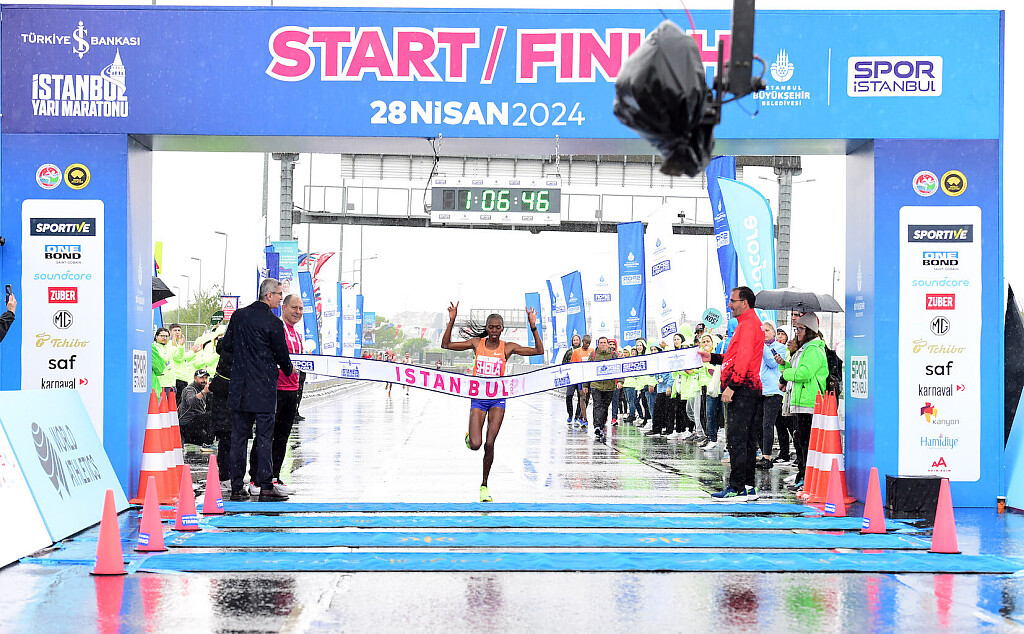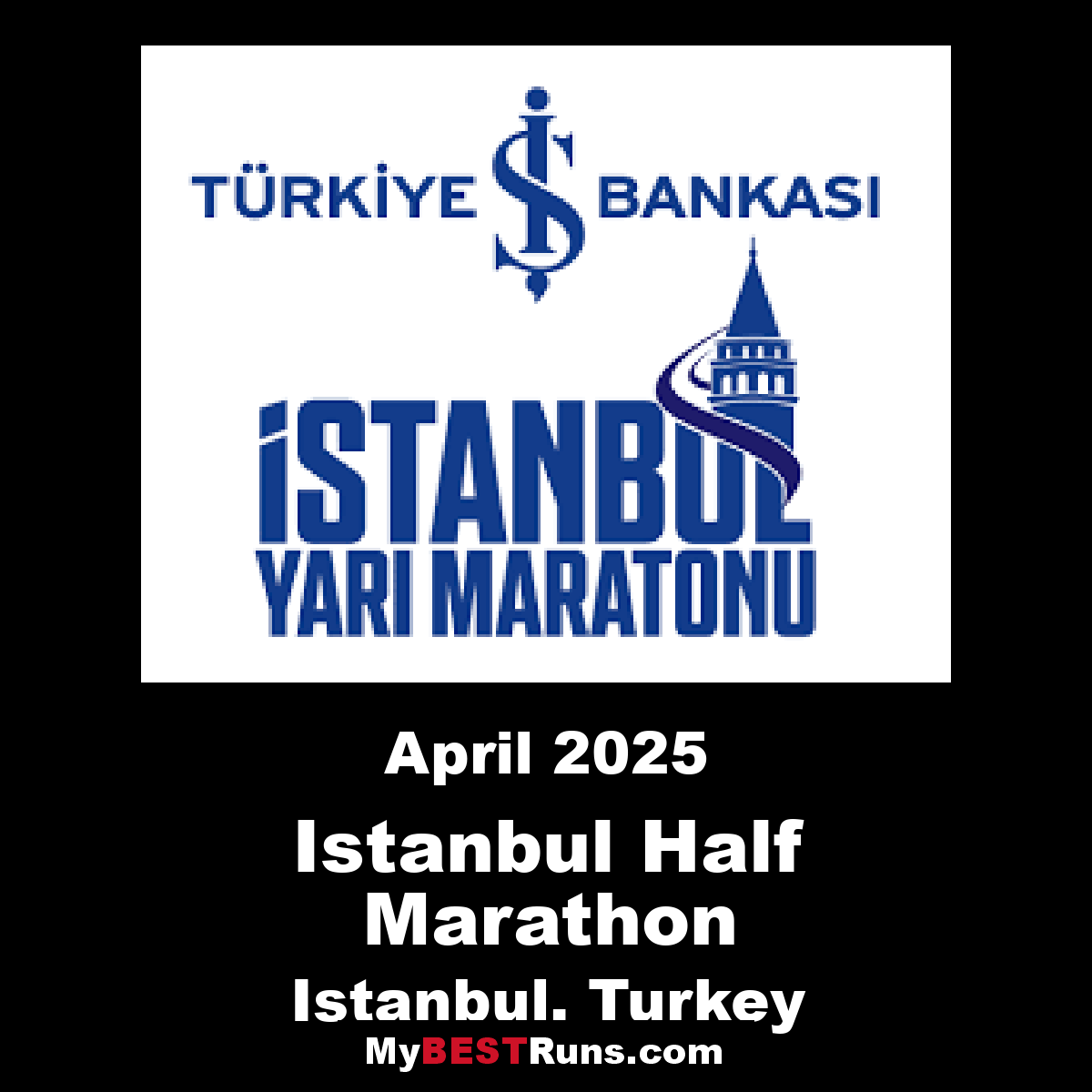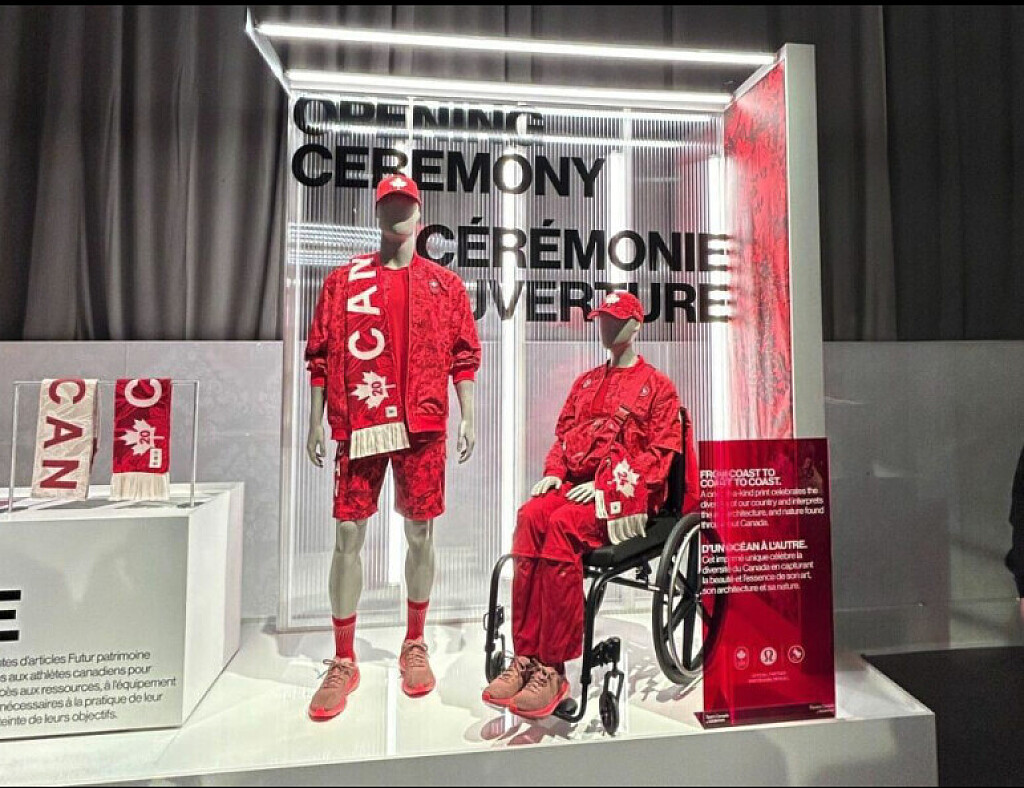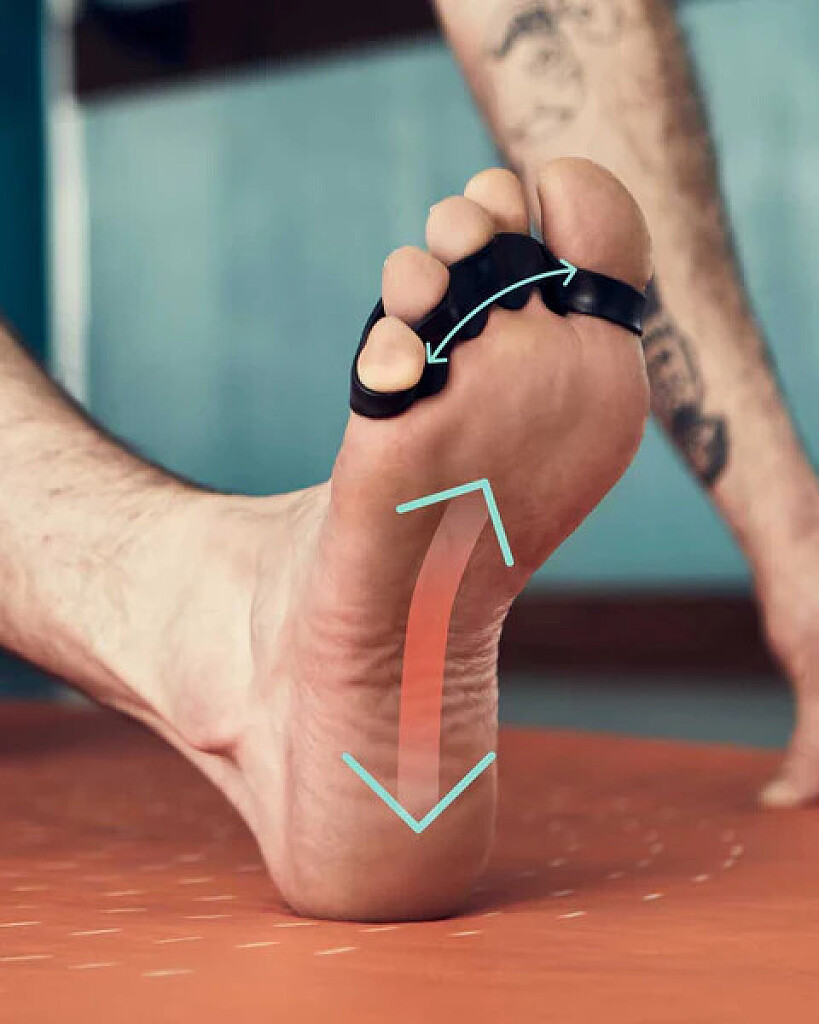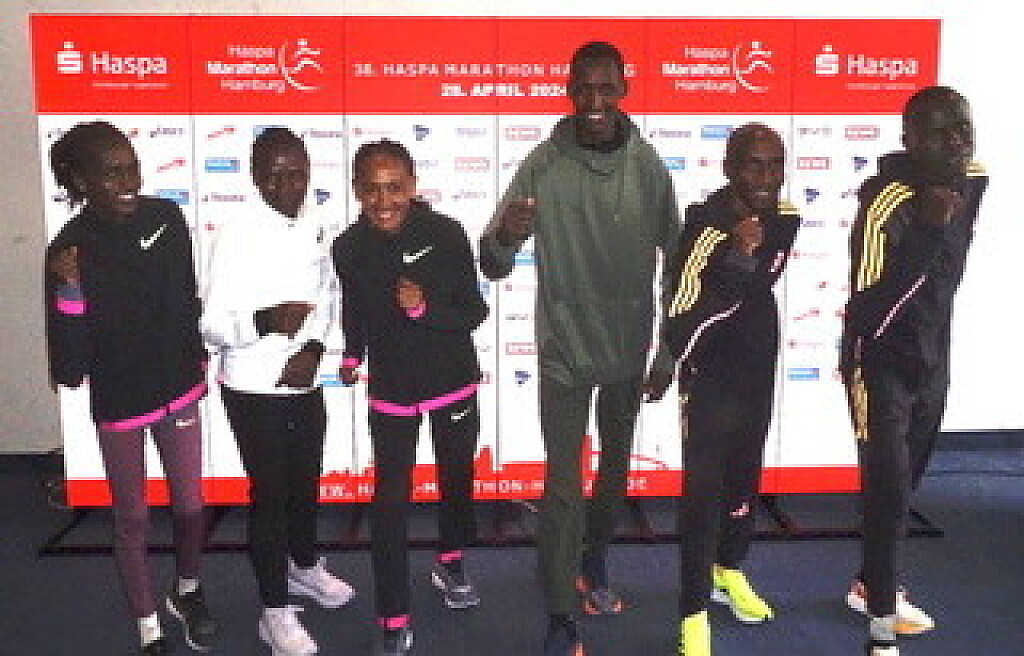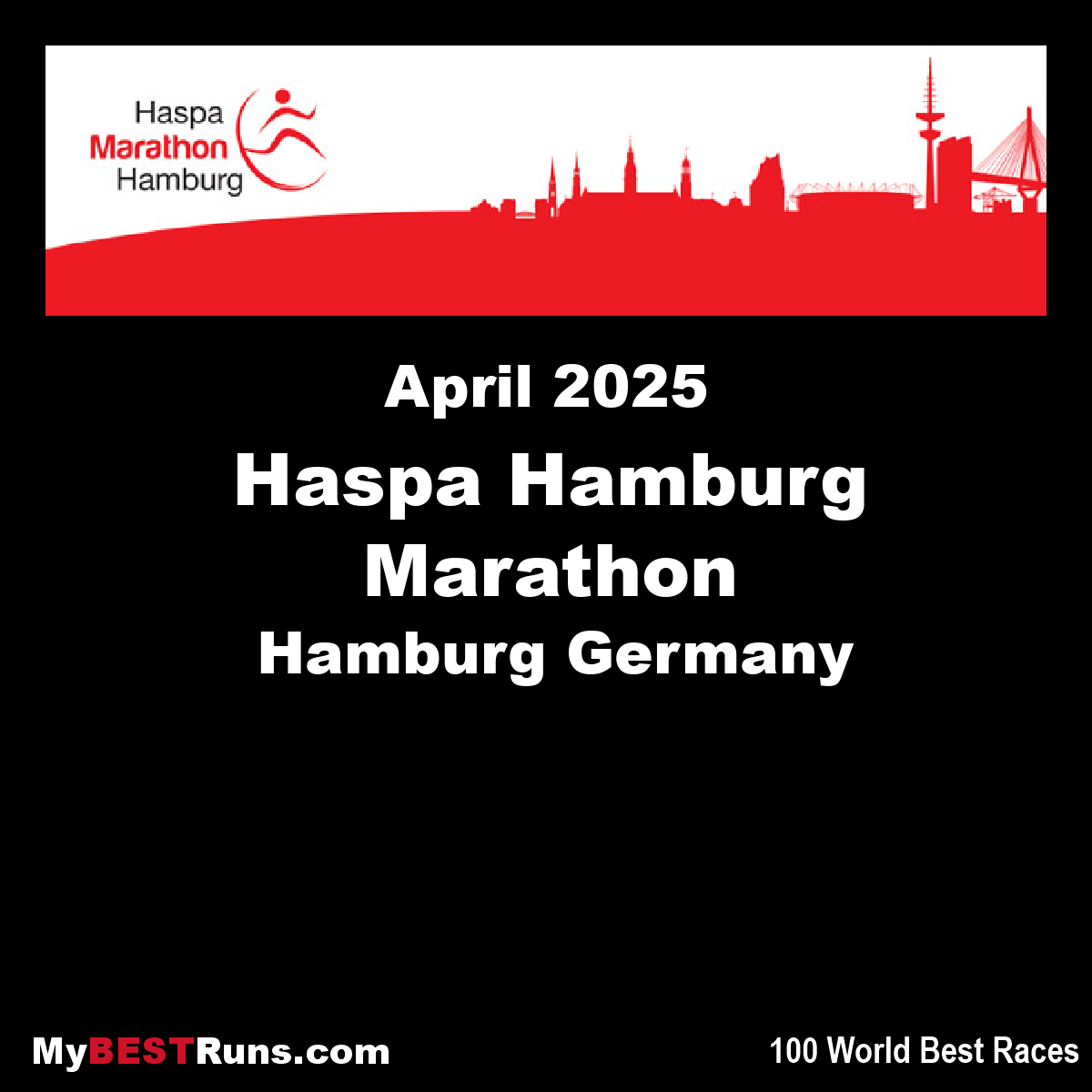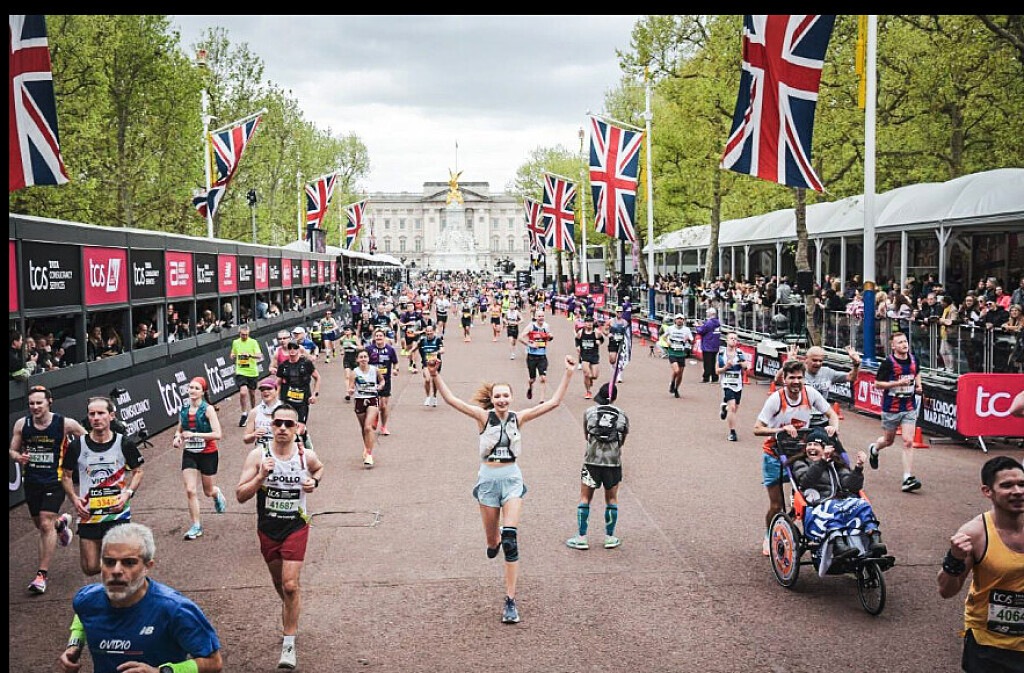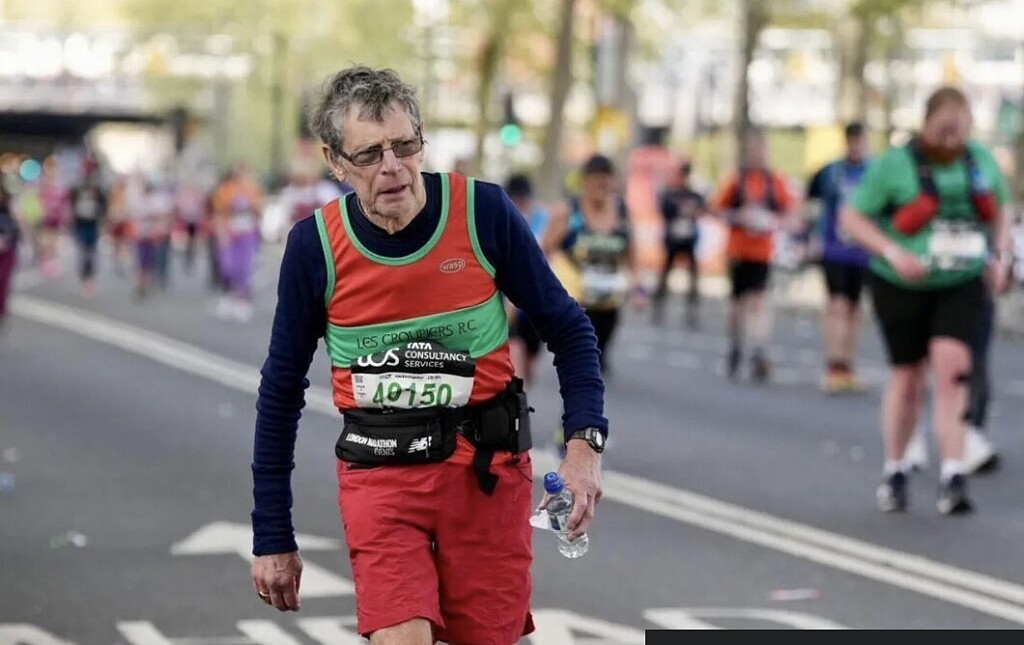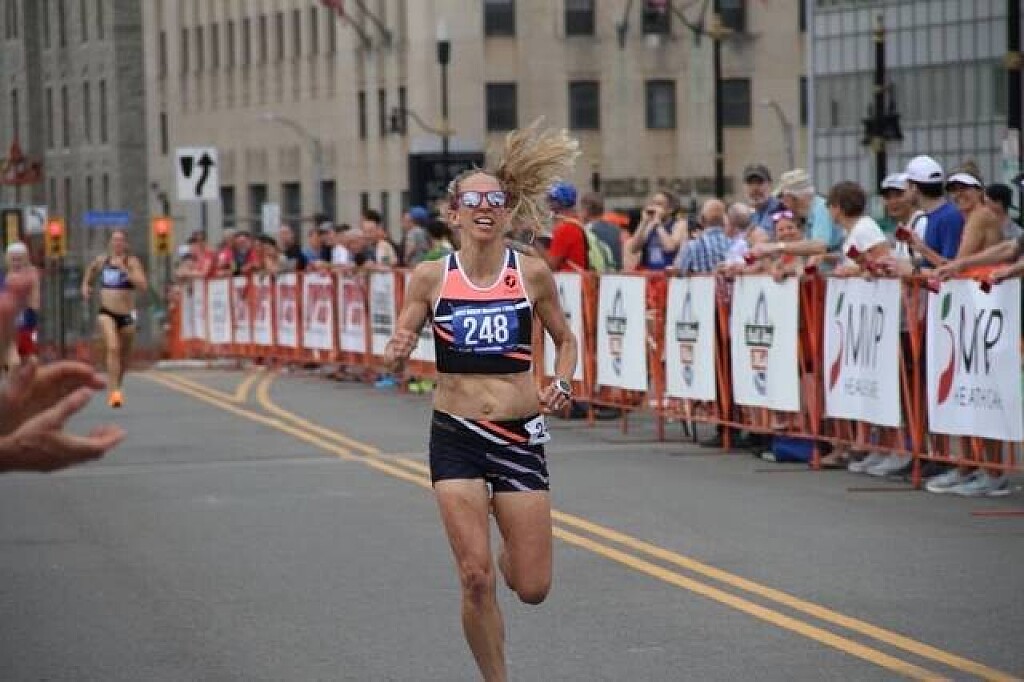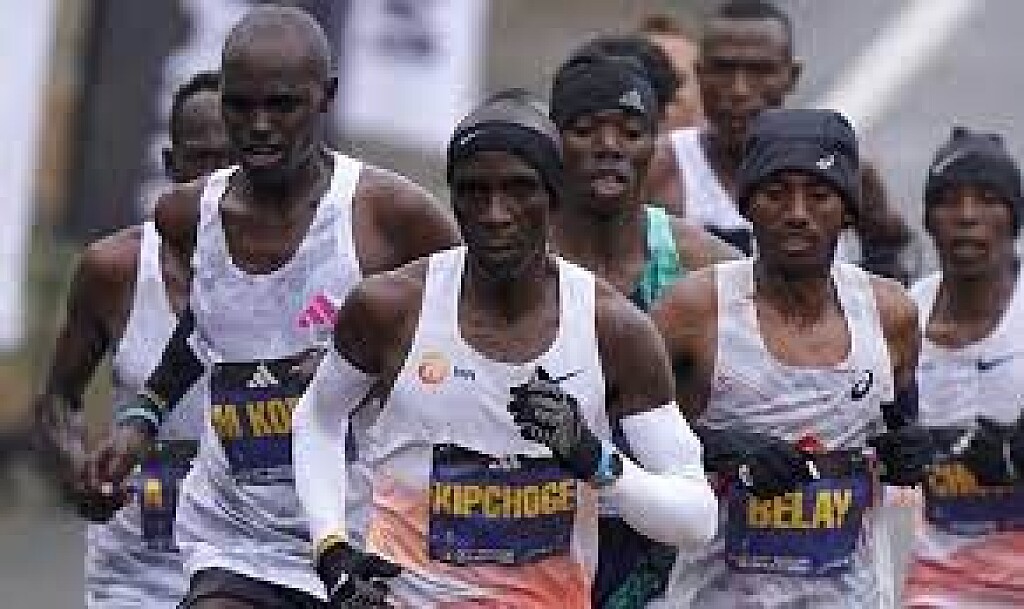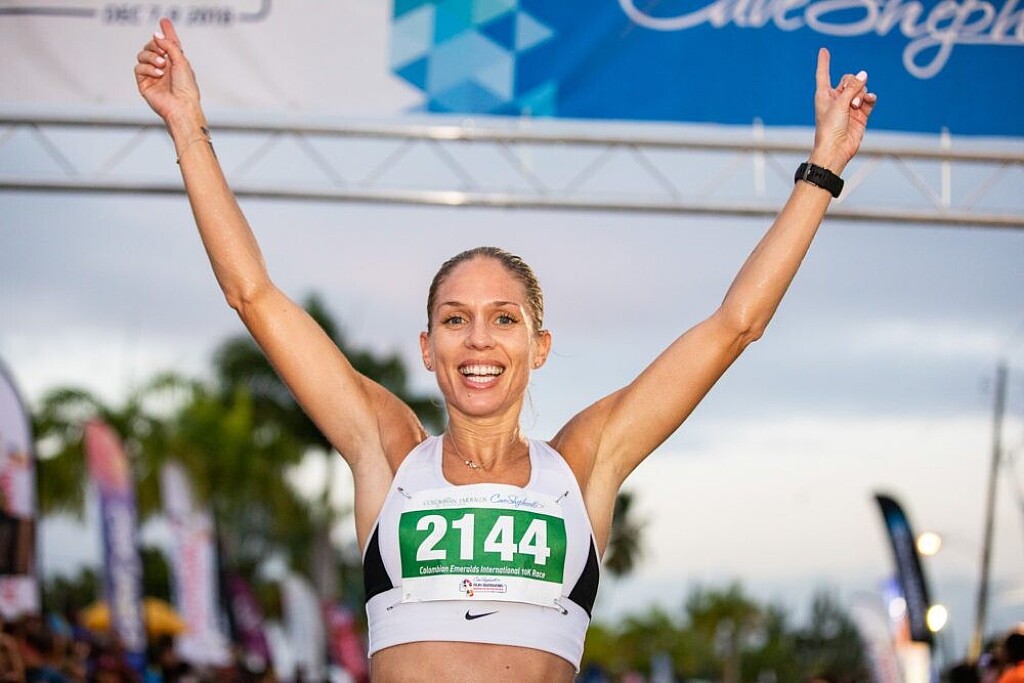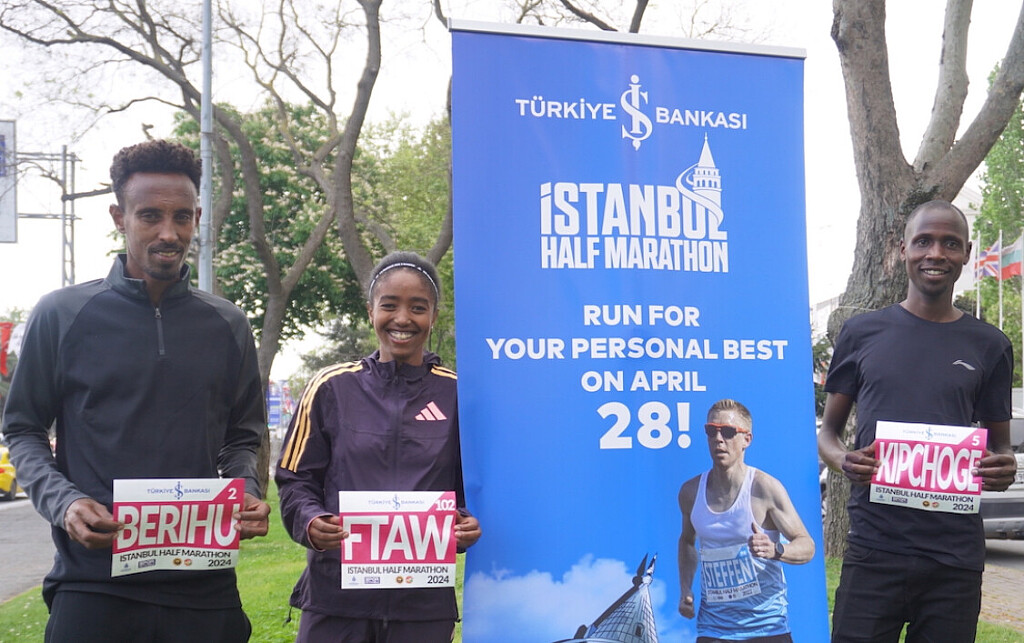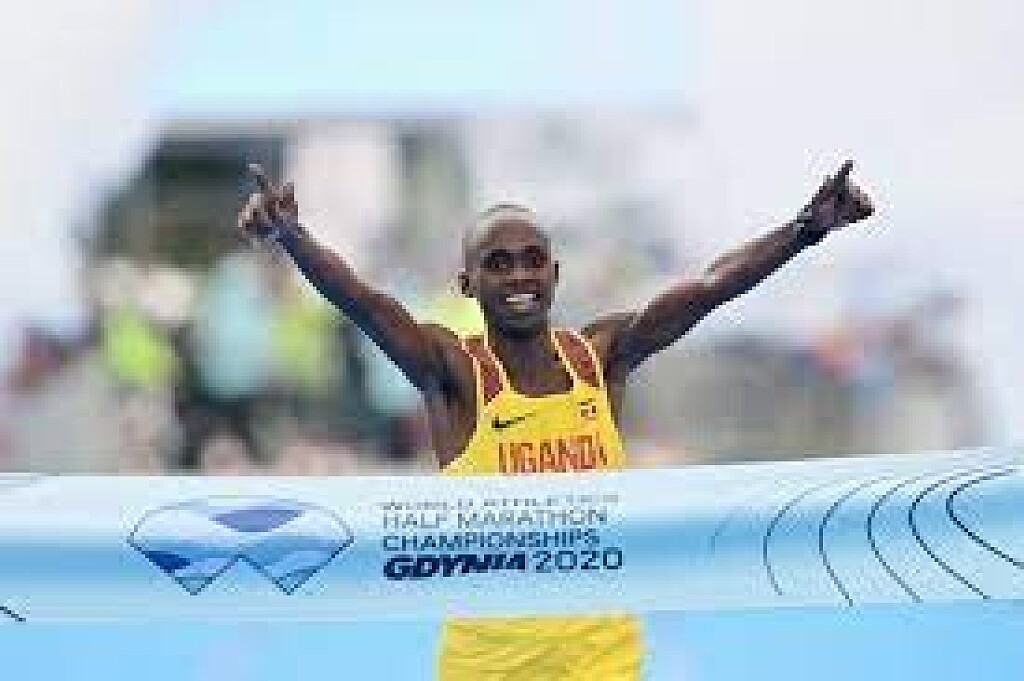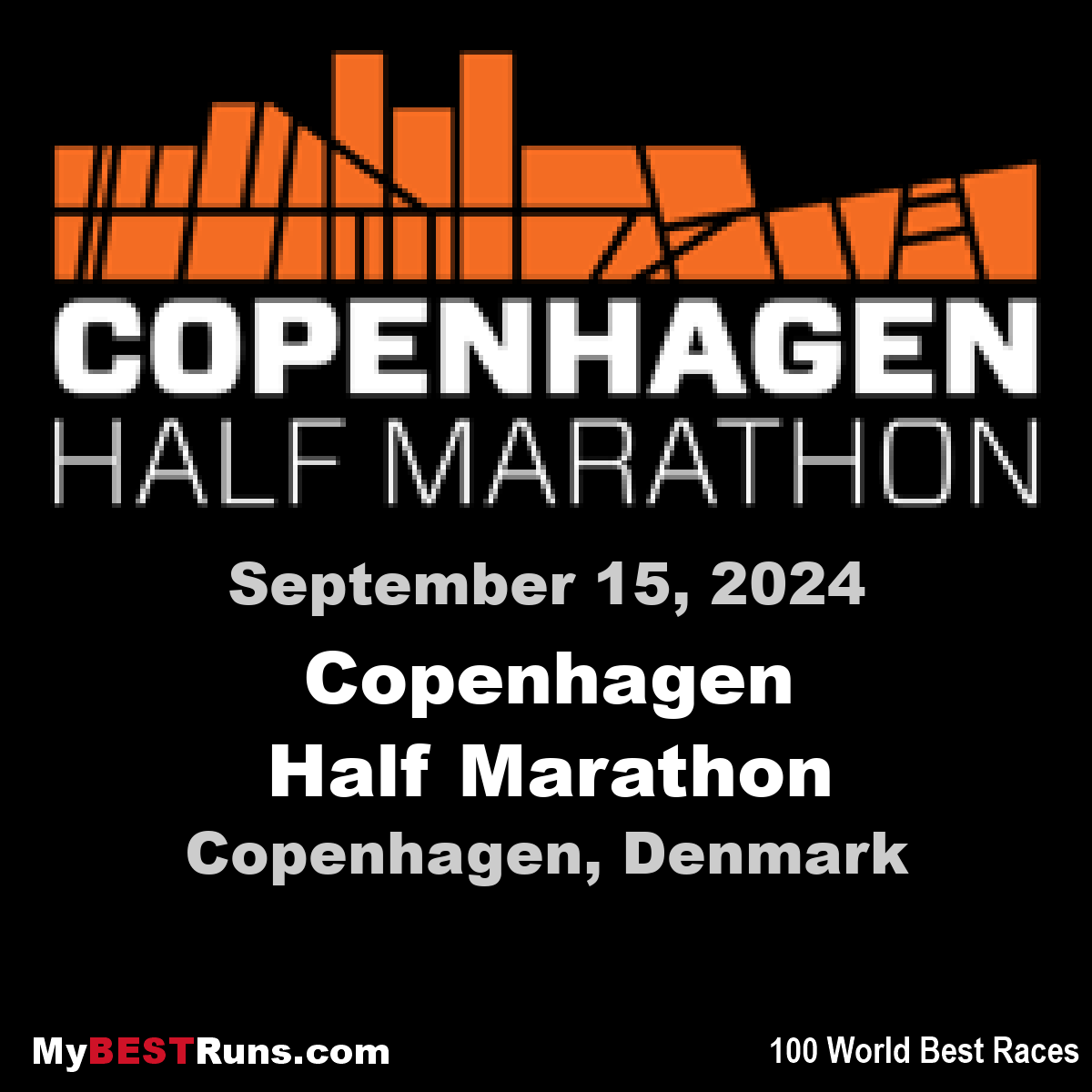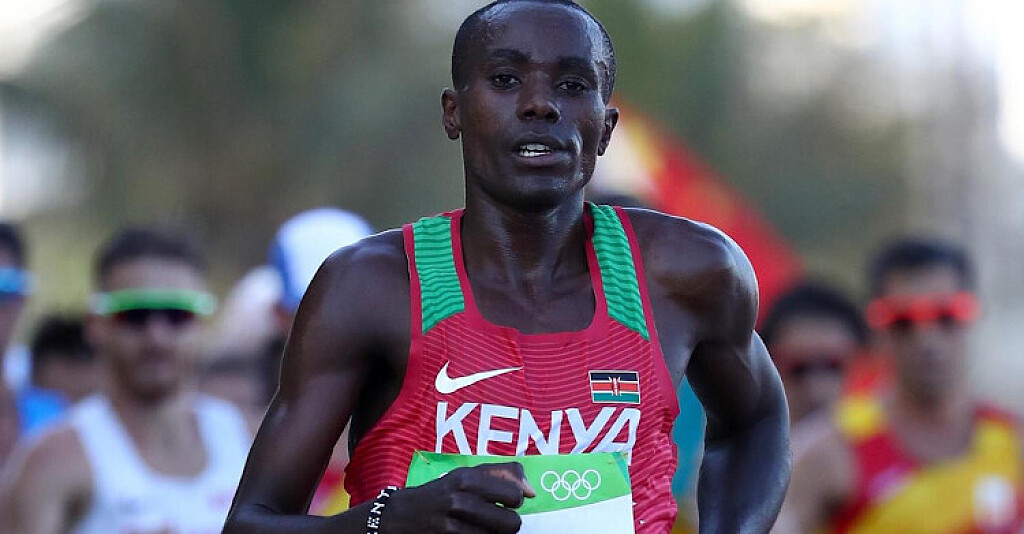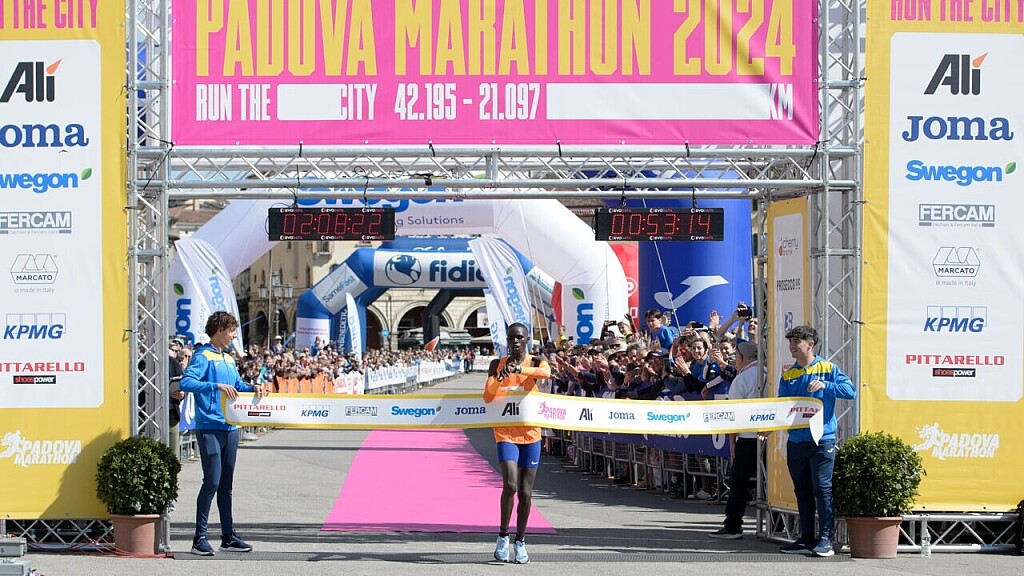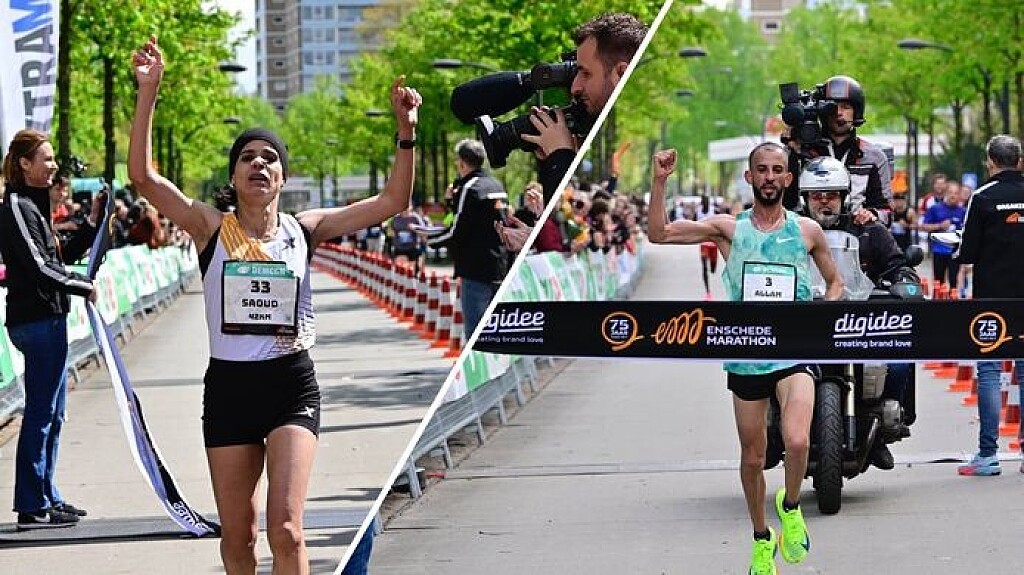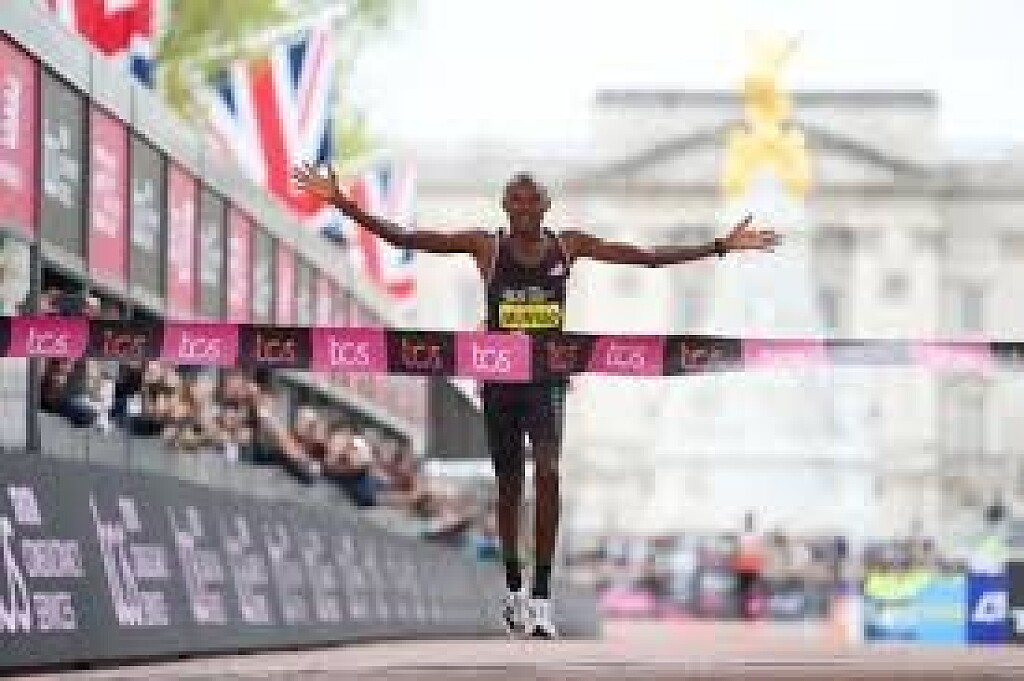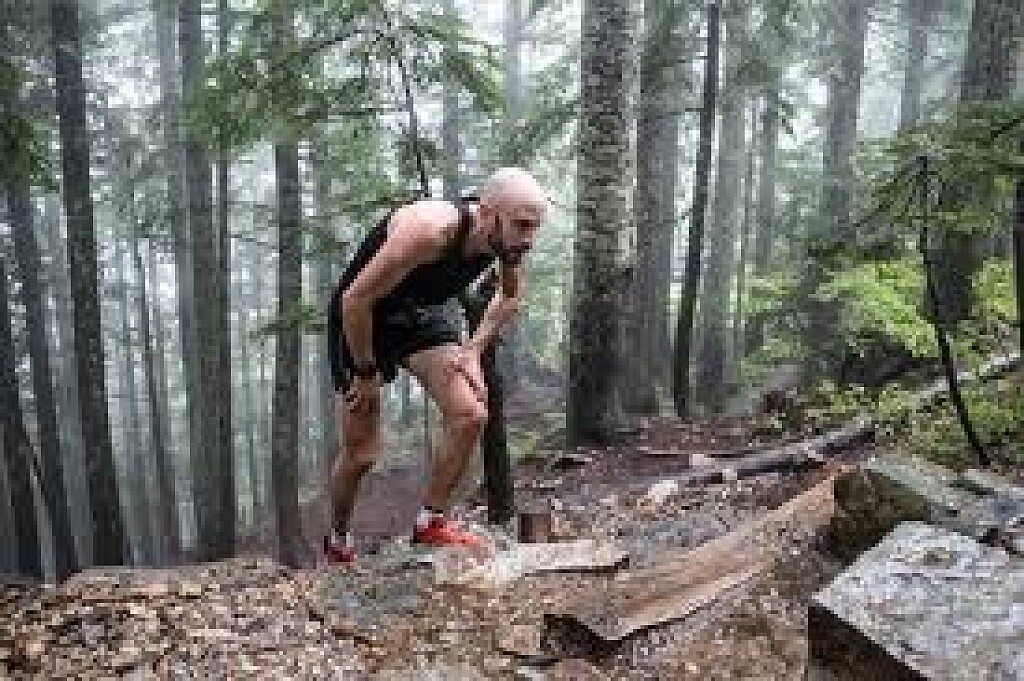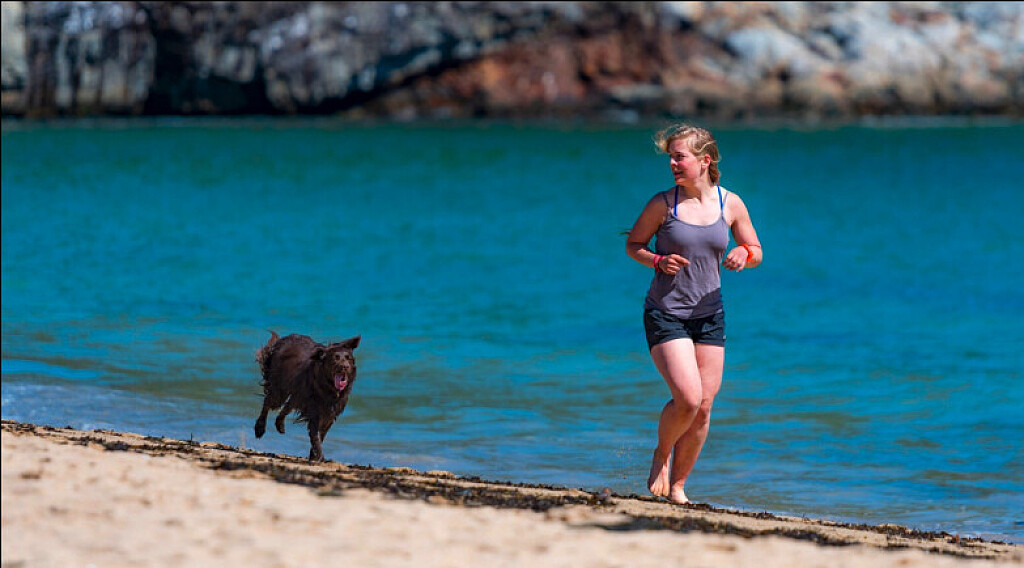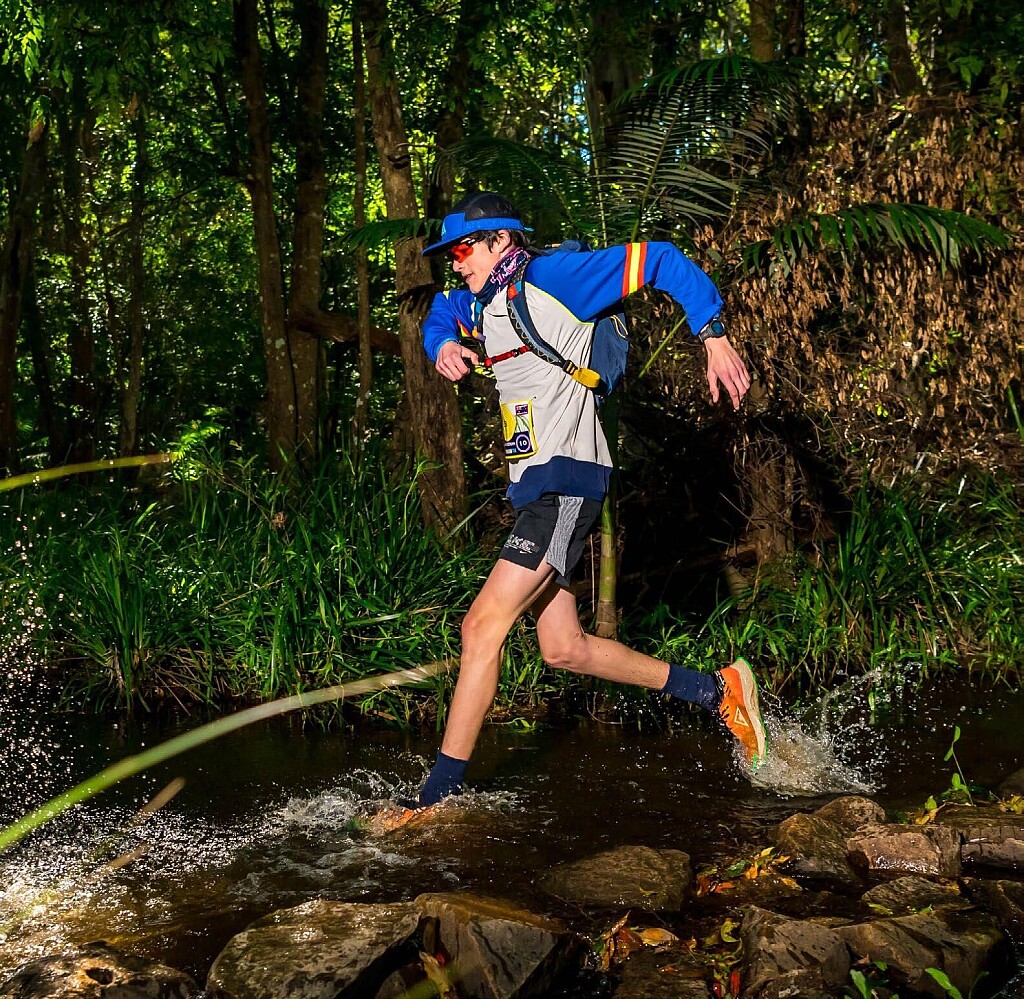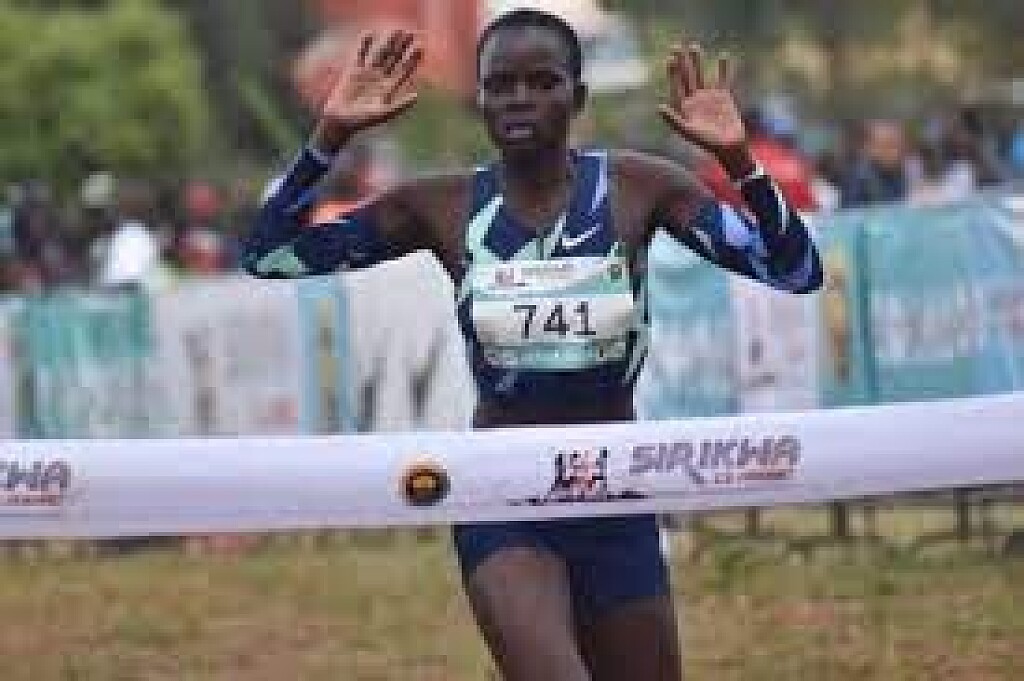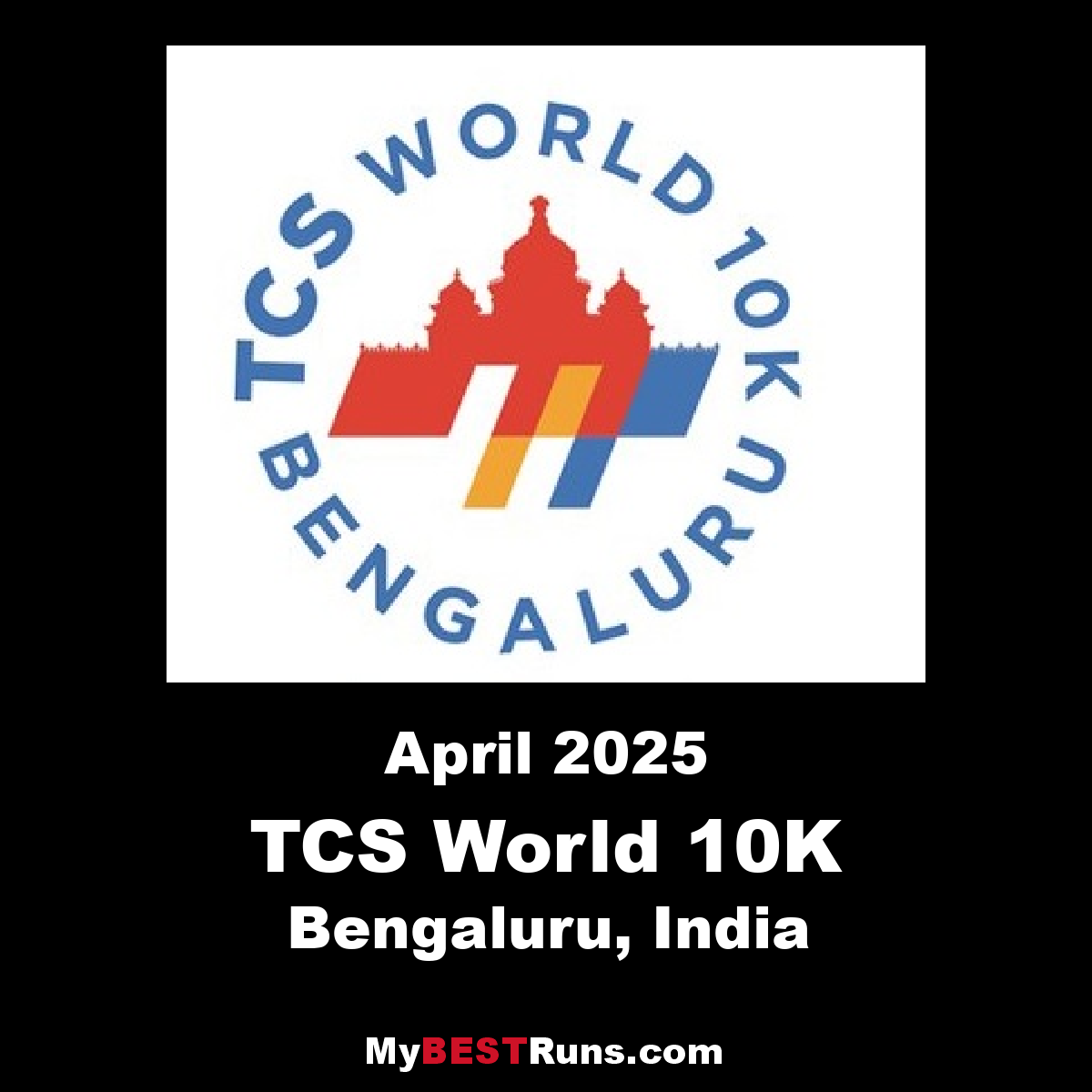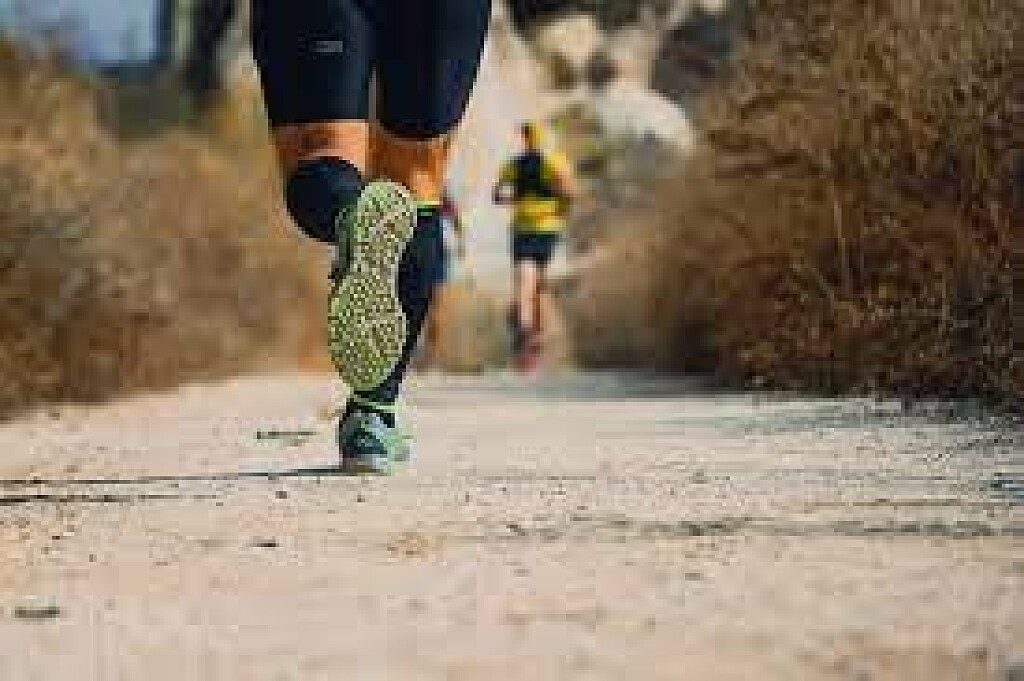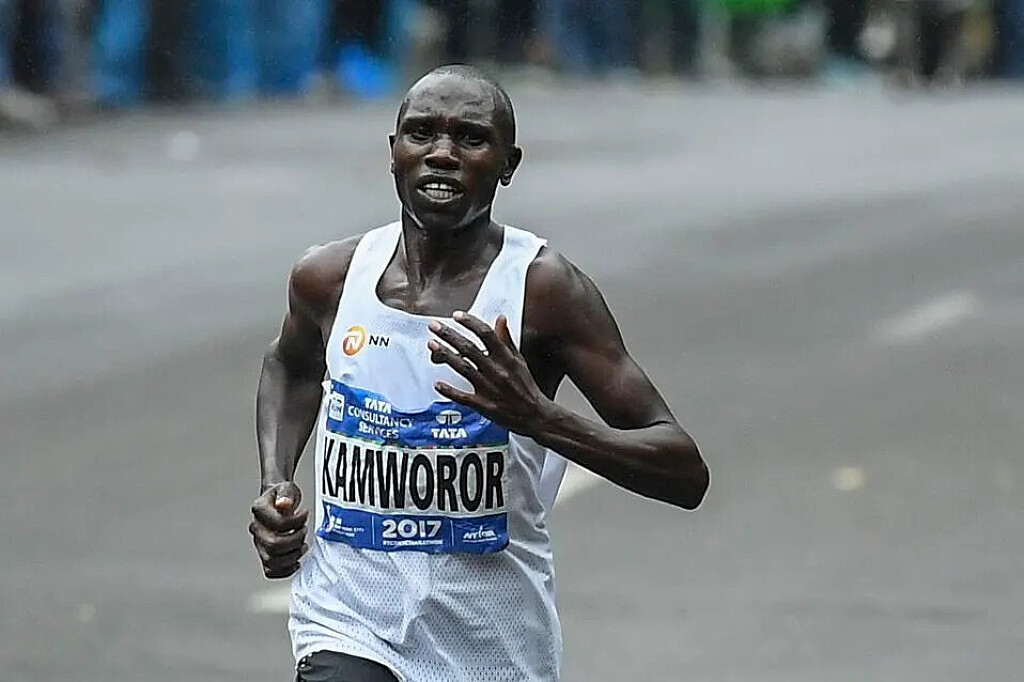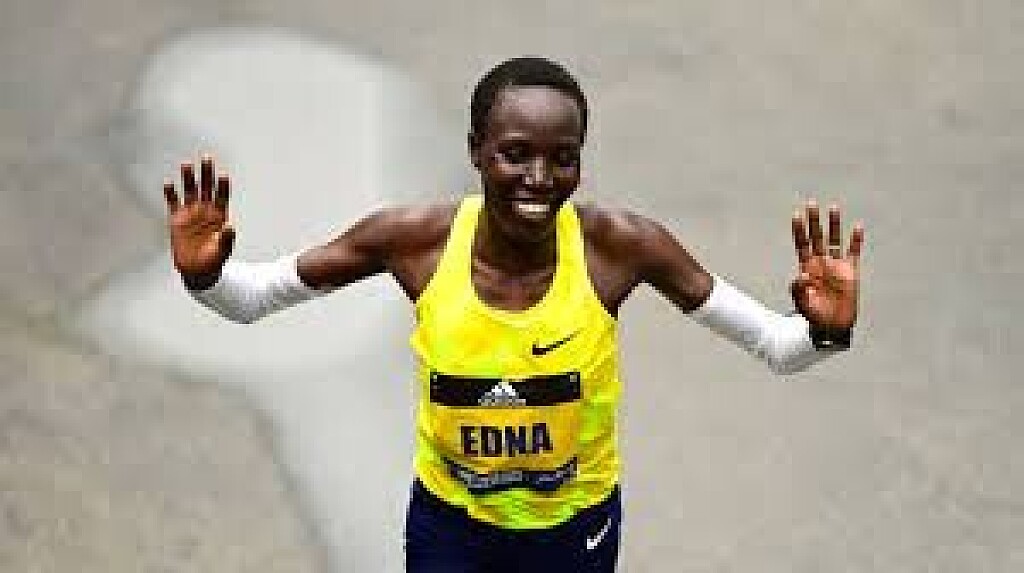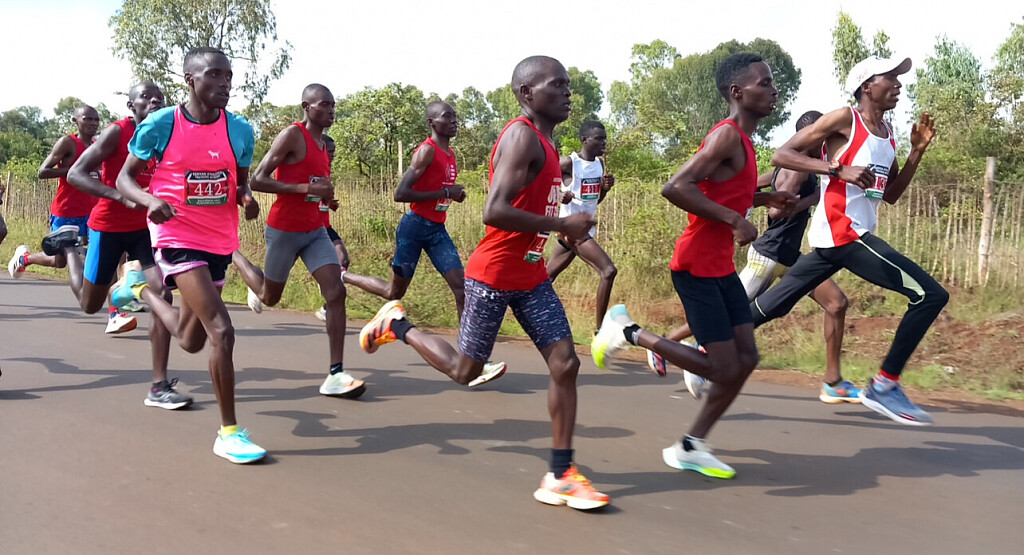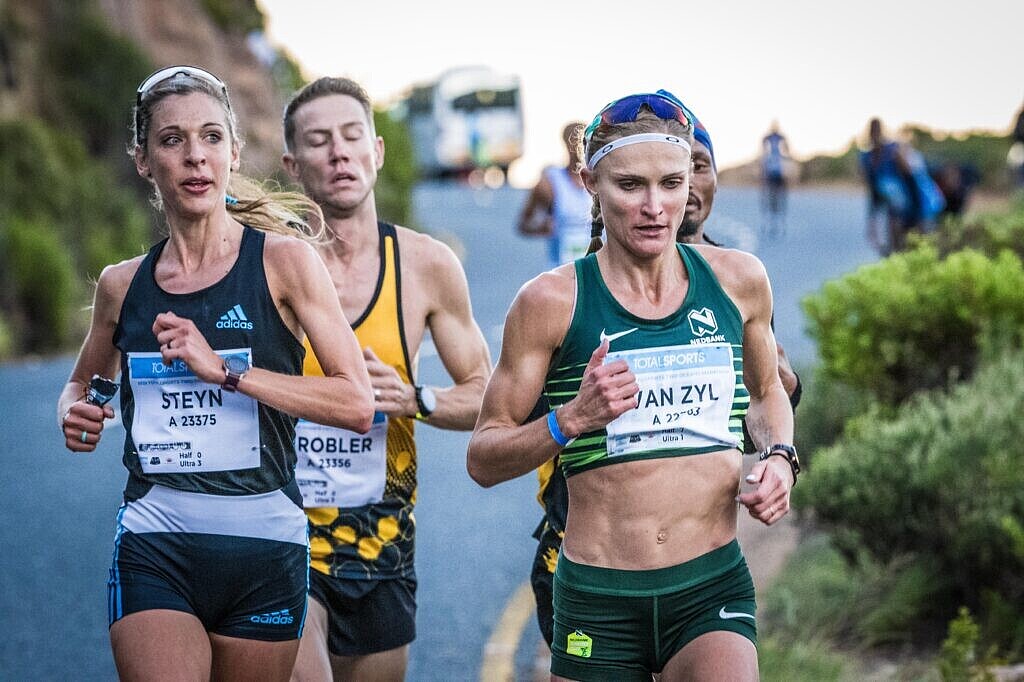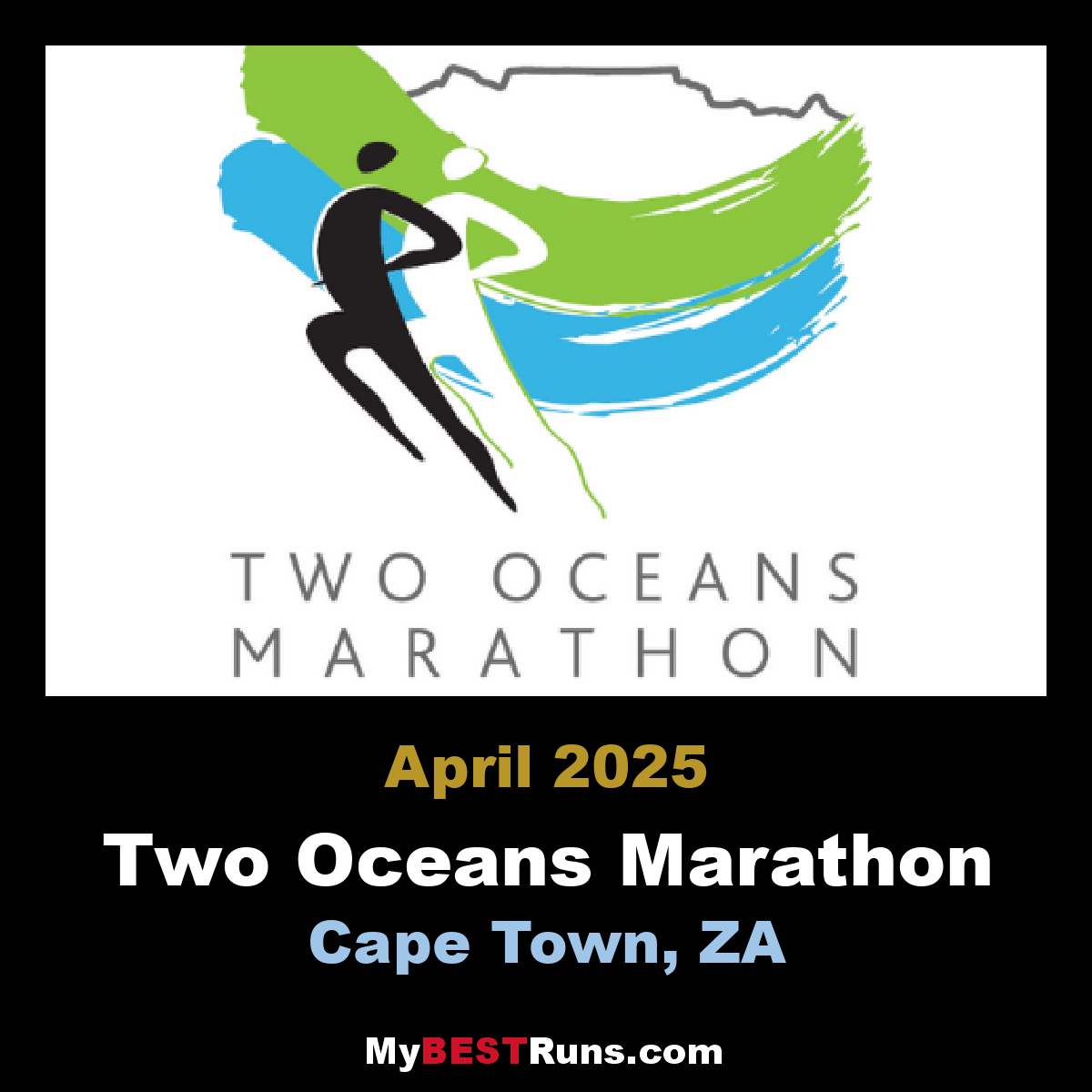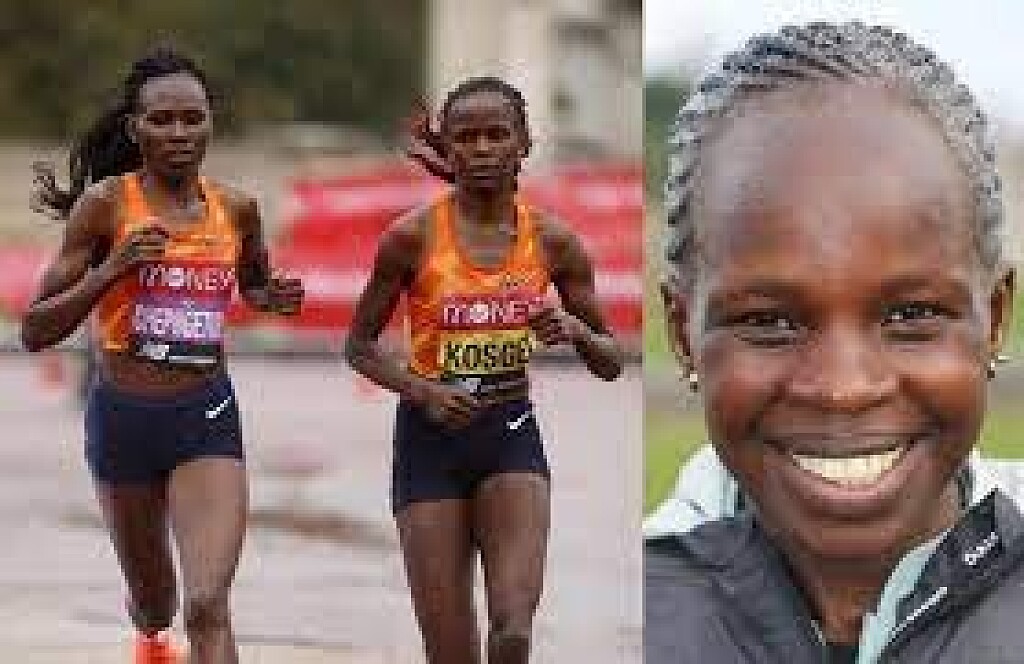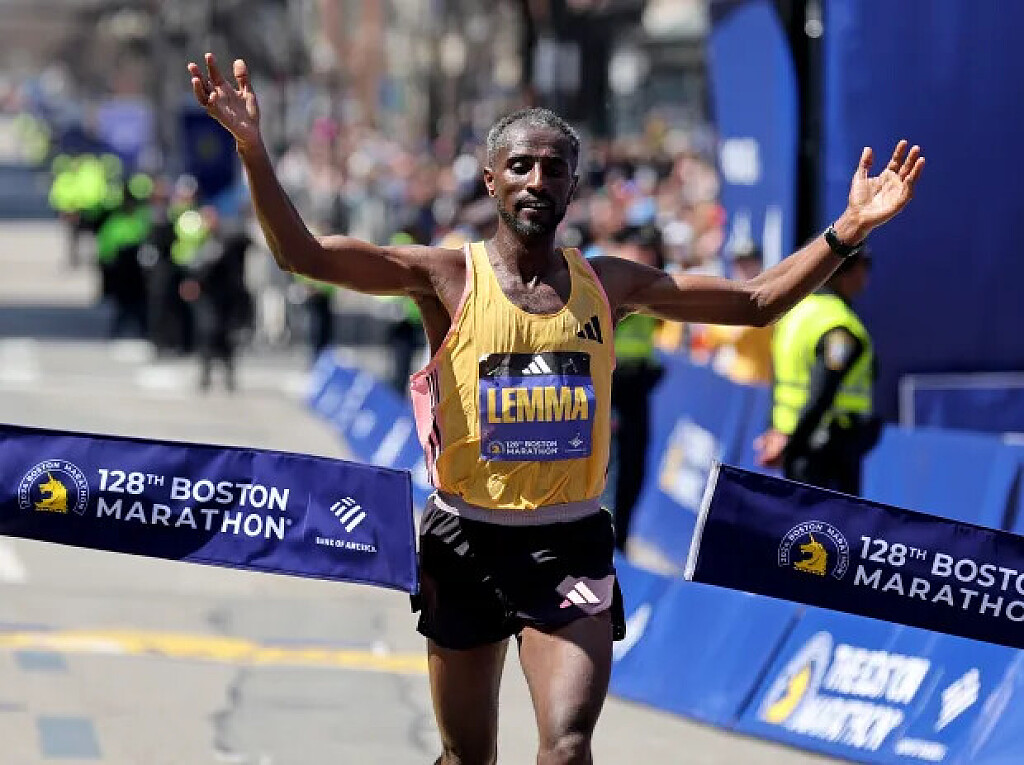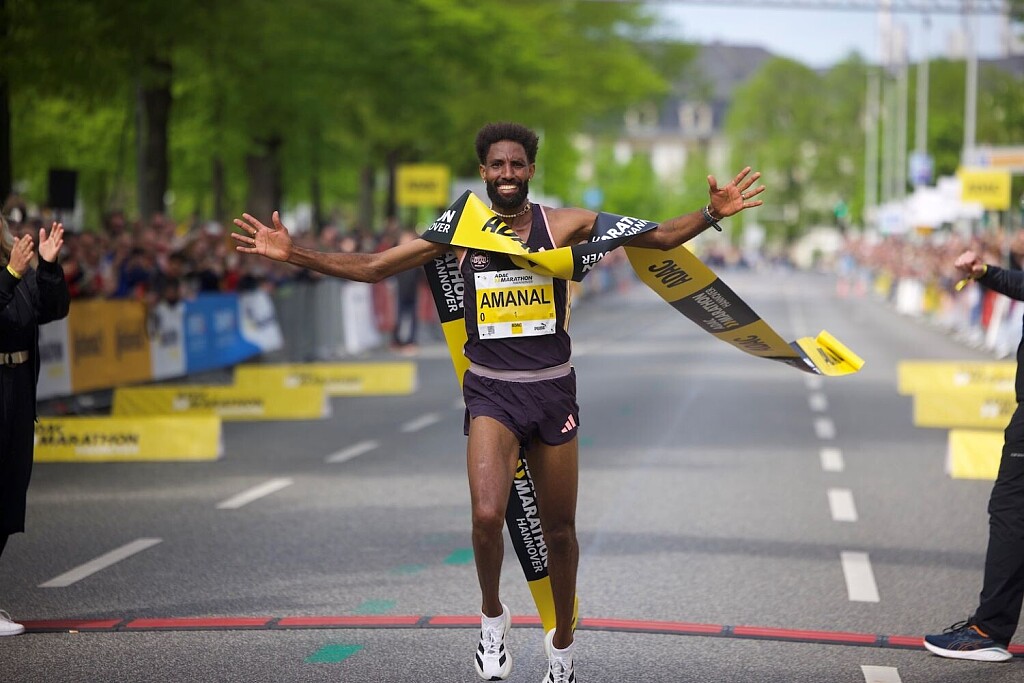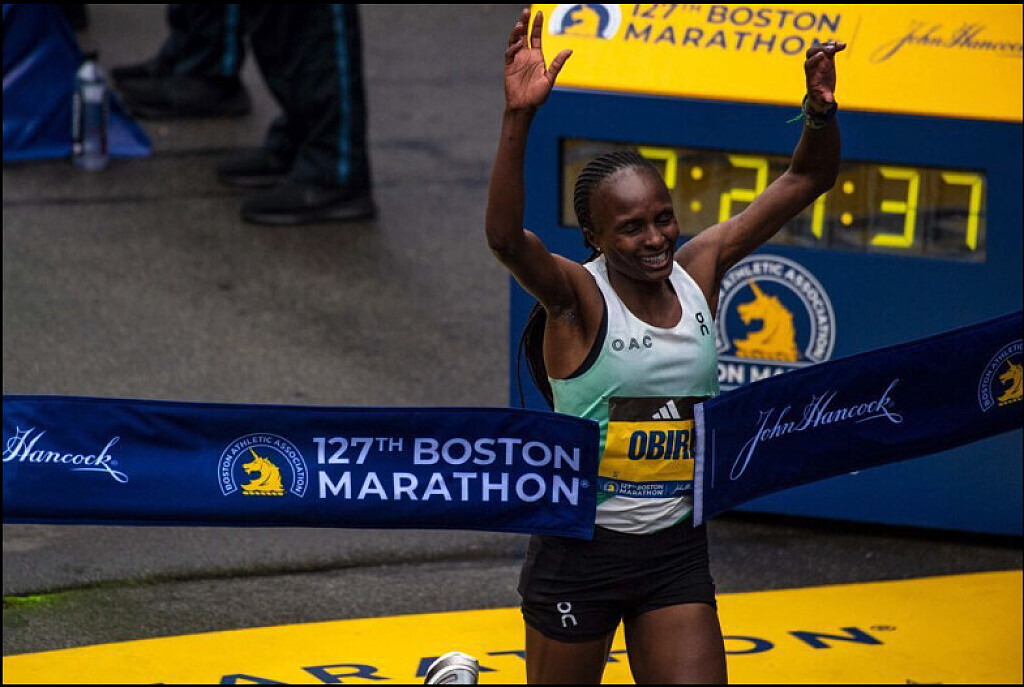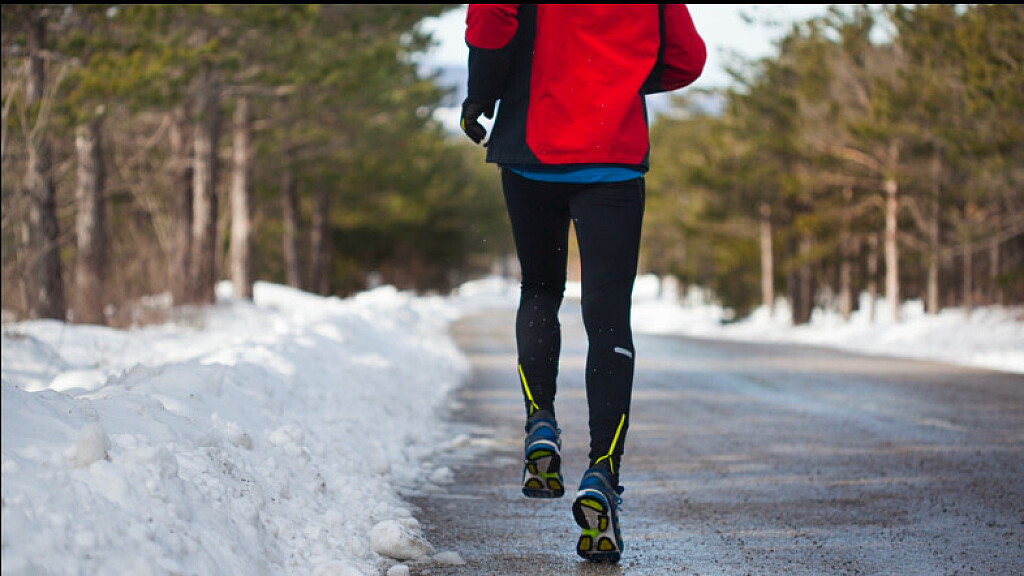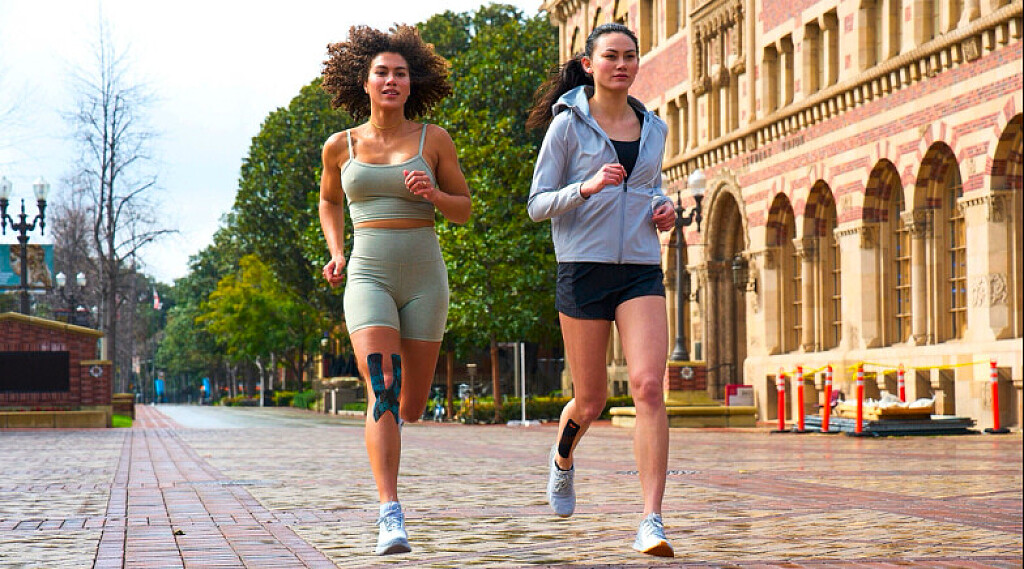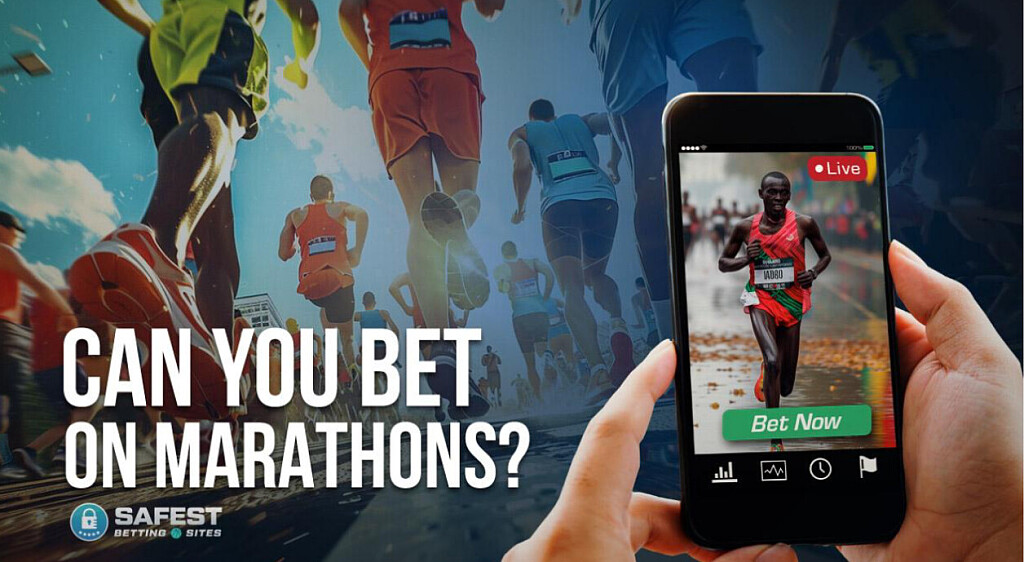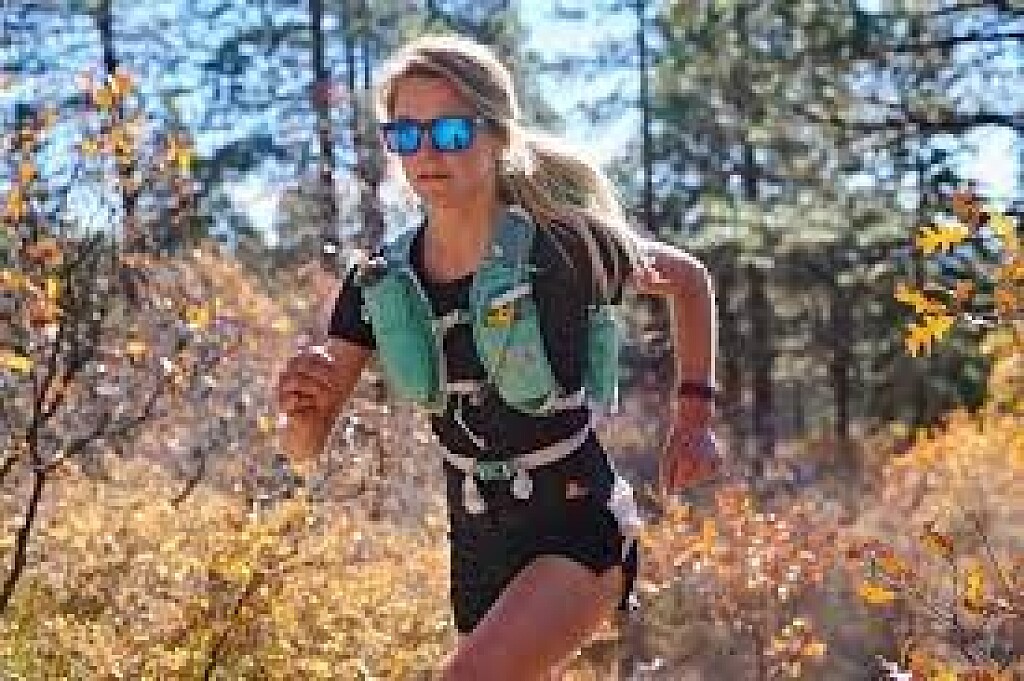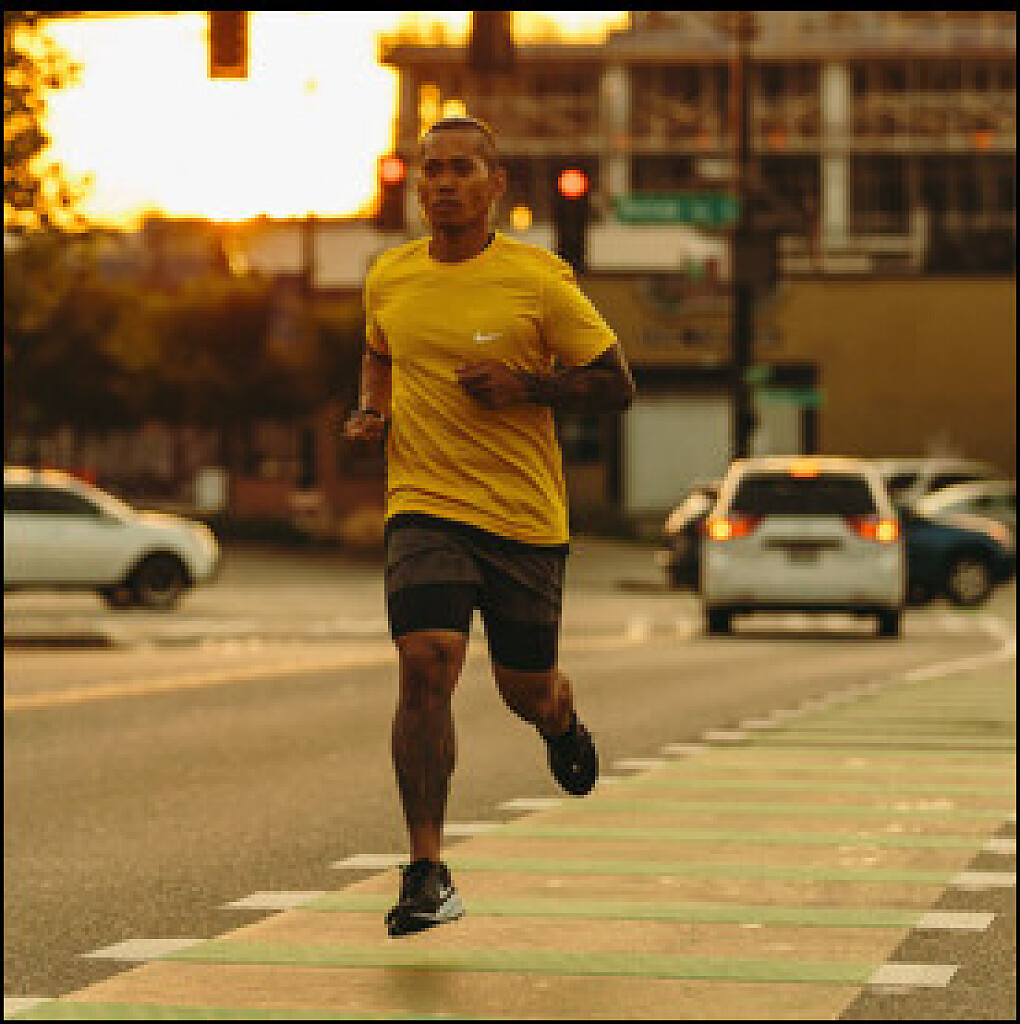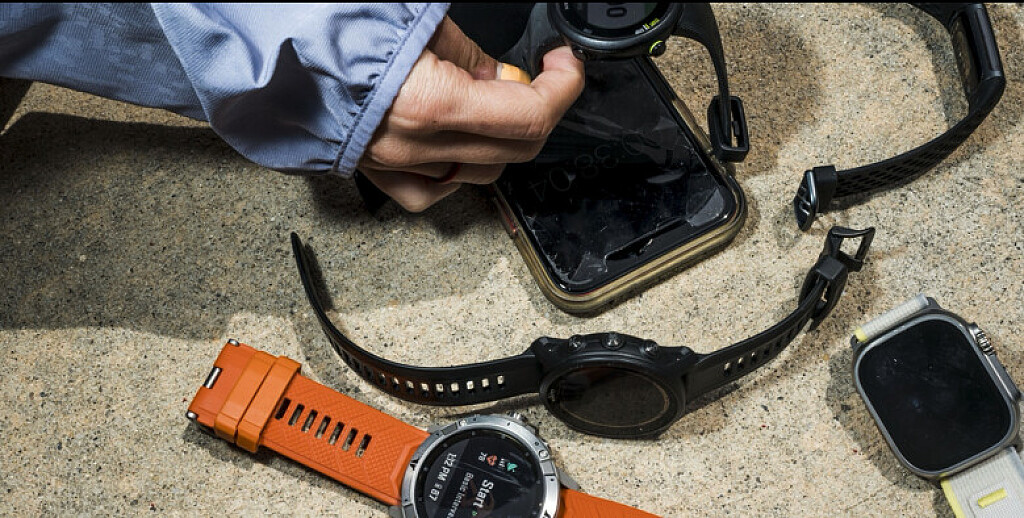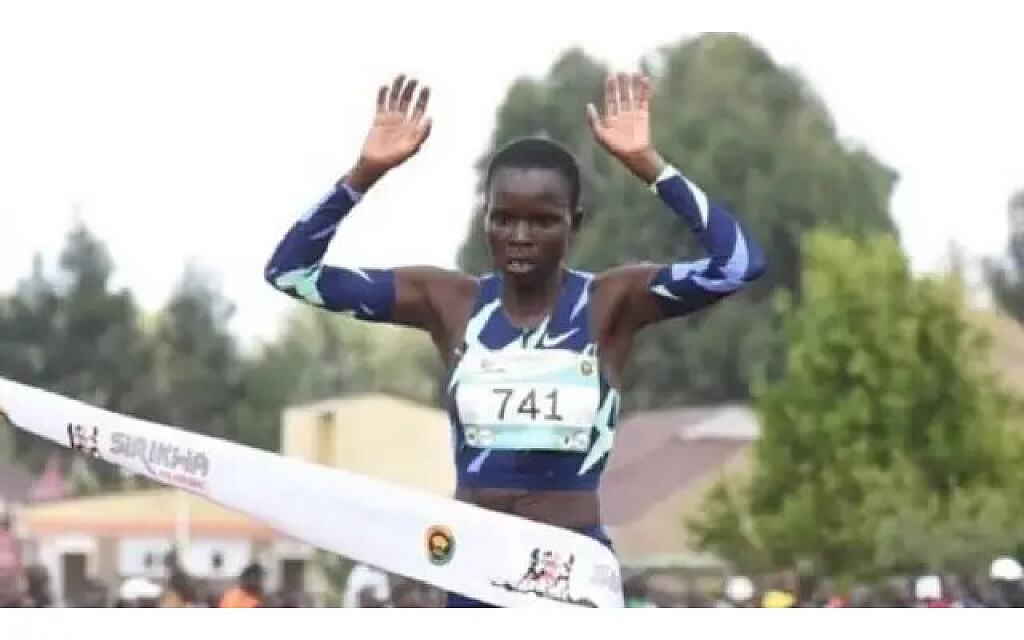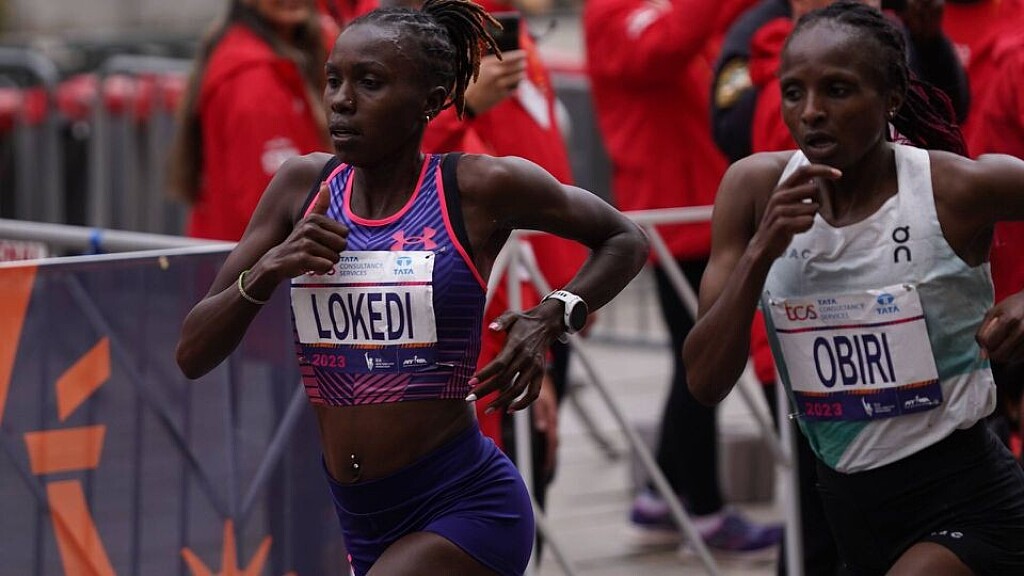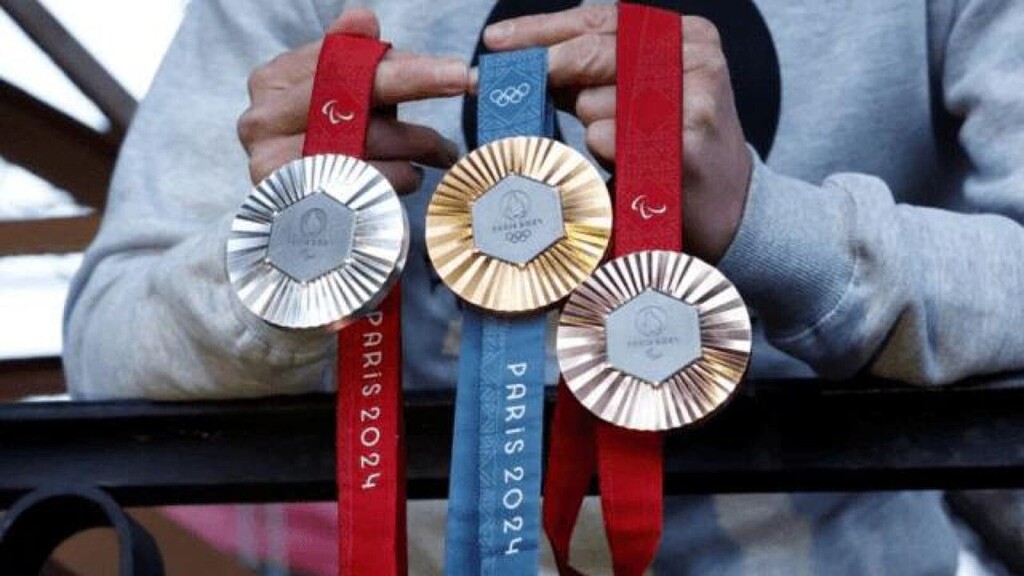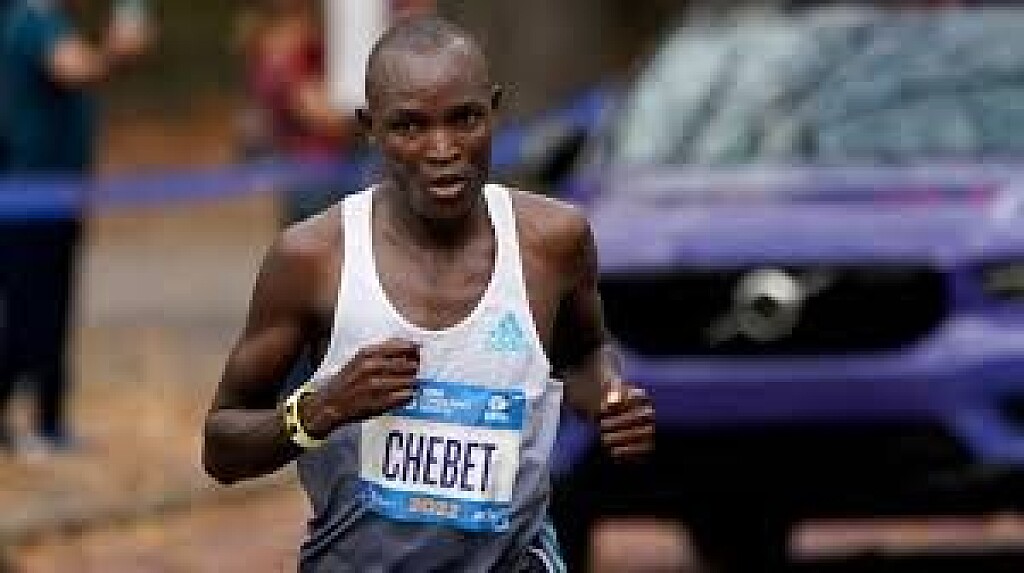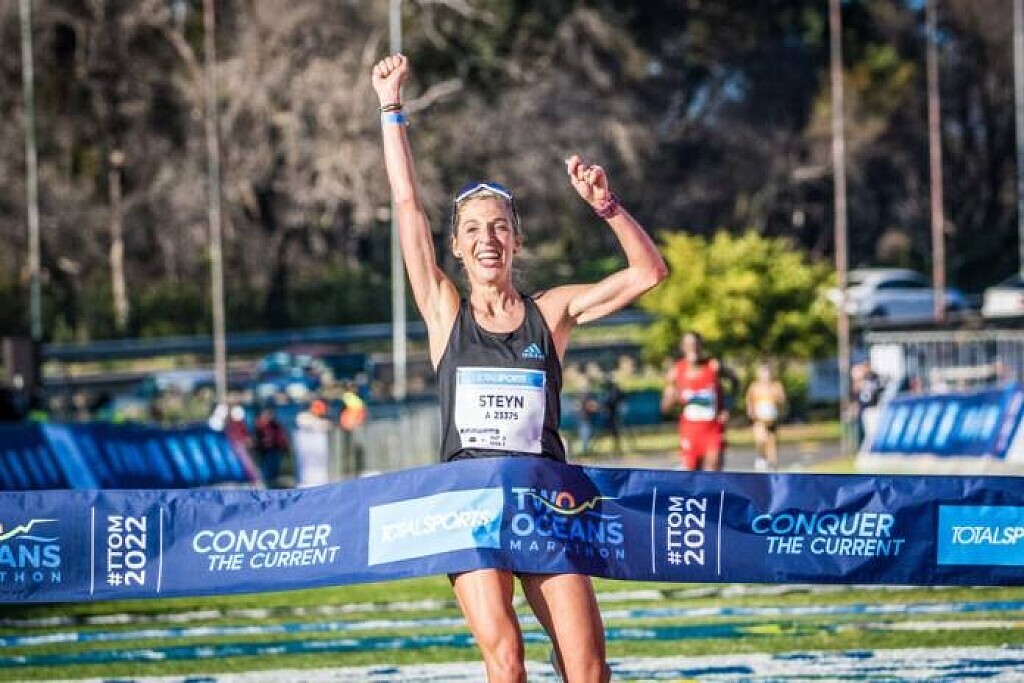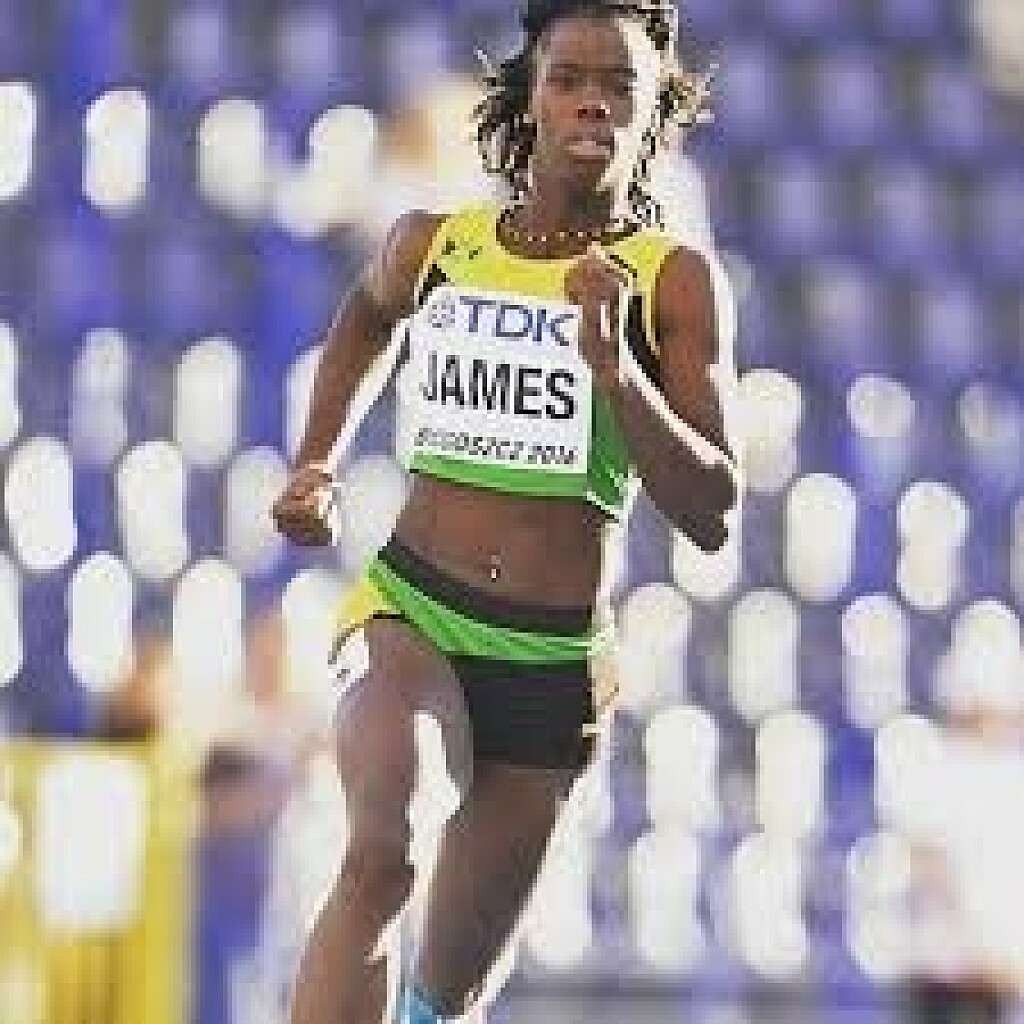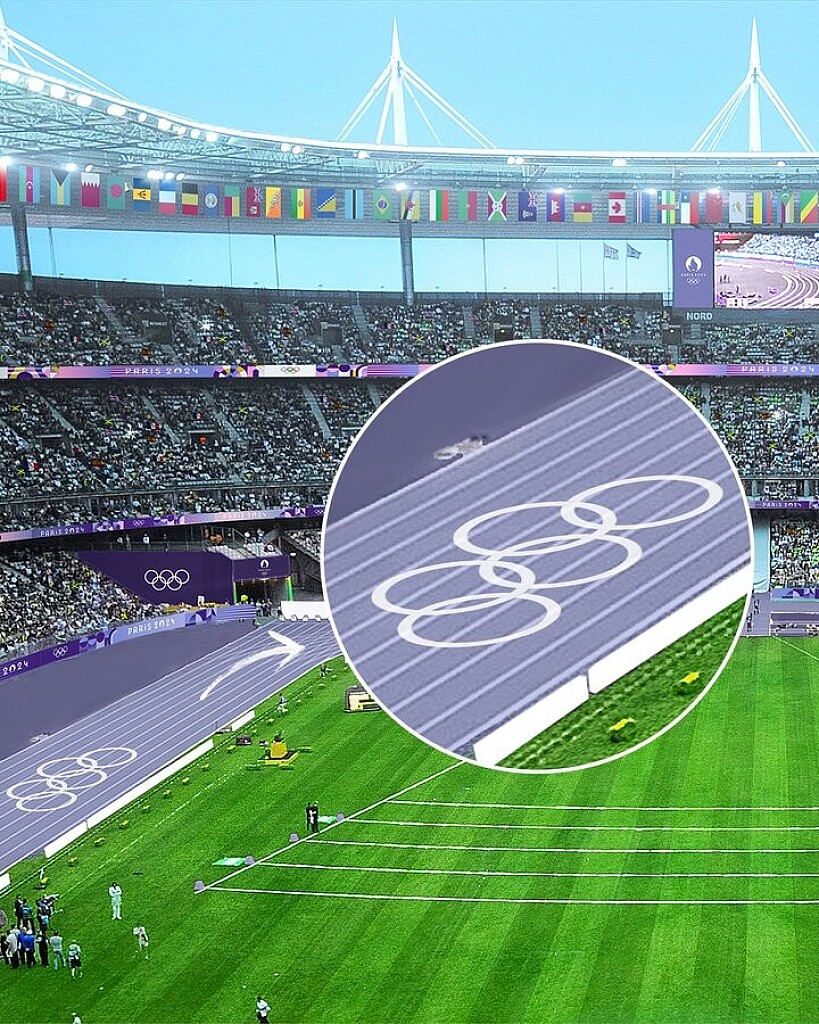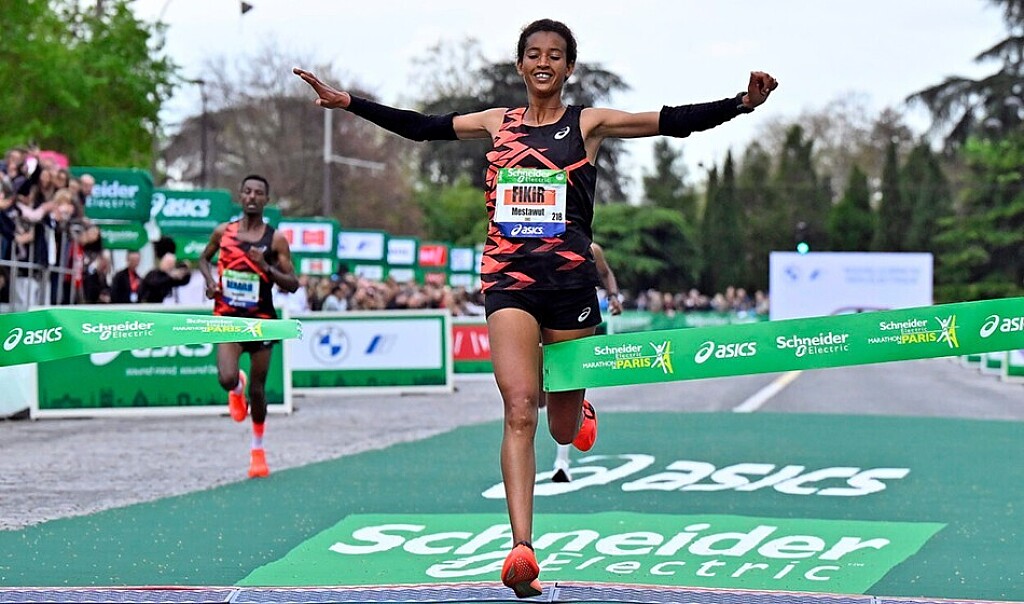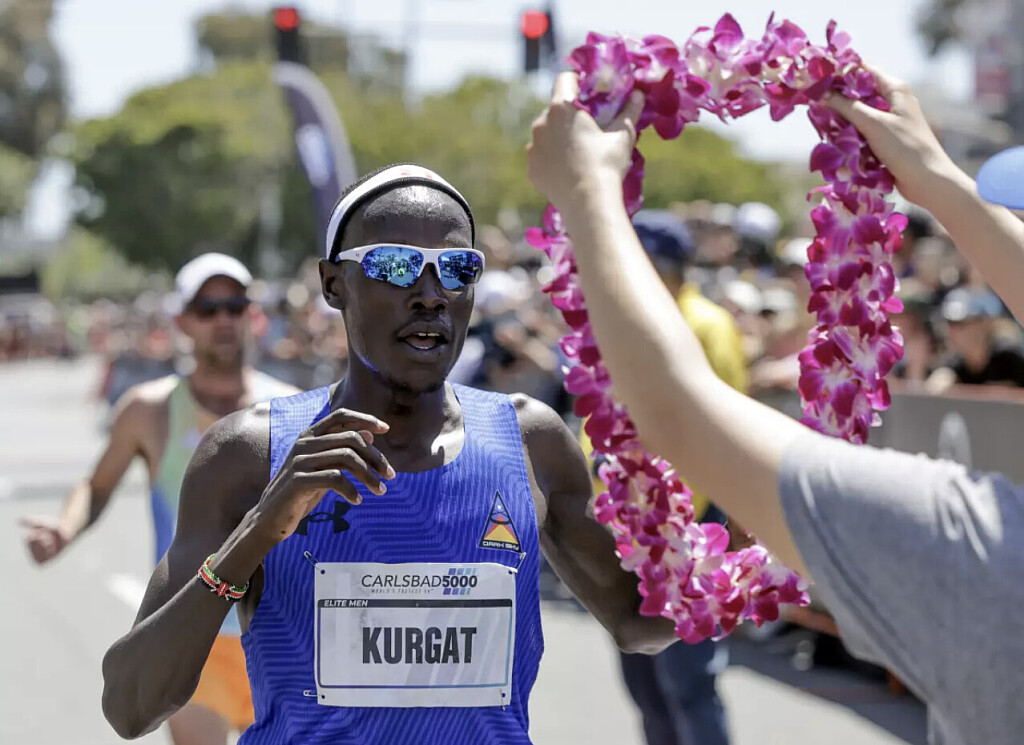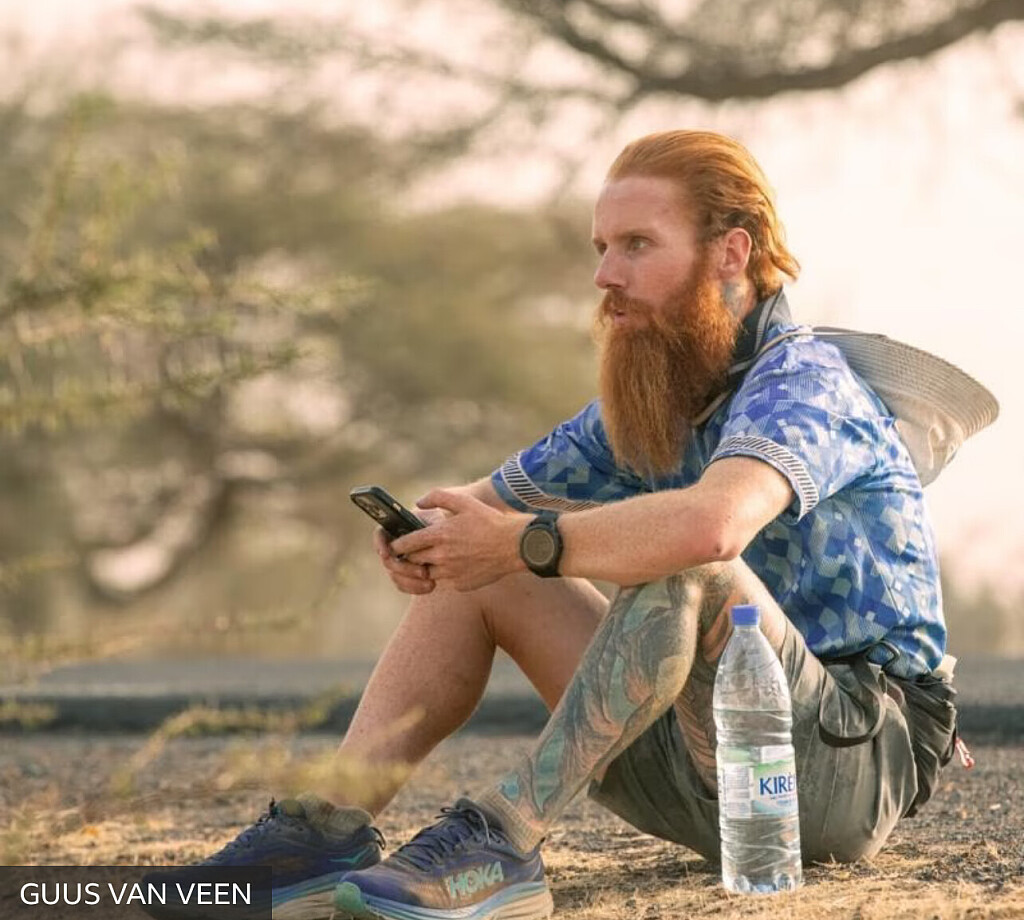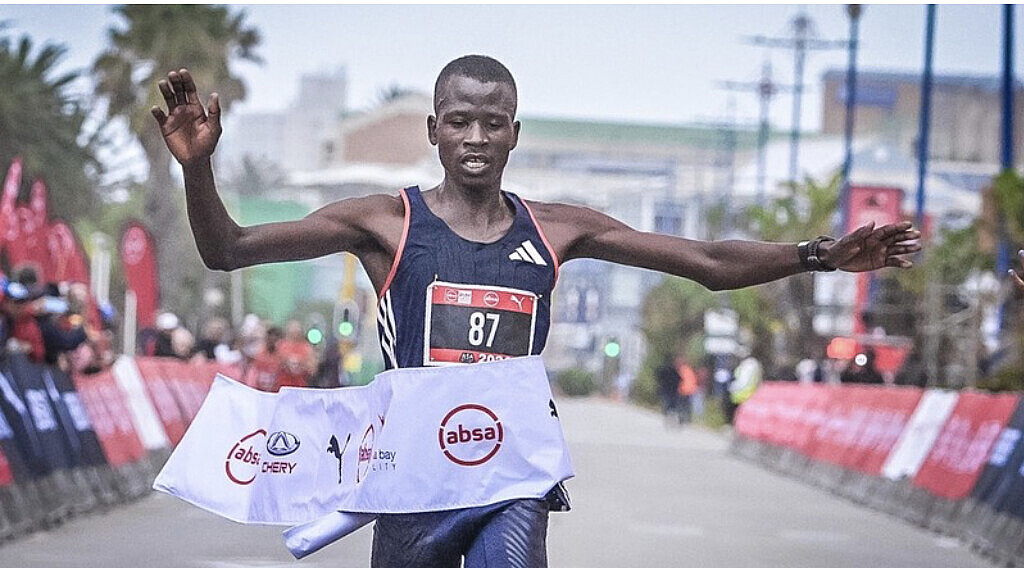Running News Daily
Running News Daily is edited by Bob Anderson in Mountain View, California USA and team in Thika Kenya, La Piedad Mexico, Bend Oregon, Chandler Arizona and Monforte da Beira Portugal. Send your news items to bob@mybestruns.com Advertising opportunities available. Over one million readers and growing. Train the Kenyan Way at KATA Running Retreat Kenya. (Kenyan Athletics Training Academy) in Thika Kenya. Opening in june 2024 KATA Running retreat Portugal. Learn more about Bob Anderson, MBR publisher and KATA director/owner, take a look at A Long Run the movie covering Bob's 50 race challenge.
Index to Daily Posts · Sign Up For Updates · Run The World Feed
Articles tagged #Des
Today's Running News
Sheila Chelangat surprises and Hicham Amghar wins in Istanbul
Sheila Chelangat was the surprise winner of the Türkiye Is Bankasi Istanbul Half Marathon. The Kenyan smashed her personal best and clocked a fine 66:47 despite rainy weather conditions and slippery roads. Fellow-Kenyan and debutant Miriam Chebet took second with 67:14 while Ethiopia’s Zewditu Aderaw was third in 68:17. The women’s race had a very good depth with eight runners finishing inside 69:00. Hicham Amghar of Marocco, who was runner-up a year ago, won the men’s race with a personal best of 59:47. Dinkalem Ayele was second in 59:55 while fellow-Ethiopian Gemechu Bute took third with 60:03.
A record number of 14,200 runners entered the 19th edition of the Türkiye Is Bankasi Istanbul Half Marathon, a World Athletics Gold Label Road Race. This includes athletes who competed in a 10k race staged parallel.
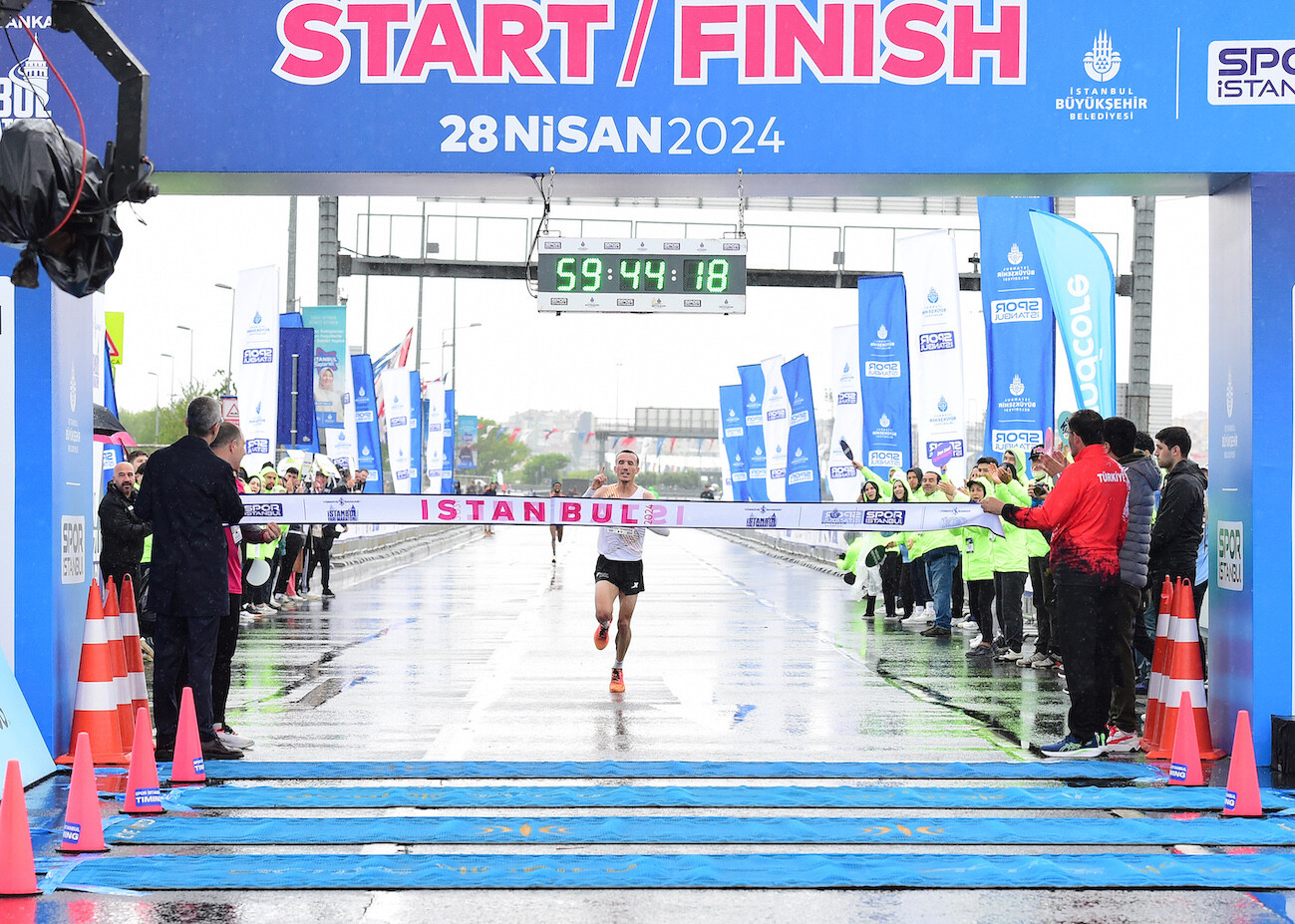
Sheila Chelangat, who was the tenth fastest woman on the start list with a personal best of 69:38, took the lead relatively early in the race. The 26 year-old Kenyan ran behind a pacemaker when she moved clear between 7 and 10 k. Despite the poor weather conditions she was able to keep the pace high and was so strong that she was never challenged. “I am really happy with my performance and the victory. However the weather was poor and the roads were slippery,“ said Sheila Chelangat, who achieved her biggest career victory so far in Istanbul. “I am not yet planning a marathon debut,“ said the Kenyan, who only ran her half marathon debut last month in Lille, where she was second.
Competing for second place Miriam Chebet and Zewditu Aderaw were battling between 10 and 13k. Then Kenya’s debutant Chebet was able to move away from the Ethiopian. Running her debut half marathon in Istanbul the former European 5,000 m Meraf Bahta finished in 16th position with 72:51. The Swede was the best European in the race, but missed the qualifying standard for the continental championships in Rome in June by over a minute.
In the men’s race a bigger leading group passed the 10k mark in 28:39. In-form Dinkalem Ayele was among the leaders, along with Hicham Amghar and Gemechu Bute. Ayele was the winner of the Lisbon Half Marathon this spring, but in the final stages the Ethiopian could not get passed Amghar. The runner from Marocco was in the lead after 17k with Ayele and Bute close behind. Finishing runner-up and beaten by just six seconds a year ago this time Amghar made sure he is the number one. With 59:47 he was eight seconds ahead and improved his PB from 2023 by six seconds.
“Despite the weather I was able to run a personal best, so I am very happy. It was better to have rain instead of wind,“ said the 29 year-old winner, who celebrated one of his best career performances. “I may well return to Istanbul in November for my marathon debut. I really like the way the organisers take care of the elite runners here,“ said Hicham Amghar.
While Ethiopia’s pre-race favorite Solomon Berihu did not finish, Canada’s Cameron Levins was the fastest non-African runner in eighth place. He clocked a fine 60:38, missing his national record by just 20 seconds. Further down the results list there was a national record for the Virgin Islands: Eduardo Garcia ran 63:53 for 29th place.
The reigning European half marathon champion Tadesse Abraham of Switzerland finished in 24th position with 63:18. “It was a good race, but mentally I am not well,“ said Tadesse Abraham, who still has to come to terms with with loss of his fellow-Swiss marathon runner Adrian Lehmann, who died after a heart attack just eight days ago. “I came to Istanbul to run and get this a bit out of my head. Taking this into account I am satisfied with my performance today.“
RESULTS, MEN:
1. Hicham Amghar MAR 59:47
2. Dinkalem Ayele ETH 59:55
3. Gemechu Bute ETH 60:03
4. Antony Kimtai KEN 60:16
5. Benard Bitwott KEN 60:18
6. Solomon Kipchoge KEN 60:19
7. Mathew Samperu KEN 60:27
8. Cameron Levins CAN 60:38
9. James Kipkoech KEN 60:43
10. Edward Pingua KEN 61:08
WOMEN:
1. Sheila Chelangat KEN 66:47
2. Miriam Chebet KEN 67:14
3. Zewditu Aderaw ETH 68:17
4. Betelihem Afenigus ETH 68:33
5. Ftaw Zeray ETH 68:39
6. Betty Kibet KEN 68:39
7. Gladys Chepkurui KEN 68:50
8. Aberash Shilima ETH 68:52
9. Ruth Jebet BRN 69:10
10. Meseret Dinke ETH 69:53
(04/28/2024) Views: 39 ⚡AMPIstanbul Half Marathon
WE ARE RUNNING A HALF MARATHON ON THE WORLD’S FASTEST RACE COURSE! The Historical Peninsula race course, home to 8,000 years of history, is enthusiastically run every year accompanied by the unique beauty of Istanbul! This unique Istanbul Half Marathon race course, which holds Türkiye’s first athletics record with the Women’s World Half Marathon record in 2021 and ranks first...
more...5 Tips for Leveling Up Your Trail Running
Five ways to measure your progress trail running across surfaces, distances, and routes
Many of us get into trail running because of its non-linear, anti-cookie cutter method of training. Sometimes it’s less about miles and times and more about focusing on where your feet—or hands if you’re scrabbling—are going.. However, that can also be the most frustrating aspect to accept, especially as we strive to improve. Unlike road running, where distances and times are easily measurable, trail running often lacks the same level of precision. But don’t worry, you can still assess and benchmark your progress. Here, we’ll explore various methods of how to track trail running progress that don’t require pinning on a race bib.

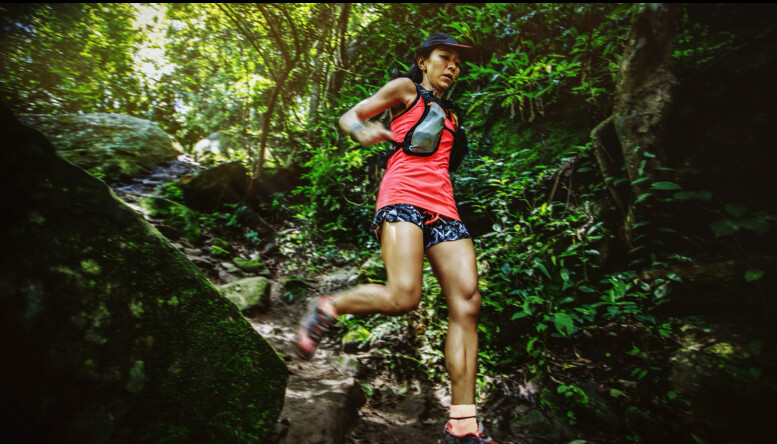
One of the simplest ways to measure progress, both in trail and road running, is by repeating looped routes regularly. Choose a trail that offers a mix of terrains, elevations, and technical challenges. By running the same loop consistently, you can monitor improvements in your pacing, endurance, and overall comfort level with the terrain. Take note of how you navigate tricky sections more confidently and efficiently over time.
Dana Katz, coach at UltraU Fitness, often prescribes what she calls a “money loop.”
“My athletes get to choose this for themselves,” Katz says. “This could be a Strava segment or local favorite and typically takes them one hour roughly, or five to eight miles. We revisit this every few weeks. It’s a great way for us to assess progress over time.”
Crafting a loop or two that you can use to benchmark your progress on a moderate-to-hard effort day can be a handy way to see how you’ve progressed over time. While Katz says you don’t need to be all-out to track results, her athletes get excited to see their heart rate and perceived effort level decline with training..
Similarly, one of my local favorite challenges is called “Golden Hell Week,” organized by local running group, Golden Mountain Runners, where runners test themselves on five routes over the course of a single week. While I don’t suggest doing back-to-back attempts at a fastest time, approaching these routes at different times throughout the year has been a great way to challenge myself in lieu of a tempo effort, and a sound method to see how I’m faring (if you ever find yourself in Golden, Colorado, I challenge you to the main loop around North Table Mountain).
Hills are a significant aspect of trail running, demanding strength and stamina. Designate specific hills or ascents on your favorite trail and incorporate them into your training routine. By regularly tackling these inclines, you can measure progress through increased speed, improved form, and enhanced cardiovascular endurance. Improving on hills is a clear indicator that your trail running skills are advancing. You can find a host of hill repeat training sessions from Coach David Roche’s 8 Favorite Hill Workouts.
Hills can be just as uncomplicated as running 400-meter intervals on the track. Simply put, select a hill near your house or on a favorite trail and run it several times fast. Rest, jog, and repeat. Note your time for each one, or run hard for a designated amount of time and note how far you made it up the hill. Hill repeats, money loops, and Strava segments (if you use that platform), can be useful strategies to assess progress within a shorter duration effort.
When switching from roads to trails, one of the hardest aspects to wrap our brains around is the concept of effort versus pace. To help gauge ourselves for the shift, Dee Stasullli, coach at Zeal Endurance Coaching, recommends incorporating practicing effort-based workouts and runs in your training. Craft “purposeful race plan, which involves switching from pace-based exercise prescription to effort-based,” Stasullli says. “I use a lot of the same prescriptors,like 10K effort or percentage of Lactate Threshold. It should feel hard but controlled and can translate to other variable conditions.”
You might start with a Lactate Threshold (LT) assessment, or a 5K to 10K race (or self-marked course) to find that sweet spot. From there, you’ll have a better gauge on what effort level corresponds to each pace and distance.“The more you can tune into how it feels at each effort level in your training, that can help you tune into the effort level needed for your race,” Stasullli says. While there are many factors that can influence our pace on the trails, effort is a gauge we can tap into regardless of the terrain, vertical gain, or other factors involved in the adventure.
Trail running is not just about speed; endurance plays a crucial role. As you progress, focus on increasing your “time on feet.” Gradually extend the duration of your trail runs, emphasizing steady pacing and consistent energy levels. This approach helps build endurance, allowing you to cover longer distances comfortably. Similarly, if you’re transitioning from running a certain number of miles a week on the roads to training on trails, consider how long you’re training per week by time, not just mileage. Road miles and trail miles are not created equally. Although you may not cover as much ground on the trails within the same timeframe, consider the amount of vertical feet you’re gaining and your overall effort level. Your body doesn’t know how far you run, it just knows how much stress it’s been under.
Heather Hart, coach at Hart Strength & Endurance Coaching, advises that athletes focus on training by time versus mileage “When I meet an athlete going from road to trail, we’re going to throw out pace suggestions and heart rate training,” she says. “Ask yourself: Are you getting a little further in an hour run this month versus last month? Overall, gauging how comfortable you feel on the trail and perceived exertion is a great start.”
While this training mindset isn’t easy to reframe, it can be empowering to ditch the watch or pace gauge to which you’re accustomed. If you’re unsure how long a loop on the trails might take you, start with out-and-backs or going up and down a hill, enjoying the negative split as you run down.
If you’ve been on trails throughout different regions,or even areas of town, you might realize how different paths can be depending on their location. Benchmark your progress by exploring trails over diverse surfaces. Transition between soft dirt, rocky paths, and hillier routes to challenge different muscle groups and improve overall adaptability. As you become more adept at handling various surfaces, you’ll notice enhanced stability and control during your runs.
For instance, if you want to improve your technical downhill running over loose scree, but you’re completely new to running over rocks, start with a handful of pebbles or crushed gravel. Focus on one segment of a pebble-filled trail you run often, practicing your technique and getting comfortable with the setup before introducing a new trail with obstacles you haven’t yet encountered, such as those big, burly rocks or loose scree found on big mountains. You might consider starting with a lesser-grade before moving onto steeper inclines and descents, especially when considering extra elements.
With unpredictable terrain and scenic routes, trails don’t always offer the straightforward metrics of road running, especially without races to gauge our improvement. However, by strategically incorporating looped routes, hill repeats, Strava segments, technical trail proficiency, time on feet, and variety in trail surfaces into your training regimen, you can effectively benchmark your progress.
These non-racing methods not only offer tangible ways to assess improvement but also contribute to the holistic and fulfilling experience of trail running. Because, afterall, metaphorically losing yourself on the trail is probably a big reason why you got into the sport in the first place. So, lace up your trail shoes, embrace the adventure, and, if you’re so inclined, check in with your progress every once in a while.
(04/28/2024) Views: 27 ⚡AMPby Outside Online
Lululemon unveils Team Canada athlete kits for Paris 2024
It was an exciting morning in Toronto as sports media members from across Canada gathered for the unveiling of the athlete uniforms for the Paris 2024 Olympic and Paralympic Games. This marks the first summer kit design and the second Team Canada kit by Lululemon since becoming the official outfitter of the Canadian Olympic and Paralympic Teams in 2021.
Lululemon faced high expectations following the popularity of their kits for the Beijing 2022 (winter) Olympics, both online and among Canadian athletes. To design the summer kit, Lululemon collaborated with 19 Olympic and Paralympic athletes across 14 different sports to understand their needs during the Games. Unsurprisingly, the athletes prioritized comfort, adaptability and national pride.

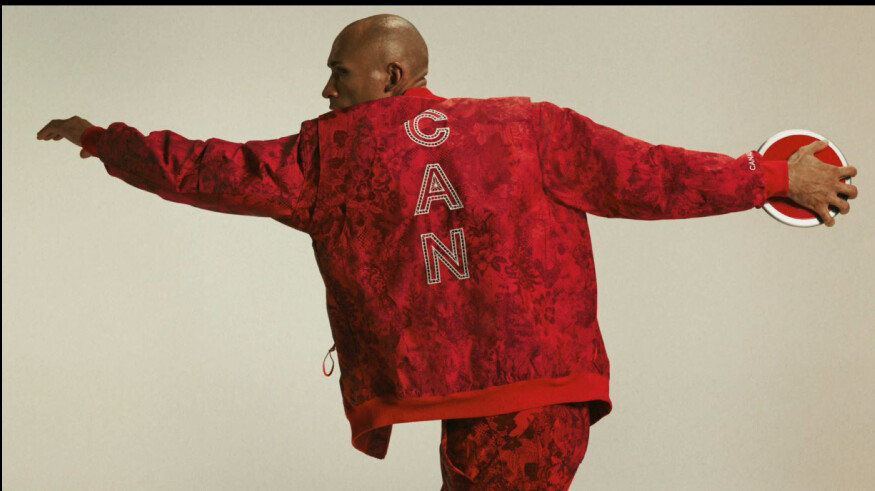
For Paris 2024, Canadian Olympians will be outfitted with five different pieces for five different purposes: Travel, Opening Ceremony, Podium, Media, and Closing Ceremony. Each piece incorporates proprietary technology and sweat-wicking yarns to ensure moisture is effectively moved away from the body, guaranteeing comfort. Products like the convertible jacket and pant allow athletes to personalize their look while remaining prepared for all conditions. Lululemon emphasized that each kit was designed with both form and function in mind, maximizing versatility.
“We heard from all the athletes that comfort is key and being in the right headspace to compete,” says Lululemon chief product designer Sun Choe. “Our athlete kit is intentionally designed to allow athletes to combine pieces to fit their own personal style and uniquely express national pride.”
Here’s an overview of the five kits Canadian athletes will be donning in Paris.
Reaction to the kit
Numerous current and former Canadian athletes attended the unveiling of the uniforms on Tuesday, among them 1996 Olympic gold medallist and Canadian 100m record holder, Bruny Surin, who will serve as the official Chef de Mission for Team Canada at the Paris 2024 Olympic Games.
Sporting the Closing Ceremony kit, adorned with a pattern of the northern lights, Surin voiced his enthusiasm for the athletes’ anticipation of the upcoming event. “This is one of those pre-Games days you eagerly anticipate,” remarked Surin. “You can sense the excitement building among the athletes.”
Reflecting on the evolution of Olympic attire over the past two decades since his last appearance for Canada in Sydney 2000, Surin praised the design’s focus on athlete fit and comfort. “I particularly appreciate that they were crafted with athletes’ comfort and fit in mind,” he noted. “They incorporated feedback from 19 athletes to create this final product.”
Canadian para long jumper Jesse Zesseu echoed Surin’s sentiments, lauding the comfort and versatility of the Team Canada x Lululemon kit. “It’s fantastic,” exclaimed Zesseu. “I’m amazed by how breathable and comfortable it feels.”
Zesseu, the Canadian T37 long jump and discus throw record holder and a top contender for a medal in his event in Paris, eagerly anticipates the opportunity to don the Team Canada kit. “I’m counting down the days until I can wear this Team Canada kit—only 135 to go,” he said with a smile.
Future legacy program
For the first time at Paris 2024, Lululemon has introduced a Future Legacy program with all new styles, including the Team Canada Future Legacy Mini Belt Bag, Team Canada Future Legacy Ball Cap, and Team Canada Future Legacy Scarf. Ten per cent of sales from Future Legacy products will help the next generation of Canadian athletes access the resources, equipment, and funding they need to experience the power of sport—from dreams to podium, and beyond.
(04/28/2024) Views: 29 ⚡AMPby Running Magazine
Why toe spreaders may be your next great recovery tool
Inexpensive, small and simple to use (albeit funny-looking), toe spreaders are commonly associated with pedicures and bunions—but these small devices are now also hailed as essential tools for enhancing foot function and performance. Here’s why runners are increasingly turning to toe spreaders (also called spacers) for better foot health and improved foot flexibility.
Toe spreaders, usually made from silicon, can be purchased for $10 (or less) online, and are usually intended to gently realign the toes and restore their natural spacing. They can be worn while exercising and walking around, or only used when doing foot exercises and strengthening drills—and some research suggests they can lead to performance benefits for athletes, with enhanced efficiency, improved balance and proprioception and an increase in explosive output.
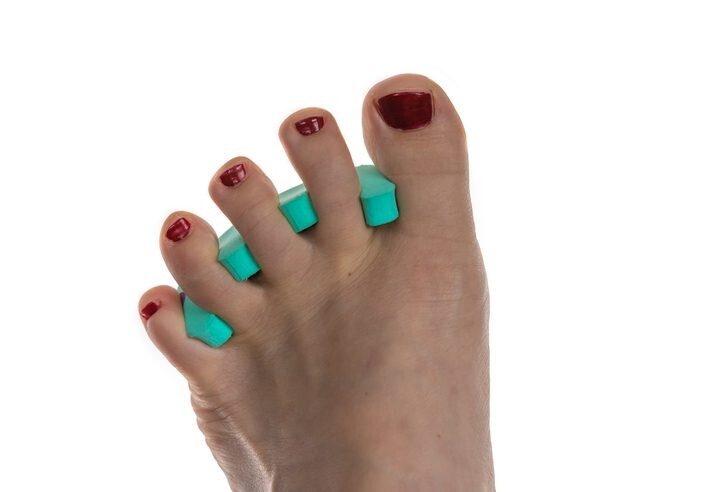
Enhancing foot functionality
In a recent article in The Wall Street Journal, Dr. Dennis Cardone, a sports medicine specialist at NYU Langone Health in New York City, explains that our feet should act like small tripods, with the centre of the heel, ball of the big toe and base of the baby toe all supporting our weight equally. When our feet are squeezed into tight shoes, the tripod becomes uneven and narrow, leading to balance problems and painful injuries like bunions and hammer toes. Runners and other active people may have more potential for injury.
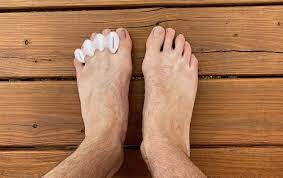
A new foot fad?
While Cardone says that wearing toe spreaders won’t prevent deformities, they can help relieve the pain and are a cheap and easy aid when contrasted with surgery or physical therapy. The simple gadgets can be purchased online from Amazon and other websites—and runners aren’t the only ones sporting them. Celebrities like model Ashley Graham are jumping on the bandwagon, posting photos of their toes in spreaders or while wearing toe-spreader socks.
Improved circulation for happier feet
As we walk, we should feel our toes (especially the big ones) press into the ground, Courtney Conley, founder of web-based foot health resource Gait Happens, explains to the WSJ. Strengthening the muscles of the feet and toes can lead to better overall foot stability and balance during running. Besides building strength and boosting alignment, spacers can also improve blood circulation by creating space between the toes, which promotes healing and reduces the risk of inflammatory conditions like plantar fasciitis. Toe spacers can also be beneficial for athletes with foot fatigue.
The rising popularity of toe spreaders is encouraging people to take better care of their feet. Many people aren’t aware that their toes should be able to move individually, similar to fingers. When slipping toe spreaders on for the first time, the sensation may feel quite intense or uncomfortable, and experts suggest gradually increasing the time wearing the spacers as you watch TV or do chores. Adding a few foot and toe exercises, spaced throughout the day (with or without toe spreaders on), can make wearing the tools less uncomfortable, while giving foot function an extra boost.
(04/27/2024) Views: 54 ⚡AMPby Keeley Milne
World-class fields will go for course records and target Olympic qualification in Sunday’s Haspa Marathon Hamburg
Kenya’s defending champion and course record holder Bernard Koech, who tied his personal best with 2:04:09 a year ago, is back while Gotytom Gebreslase, the World Champion from 2022, is the favorite in the women’s race.
The Ethiopian, who has a PB of 2:18:18, wants to secure the third spot for the Paris Olympic race in Hamburg. Fellow-Ethiopian Yalemzerf Yehualaw holds Hamburg’s course record of 2:17:23. Late entry Nienke Brinkman will also try to qualify for Paris. The Dutch runner is the bronze medalist from the European Championships in Munich in 2022.
Organizers of Germany’s biggest and fastest spring marathon have registered a record total of 38,210 runners. Among them are 15,000 athletes who will compete in the classic event. “If all goes well on Sunday and the pacemakers run a bit more even and slightly faster we could see similar results to last year. I am curious to see if Gotytom Gebreslase manages to qualify for Paris and if she is able to break the course record. But even a sub 2:20 time is something special since we only have one so far,“ said chief organizer Frank Thaleiser, who introduced an additional bonus of 20,000 Euros for the course records. All runners – men and women – who finish inside the course records share this amount. If there would be one man and three women who clock faster times than the previous records they would each receive 5,000 Euros. “This way we want to encourage the runners in a leading group to go for a fast time after the last pacemaker has dropped out,“ explained Frank Thaleiser.
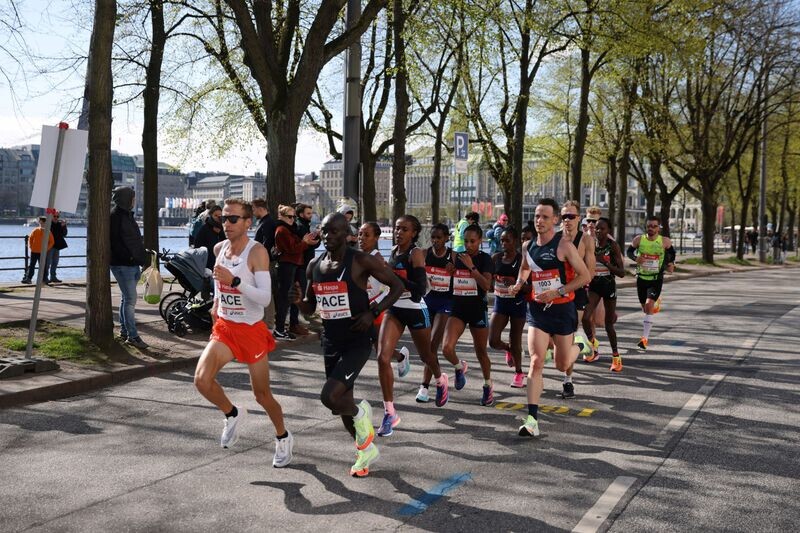
“Training was going well and compared to last year in Hamburg I have reached the same level. So if the weather conditions are fine then a fast time is possible,“ said Bernard Koech. It is highly unlikely that he could still be selected for the Olympic marathon, but he said: “I will give everything and if they should select me then I will be ready.“ Bernard Koech is one of seven runners in the race who feature personal bests of sub 2:05:00. While Ethiopia’s Getaneh Molla is the fastest on the start list with 2:03:34 he has not reached such times in recent years.
Brimin Misoi and Philemon Kiplimo are tipped to be among the strongest challengers for defending champion Koech. Both have done very well on German roads in the past. Misoi has won the Frankfurt Marathon twice in a row. When he defended his title last autumn the Kenyan improved to 2:04:53 despite windy and rainy conditions. He now intends to run faster in Hamburg. “I ran the Paris Marathon at the beginning of April. But because of breathing problems I dropped out and then decided to go for Hamburg,“ said Misoi. It was in Berlin last year, where Philemon Kiplimo improved to 2:04:56 and finished eighth in a very competitive race. “German roads are good for me, so I am looking forward to Sunday. I want to run with the leading group and improve my time,“ said Kiplimo, who has a superb half marathon PB of 58:11.
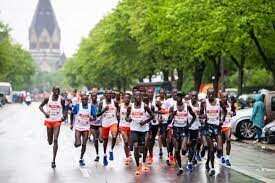
“We are planning a pace in the region of the course record, may be slightly faster. Additionally there will be a really big group of probably 25 athletes who will target the 2:08:10 Olympic qualifying time“, said Hamburg’s Elite Race Coordinator Jurrie van der Velden of Jos Hermens’ Global management. “We are not quite sure yet, but the women’s leading group might run a pace somewhere between 2:16 and 2:18. There is a group as well which targets Olympic qualification, running sub 2:26:50 pace.“
“It is my goal to qualify for the Olympics on Sunday,“ said Gotytom Gebreslase, who surprisingly won her debut marathon in Berlin in 2021, then went on to become World Champion in the following year and took the silver medal at last year’s global championships in Budapest. Jurrie van der Velden explained that the Ethiopian federation usually selects the two fastest runners during the qualifying window and then picks the athlete who performed best at major championships as long as that athlete confirms good form. When Gebreselase ran the Nagoya Marathon in March she did not finish. “I got stomach problems during the race and dropped out after 35k. Then I trained well and decided to run in Hamburg. I am in good form now and want to run sub 2:18 here. Perhaps I can attack the course record. I would think such a performance should be enough to get selected,“ said Gotytom Gebreslase.
Nienke Brinkman joined Hamburg’s elite field at short notice. The European bronze medalist from 2022 has still not achieved the qualifying time for the Olympics. She ran her PB of 2:22:51 in 2022, but that was outside the qualifying period. A year ago Brinkman clocked a fine 2:24:58 in Boston, but this course is not record eligible and results do not count as qualifying times. However it is a far easier task for Brinkman to achieve qualification in Hamburg than for Gebreslase. Reaching the qualifying standard of 2:26:50 should be enough for the former Durch record holder.
A debutant could well be in the mix for at least a place on the podium: Irine Cheptai is the World Cross Country Champion from 2017. “I started preparing for my marathon debut in January and training went very well. I think I will go with the second group on Sunday,“ said the Kenyan who has already run a very fast and promising half marathon time of 64:53.
Among a number of German runners Katharina Steinruck is probably the one who could produce the national highlight in Hamburg. She improved to 2:24:56 this winter and now hopes to break the family record: It was exactly 25 years ago when Katrin Dörre-Heinig, the bronze medalist of the 1988 Olympic marathon in Seoul, won the Hamburg Marathon with 2:24:35. For many years this remained the German marathon record. “It is my aim to break my Mum’s record and it would be great if I could do it in Hamburg,“ said Steinruck.
(04/27/2024) Views: 67 ⚡AMPby AIMS
Haspa Marathon Hamburg
The HASPA MARATHON HAMBURG is Germany’s biggest spring marathon and since 1986 the first one to paint the blue line on the roads. Hamburcourse record is fast (2:05:30), the metropolitan city (1.8 million residents) lets the euphoric atmosphere spill over and carry you to the finish. Make this experience first hand and follow the Blue Line....
more...British man runs 4-hour marathon while drinking 25 glasses of wine
A British man and TikToker combined two of his favourite things–running and wine–at this year’s London Marathon to complete an epic challenge for charity. Instead of opting for a flashy costume or a Guinness World Record, Tom Gilbey of London, an Internet wine connoisseur, took on the challenge of blind tasting a different glass of wine at every mile of the 26.2-mile course–and he still finished in a respectable time.
While most marathon participants focus on pacing themselves and staying hydrated with water or electrolyte drinks, Gilbey was fuelled by 25 different wines from around the world, savouring both white and red varieties along the route. Despite the unconventional and do-not-try-this-at-home approach, Gilbey completed the London Marathon in four hours and 41 minutes, finishing 22,316 overall in a field of 30,000-plus.

To make the marathon more challenging, Gilbey guessed each wine he was drinking at each mile, and despite the mental and physical fatigue (from the drinking and the marathon), he guessed 21 of the 25 wines correctly. Gilbey said he even had a glass of champagne waiting for him at the finish line, but his friend’s phone died (who was shooting the video for him).
Gilbey wasn’t just in it for the (dubious) accomplishment; he also ran for a cause close to his heart. The TikTok wine expert raised money for the Sobell House Hospice Charity in Oxfordshire, U.K., in memory of his mother, Caroline.
Gilbey posted updates on TikTok under the username @tomgilbeywine, garnering over 2.5 million views in 24 hours. The online community was astounded by Gilbey’s accomplishment, with many expressing admiration for his ability to combine two seemingly disparate passions—running and wine. One user hilariously commented, “I did this last night without the running.”
Besides being a wine-drinking marathoner, Gilbey has spent his entire life working with wine, and also runs his own wine business—so it makes sense why he was able to identify so many of them correctly.
His goal was to raise £2,000 (CAD $3,400) for Sobell House Hospice, and he’s gone well beyond his fundraising goal, raising nearly £14,000 (CAD $23,800). If you’d like to contribute to Gilbey’s fundraiser for Sobell House, you can do so here.
(04/27/2024) Views: 44 ⚡AMPby Running Magazine
76 year old Jeff Aston has run every London Marathon
There are only six people who can say they have run every London Marathon and Jeff Aston is one of them.
In 1980 he spotted an advert for the event due to take place the following year and decided to go for it.
Now, four decades later, Jeff, 76, from Cardiff, is celebrating completing is 44th and has no plans on stopping.
When he was younger, Jeff enjoyed playing squash and football until the River Taff flooded the courts where he played and he started running around the playing fields.
While leafing through a magazine in 1980, he came across an advert for the first London Marathon, held the following year, and decided to go for it.
"I always wanted to run a marathon when I was a teenager," he said.
"When the first London Marathon came on to the scene, back then it was the biggest marathon in the UK."
Just six months before the event, Jeff started Les Croupiers running club in Cardiff.
Looking back on his first race, when only 7,000 people took part compared with 53,000 now, he remembers the atmosphere: "I remember it was a drizzly and windy day, with the noise of the crowds.
"By then I had run a few marathons and races so I knew what was coming. But it was the first time I had been to such a mass event at that time."
By 1983, Jeff had recorded his best time after completing the course in 2:29:31.
During the pandemic in 2020 the event was open for a select few to take part in the race where they lived.
That year, Jeff raised money for the City Hospice in memory of his late wife Val, who died in 2016 after being diagnosed with cancer.
Jeff signed up for the first London Marathon after seeing an advert in the national running magazine
An "ever-present" runner is someone who has run every London Marathon.
In 1995, organisers recognised these runners by awarding them a special commemorative medal and guaranteed acceptance for future events.
Now, there is only Jeff and five other ever presents left.
In last Sunday's race, Jeff clocked a time of 8:06:27, finishing 61st in his age category.
So why does Jeff take on the challenge every year?
"It's the challenge of the marathon distance that keeps me going. Going back every year and trying to meet your personal best.
"I'm a lot slower than what I was at my peak but I think 'what can I do to be better this year than I was last year?'
"While I still can do it, I will do it."
(04/26/2024) Views: 73 ⚡AMPby BBC
Jennifer Bigham to Headline Women’s Field at 2024 DICK’S Sporting Goods Pittsburgh Marathon
Pittsburgher Jennifer Bigham will headline the women’s field at the 2024 DICK’S Sporting Goods Pittsburgh Marathon on Sunday, May 5. Bigham, a formidable force in the local running community, has an impressive record that includes victories at the USA Masters Half Marathon Championships and the USA Masters One Mile Championships in 2022. With five wins at the City of Pittsburgh Great Race, she already has cemented her status as a local legend but is now ready to tackle 26.2 miles for the first time in PIttsburgh.
“I’ve been looking forward to running the Pittsburgh Marathon for many years, and my time has finally come,” Bigham said. “I’ve been a part of many events on marathon weekend, from the toddler trot and kids marathon, to the 5K, and half-marathon. Lining up to experience the full 26.2 in my city that I love will be very special. I know the cheers from my community on race day will power me through the tough moments. This finish line will be a special one for me!”
After taking an eight-year hiatus from competitive running post-college, she returned to the sport following the birth of her first child. Now a mother of four, Bigham’s comeback story is an inspiration to athletes and parents alike. Her remarkable comeback was highlighted by qualifying for and competing in the 2020 U.S. Olympic Marathon Team Trials.
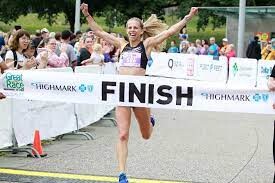
This year she will face tough competition from Jane Bareikis, who set a marathon personal best of 2:29:00 at the Berlin Marathon last fall, and local runner Laura Harnish, who also ran in the 2020 U.S. Olympic Marathon Team Trials and holds a marathon personal best of 2:42:09.
The 2024 DICK’S Sporting Goods Pittsburgh Marathon will offer a prize purse of $32,000 with a $7,000 top prize. For more information about the 2024 DICK’S Sporting Goods Pittsburgh Marathon, visit thePittsburghMarathon.com.
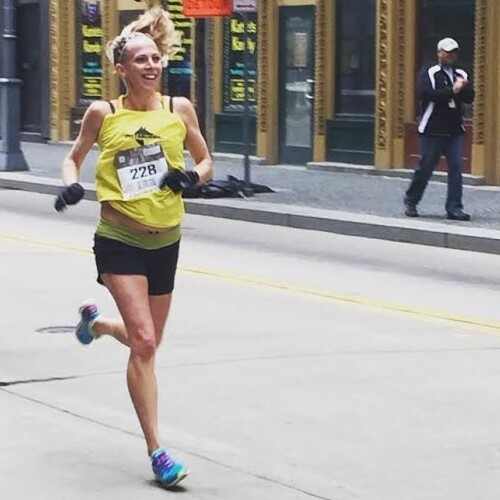
About the DICK’S Sporting Goods Pittsburgh Marathon Weekend of EventsThe Pittsburgh Marathon was held annually from 1985-2003. After a five-year hiatus, the DICK’S Sporting Goods Pittsburgh Marathon was relaunched in 2009 and debuted with a sold-out field of 10,000 participants. It has grown each year since, evolving from a single race day into a weekend of events for the whole family that annually attracts nearly 40,000 runners. Read more at: ThePittsburghMarathon.com
About P3RP3R is the region’s go-to premier sporting event and experience expert. While best known for the annual DICK’S Sporting Goods Pittsburgh Marathon, P3R organizes up to 20 major events every year. With a rich history of working with top-tier clients such as the Pittsburgh Steelers, UPMC Hillman Cancer Center, the Pittsburgh Penguins, the National Senior Games, and more, P3R brings operational excellence to every aspect of event planning and execution. As part of P3R’s non-profit mission to inspire any and all to MOVE with us, we provide premium event experiences and robust programming – including the Run for a Reason Charity Program, award-winning Kids of STEEL program, Pittsburgh Corporate Challenge, RUN Varsity, and more – that engage everyone in the Western Pennsylvania community and beyond.
(04/26/2024) Views: 86 ⚡AMPDick's Sporting Good Pittsburgh Marathon
This race is your game - however you decide to play it. As a competitor. A fund raiser. An enthusiast. A veteran. A team player. It's whatever you want it to be. It's whatever you make it. It's YOUR game..... Run it. Play it. Own it. Love it. Runners will race on the North Shore of Pittsburgh, cross each of...
more...Kipchoge expects tough test in Paris
Two-time Olympic champion Eliud Kipchoge anticipates a fierce battle at the Paris Olympic marathon, even tougher than when he won the first of his two titles in Rio 2016.
“It will be a tough race. 106 countries will be participating. Everyone at the start line is a champion in their rights. I do not underrate anybody. I am not the same as when I won my first title,” Kipchoge noted.
Last month, Kipchoge ran at the Tokyo Marathon, where he placed 10th in 2:06:50.
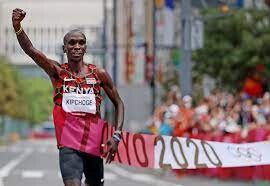
In a post-race interview, Kipchoge stated that it was a bad day in office for him but he hopes to build on the lessons learned.
The legendary Olympian said his sights are set solely on the Olympics, ruling out any other race as he puts all his energy and focus into securing a hat-trick of titles.
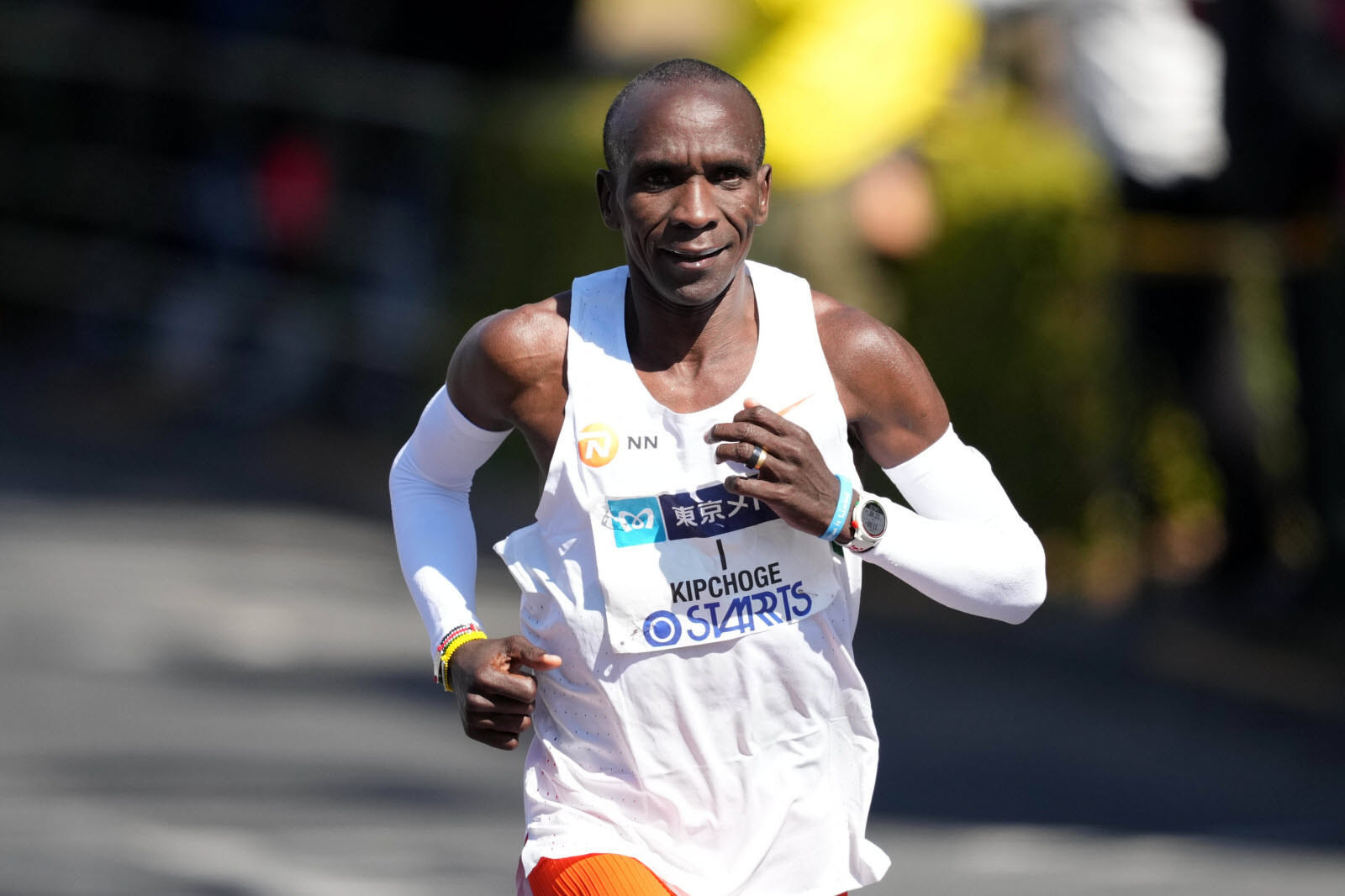
“I have no plans to race in any other marathon. I am putting all my mind and training into the Olympics. I want to win a third title,” he noted.
Confident in his abilities, the 39-year-old is determined to earn his spot to make his fifth appearance in the global extravaganza.
“I trust I will make the final three to represent Kenya in Paris. This will be my fifth appearance in the Olympics,” he noted.
Athletics Kenya presented a list of five male athletes to the National Olympics Committee of Kenya to undergo training in readiness for the Olympics. Only three will go to Paris.
Kipchoge is joined by the Tokyo Marathon champion Benson Kipruto, Kagawa Half Marathon silver medalist Alexander Mutiso and Tokyo Marathon silver and bronze medalists Timothy Kiplagat and Vincent Ngetich.
“Representing Kenya at such a stage feels good. This is the only way I can give back to my country. I can’t build bridges or roads. This is how I show my patriotism to my country,” he noted.
Kipchoge’s first appearance at the Olympics was in Athens 2004, where he won bronze in the 5,000m clocking 13:15.10. He upgraded it to silver at Beijing 2008 in a time of 13:02.80 — behind Ethiopia’s Kenenisa Bekele (12:57.82).
In Rio 2016, he clocked 2:08:44 to bag the marathon title and defended it at Tokyo 2020, clocking 2:08:38.
NOC-K secretary general Francis Mutuku tipped Kipchoge to achieve his dreams, especially with the determination and discipline he has shown in training under Patrick Sang.
“Sang told us that when he says training starts at 5 am, Kipchoge is ready at that time. He is devoted and disciplined in his training,” he noted.
Despite facing criticism, Kipchoge remains grounded, believing that humility is the ultimate key to triumph.
“The longest tree receives all the wind. The tree can lose all its leaves and endure the winter and still be firm. Being humble has been and will always be the key to success,” he added.
(04/26/2024) Views: 80 ⚡AMPby Teddy Mulei
The marathon in Paris at the Olympics could be a fast one but you never know with all the pressure there will be on all the athletes. 4/26 1:21 pm |
Paris 2024 Olympic Games
For this historic event, the City of Light is thinking big! Visitors will be able to watch events at top sporting venues in Paris and the Paris region, as well as at emblematic monuments in the capital visited by several millions of tourists each year. The promise of exceptional moments to experience in an exceptional setting! A great way to...
more...Natasha Wodak on her last dash for the Paris Olympics
With her final attempt at qualifying for this summer’s Paris Olympics just days away, Canadian marathon record holder Natasha Wodak says she feels proud of her marathon build and confident going into Sunday’s Hamburg Marathon. After falling short of the Olympic standard at the Houston Marathon in January, Wodak quickly embarked on another marathon build.
Wodak, who is 42, runs less mileage than some other elite athletes, and her builds include a lot of cross-training, which provides an aerobic hit while minimizing the risk of injury. Wodak’s favourite mode of cross-training is to use the elliptical trainer, and she shared three ways the elliptical aids her training, for the benefit of newcomers and seasoned runners alike.
Injury prevention
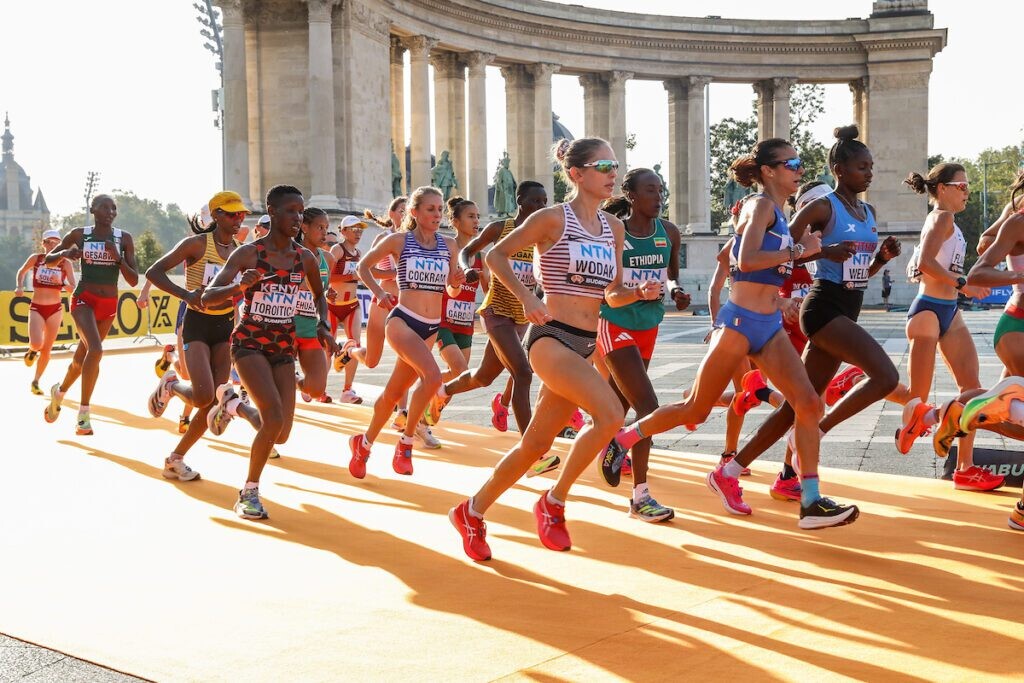
In 2020, after facing a series of injuries that resulted in Wodak developing arthritis in her toes, her coach at the time, 1984 Olympic bronze medallist Lynn Kanuka (she is currently coached by physiologist Trent Stellingwerff) decided to mix things up. “We were like, ‘if we’re going to do the marathon, it’s a big injury risk, so we’re going to do a lot of cross-training,’” Wodak says. That’s when Wodak started getting on the elliptical trainer two or three times a week, which significantly benefited her aerobic fitness without stressing her joints or soft tissues. (Studies show that low-impact exercise modalities, such as the elliptical trainer, provide a great way to avoid injuries to bone, tendon, muscle, or ligaments). With the elliptical, Wodak explains, “I know it’s going to feel good; it’s not going to hurt.”
Changing things up
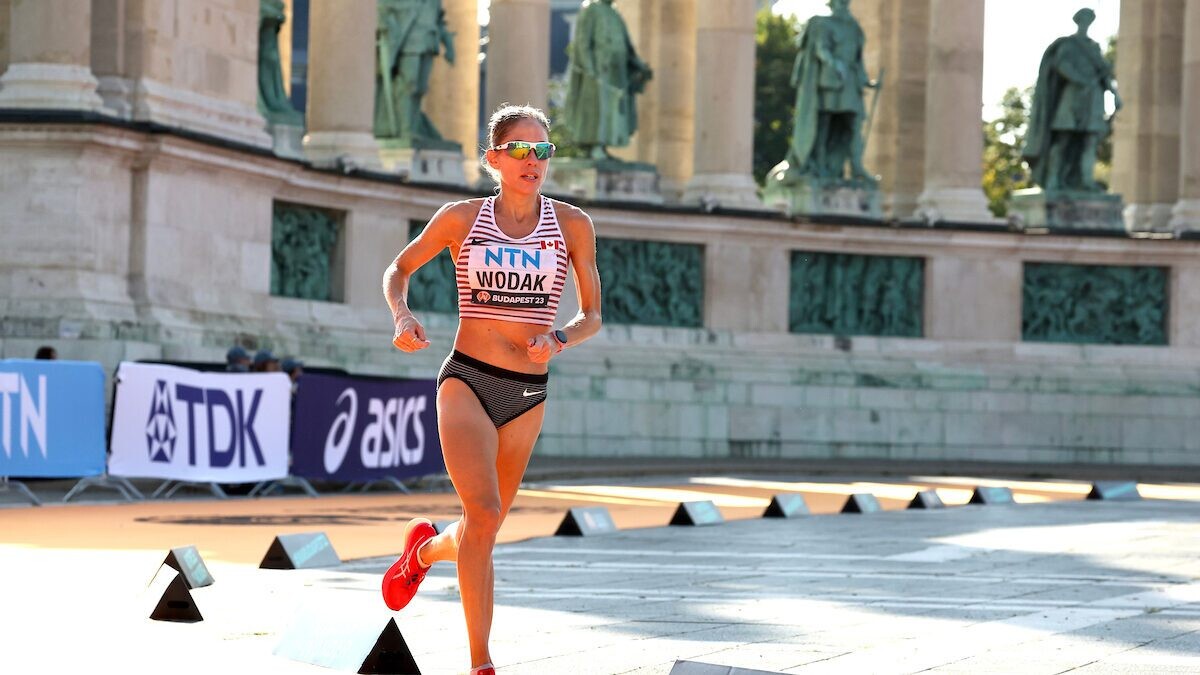
Unlike other elite female marathoners, who typically hit 200 kilometres a week and do double workouts, Wodak normally runs 140 kilometres weekly and supplements doubling with workouts on the elliptical trainer. “I do feel somewhat unique as an elite marathoner,” Wodak says, “but you just have to find what works for you and not get carried away with the numbers … I’m not losing a lot of mileage this way, and it works for me,” she says.
In addition to changing up the mode, Wodak likes to find ways to change her scenery. Wodak’s hometown, North Vancouver, rains an average of 157 days a year. For Wodak, the elliptical provides a break from the often unpredictable and rainy climate. “We have an elliptical at home, so on a day when it’s pouring outside, I can watch TV set up across from me… it’s nice!” Wodak says with a laugh.
Lowering the impact
Compared to running outdoors or on a treadmill, research shows that the impact on leg muscles is reduced through elliptical training. “It uses many of the same muscles without the same impact, and it’s not hurting my toes,” Wodak explains. While running in Houston, she suffered an injury to her hamstrings, and a cramp in her right calf late into the race. To prevent any chance of injury this time, she stuck to the formula that works best for her: lower mileage and lots of cross-training. So far, it’s doing the trick. “The marathon build went well–better than I could have hoped for with the short turnaround, and it seems to be getting better with tapering,” says Wodak.
Just days before hitting the start line in Hamburg, Wodak says her body feels much more ready than in Houston. She recalls, “The week leading up, I had a gut feeling that the race wasn’t going too well, my body didn’t feel good, and I thought about postponing.” This time, Wodak says she feels at ease, enjoying quality time with her team in Germany instead of worrying. “You don’t want to sound cocky, but you really have to believe it wholeheartedly, so I’m trying to do that,” says Wodak. “I’m excited, ready to go, and going to run standard; it’s happening.”
(04/26/2024) Views: 71 ⚡AMPby Katrianna Desante
Haspa Marathon Hamburg
The HASPA MARATHON HAMBURG is Germany’s biggest spring marathon and since 1986 the first one to paint the blue line on the roads. Hamburcourse record is fast (2:05:30), the metropolitan city (1.8 million residents) lets the euphoric atmosphere spill over and carry you to the finish. Make this experience first hand and follow the Blue Line....
more...Berihu, Ayele and Zeray ready for fast racing in Istanbul on Sunday April 28
Solomon Berihu of Ethiopia and Kenya’s Gladys Chepkurui head a very strong field of elite runners at the Türkiye Is Bankasi Istanbul Half Marathon on Sunday. They feature personal bests of 59:17 and 65:46 respectively. The men’s field is really impressive since eight runners have already broken the one hour mark and another nine feature personal bests of sub 61:00.
There are seven women with sub 68:00 PBs and an additional three have run under 70:00. A couple of European runners will try to achieve the qualifying times for the European Championships in Rome in June. Among them are Turkey’s record holder Ali Kaya, who will start a comeback, and Sweden’s debutant Meraf Bahta. The required times stand at 61:40 and 70:30 for men and women respectively.
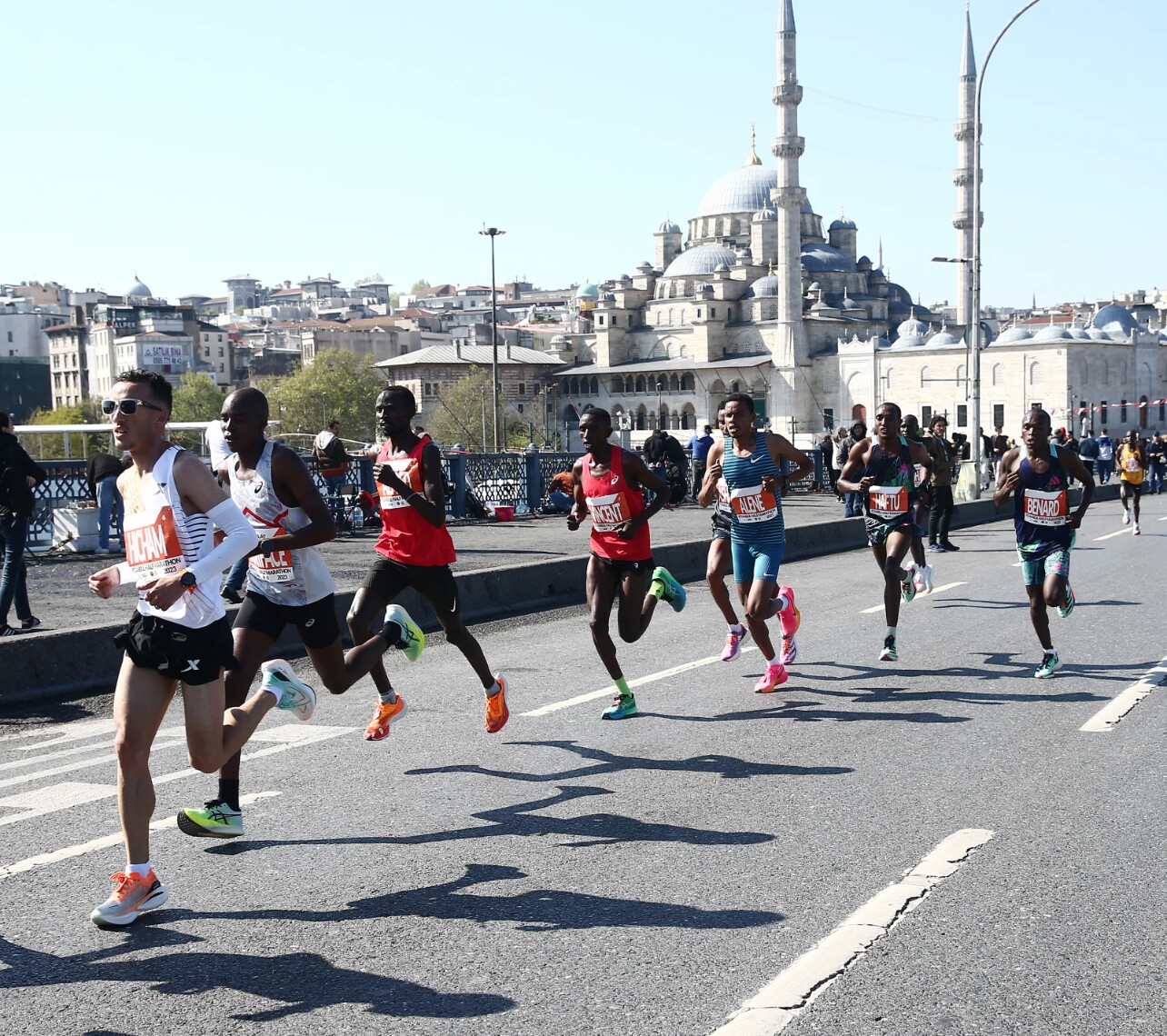
Organisers of the Türkiye Is Bankasi Istanbul Half Marathon, which is a Gold Label Road Race of World Athletics, have registered a record number of 14,200 runners. This includes a 10k race staged parallel on Sunday. Turkey’s number one road race is one of the world’s major half marathons and has a world record course. Three years ago Kenya’s Ruth Chepngetich broke the global mark in Istanbul with 64:02. While the world record has been improved since the course record still stands and will likely remain in place on Sunday.
However there could still be another very fast time from the women’s winner on Sunday. With a personal best of 66:04 Ftaw Zeray is the second fastest on the start list behind Gladys Chepkurui. It was three weeks ago when the 26 year-old ran her first race of the year and finished runner-up in the Berlin Half Marathon. In very difficult conditions with temperatures well over 20 Celsius she still ran 67:22. “I have well recovered from the race in Berlin. I feel I can run a personal best on Sunday,“ said Ftaw Zeray, who was sixth in the World Half Marathon Championships last year.
With regard to the weather forecast high temperatures will not be a problem for Ftaw Zeray on Sunday in Istanbul. But with six other women who have already run sub 68:00 the challenge is likely to be tougher than in the German capital. While Gladys Chepkurui missed her flight to Istanbul and will now arrive half a day later, she will hardly be delayed when it comes to racing fast. The Kenyan clocked her 65:46 PB in Barcelona a year ago and has run sub 70:00 eleven times.
Ethiopians Betelihem Afenigus and Aberash Shilima are the next fastest on the entry list with PBs of 66:46 and 67:26 respectively. However a debutant could also be in the mix for a place on the podium: Just 21 years old Miriam Chebet showed great form and consistency this year with three sub 31:00 times at 10k. When she won the race in Ibiza, Spain, in January she clocked a fine PB of 30:40.
Another promising debutant is Sweden’s Meraf Bahta. The European 5,000 m champion from 2014 is a late entry to the Türkiye Is Bankasi Istanbul Half Marathon. The 34 year-old is the Swedish 10k record holder with a 31:22 PB from 2022. The former Eritrean could qualify for the European Championships if she runs 70:30 or faster in her debut. Due to an injury Italy’s Giovanna Epis had to withdraw from the race in Istanbul.
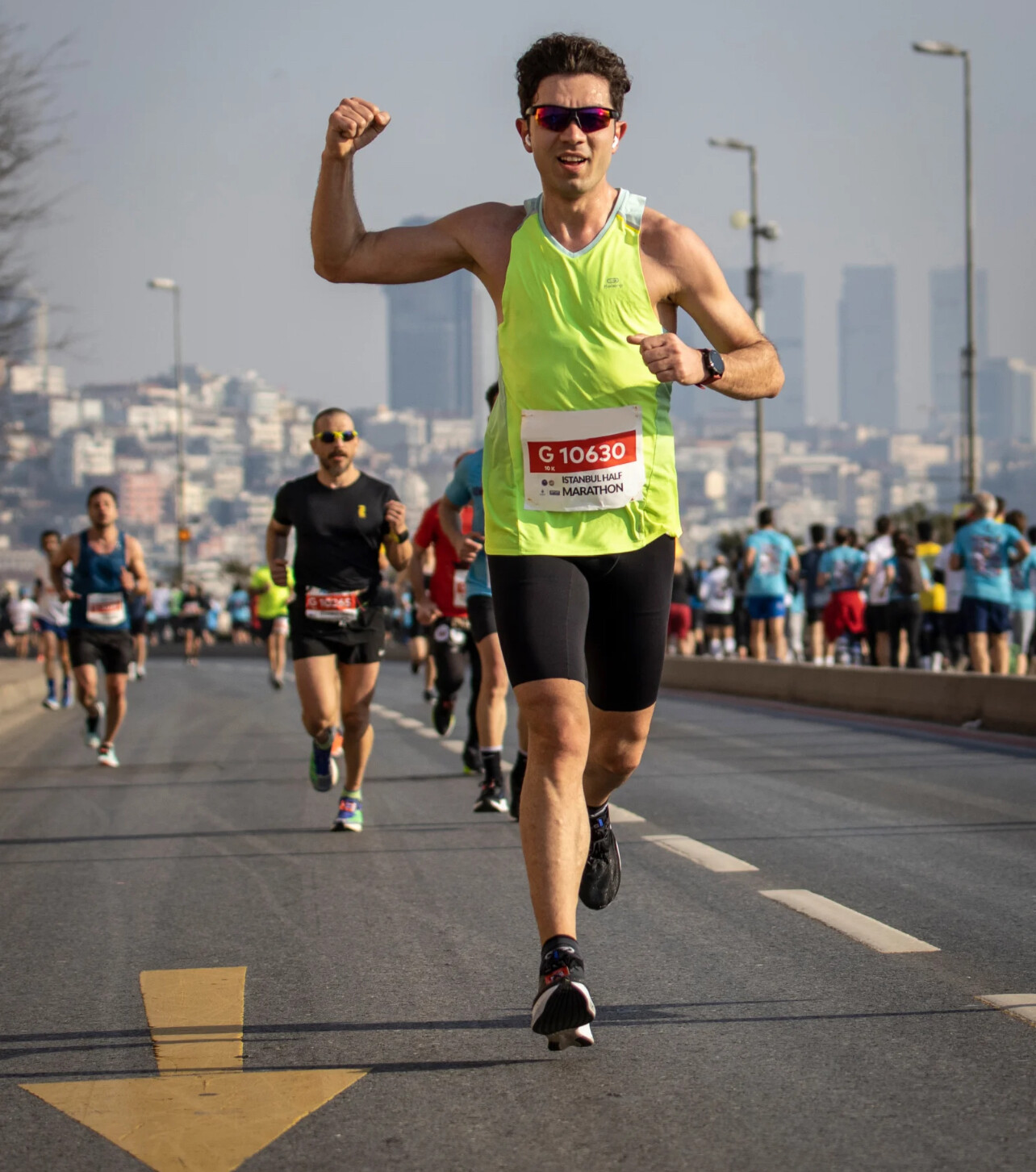
Solomon Berihu is the fastest runner on the start list with his PB of 59:17. He ran this time back in 2019 in New Delhi and has not raced for almost a year. “I had an injury that kept me away from training. Now, I am feeling better and I am back in shape,“ explained the 24 year-old Ethiopian, who hopes to come back with a bang on Sunday. “My first goal is to win the race, but I am also hoping to run 59:30 or even faster.“ The Istanbul course record stands at 59:15.
Another Ethiopian is among the hot favourites: Dinkalem Ayele has shown great form this year when he improved to 59:30 in Barcelona and then won the Lisbon Half Marathon in very warm conditions with 60:36. “I am in good form and confident that I can go close to 59 minutes if weather conditions are suitable,“ said 23 year-old Dinkalem Ayele.
Solomon Kipchoge will probably be among the athletes who will challenge the two Ethiopians. The Kenyan, who improved his half marathon PB by almost two and a half minutes last year when he ran 59:37 in Lille, chose to come to Istanbul because of the fast course. “I will not start the race with a certain time or placing in mind. It depends on how my body will feel during the race. But I will try to improve my PB,“ said Solomon Kipchoge, who has the same surname as the double Olympic Champion Eliud Kipchoge. “I have no connection to Eliud, I am often asked about this outside Kenya. I am happy to be asked, because Eliud is a legend.“
Having not race since 2020 Ali Kaya surprised the organisers when he asked them to include him on the start list for a comeback race. The 30 year-old former Kenyan, who competed for Turkey since 2013, is a former winner of the Türkiye Is Bankasi Istanbul Half Marathon. When he took the race in 2016 he established a national record of 60:16 that still stands today. The 61:40 qualifying time for the European Championships could be a goal for Ali Kaya. Spaniard Juan Antonio Perez, who has a PB of 60:58, will probably also target this time.
Elite runners and personal bests
MEN
Solomon Berihu ETH 59:17
Edmond Kipngetich KEN 59:25
Dinkalem Ayele ETH 59:30
Solomon Kipchoge KEN 59:37
Benard Biwott KEN 59:44
Antony Kimtai KEN 59:45
Tadesse Abraham SUI 59:53
Hicham Amghar MAR 59:53
Hillary Kipchumba KEN 60:01
Abraham Kipyatich KEN 60:03
Gemechu Bute ETH 60:12
Ali Kaya TUR 60:16
Cameron Levins CAN 60:18
Vincent Mutai KEN 60:20
Edward Pingua KEN 60:44
Benard Sang KEN 60:57
Juan Antonio Perez ESP 60:58
Albert Rop BRN 61:05
Mathew Samperu KEN 61:06
Tegegn Tamerat ETH 61:15
Ashenafi Moges ETH 61:22
WOMEN
Gladys Chepkurui KEN 65:46
Ftaw Zeray ETH 66:04
Betelihem Afenigus ETH 66:46
Aberash Shilima ETH 67:26
Anchinalu Dessie ETH 67:30
Zewditu Aderaw ETH 67:44
Betty Kibet KEN 67:44
Ruth Jebet BRN 68:22
Zinashwork Yenew ETH 69:16
Sheila Chelangat KEN 69:38
Meseret Dinke ETH 70:39
Amina Bettiche ALG 71:38
Miriam Chebet KEN Debut
Meraf Bahta SWE Debut
(04/26/2024) Views: 86 ⚡AMPIstanbul Half Marathon
WE ARE RUNNING A HALF MARATHON ON THE WORLD’S FASTEST RACE COURSE! The Historical Peninsula race course, home to 8,000 years of history, is enthusiastically run every year accompanied by the unique beauty of Istanbul! This unique Istanbul Half Marathon race course, which holds Türkiye’s first athletics record with the Women’s World Half Marathon record in 2021 and ranks first...
more...World record holder Jacob Kiplimo is first elite athlete named to run the Copenhagen Half Marathon
Organizers of the Copenhagen Half Marathon have announced that Jacob Kiplimo will run in the event on September 15.
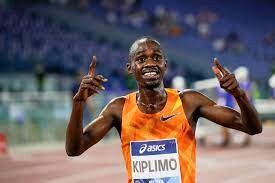
Kiplimo, the current world record holder for the half marathon, may try to beat his own record of 57:31 set in Lisbon in 2021, suggested organizers.
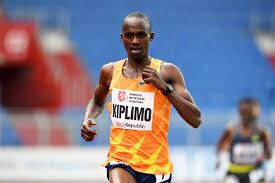
Despite his age of only 24, Jacob Kiplimo of Uganda has already established himself as one of the world’s leading long-distance runners. This year he also shows excellent form where won the World Athletics Cross Country championships in Belgrade.
“We are proud that Jacob Kiplimo will start in Copenhagen. His participation is a clear proof that Copenhagen Half Marathon is established as one of the most prestigious and fastest half marathon races in the world and can attract both the absolute world elite and a record number of participants from both Denmark and abroad,” said Dorte Vibjerg, CEO of the organizers, Sparta Athletics & Running.
(04/25/2024) Views: 79 ⚡AMPby AIMS
Copenhagen Half Marathon
The Copenhagen Half Marathon was the first road race in Scandinavia and is one of the fastest half marathons in the world. The Copenhagen Half Marathon has been awarded with the International Association of Athletics Federation's (IAAF) most distinguished recognition - the IAAF Road Race Gold Label. Copenhagen Half Marathon was awarded the IAAF Road Race Bronze Label in January...
more...How to shave time off your marathon PB while running less
Sooke, B.C’s Kate Guy says that at 45, she is only getting faster in the marathon, and is close to breaking the three-hour mark, despite running less volume than she used to in her training.
The full-time consultant has been running for more than 20 years, and last week, ran her fastest Boston Marathon yet (3:10). It wasn’t until she started prioritizing quality work in every single run that she started seeing her marathon times drop significantly. She ran a three-hour marathon last year and now has her sights set on sub-three this summer.
Guy says that her run training has changed a lot in the two decades she’s been running, and the biggest difference is that she has cut out almost all “slow” running. She runs three or four times per week and ensures that these runs are packed with quality.

“In my experience, focusing on running at marathon pace is more helpful than long, slow, running” Guy says, when talking about where she prioritizes time on her feet. “If you only train your body to run slow, then you cannot expect to perform at a faster pace miraculously on race day.”
As it turns out, Guy finds value in keeping some cycling in her weekly training. She credits this cross-training approach to her recent speed boost and history of staying injury-free (Guy has not had any major running injuries in her 20 years in the sport).
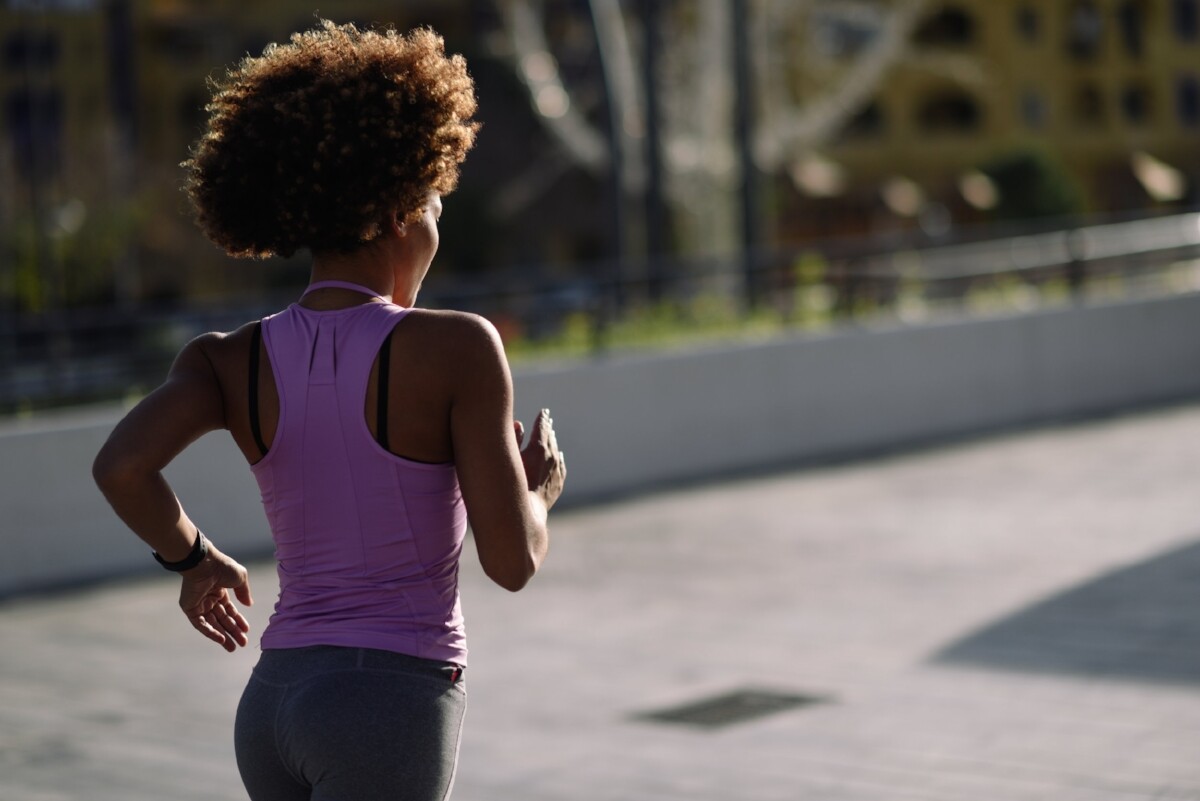
“On the weekend, I do a long bike (two to three hours) on Saturday, followed by my long run on a Sunday,” she explains. “This is great, because my legs aren’t feeling fresh on Sunday, and it promotes running on tired legs, like you would at the middle to end of a marathon.”
Without easy runs in her week, Guy prioritizes three types of run sessions in her training: speed work, hill repeats, and long runs with tempo running sandwiched in. For the latter, there are three main long run workouts she follows:
Over-unders
5 km easy warmup
3x (1 km at 15 seconds faster than goal marathon pace, 1 km at 15 seconds slower than goal marathon pace)
easy cooldown
Long run at race pace
20 to 30 minutes easy warmup
2 hours at goal marathon pace
15 minutes easy cooldown
Progression long run:
Running for 2.5 hours: start easy and every 30 minutes, increase pace by 15 to 20 seconds per kilometer
High-volume running will always be the training method of choice for many top runners and coaches, but Guy proves that a different approach can produce the same results for amateur runners looking to maximize their available training time. For injury-prone runners, dialing back on volume but increasing quality and keeping in lots of cross-training may be the key to consistent improvement across long distances.
“This training style is definitely underrated, but my results demonstrate that you can get faster as you age, with less stress on your body,” Guy says.
(04/23/2024) Views: 114 ⚡AMPby Claire Haines
How mismanagement cost Kenya's race walkers spot at Paris Olympics
Kenya's race walking team faced unexpected setbacks en route to a crucial Olympic qualifier in Antalya.
Kenya's aspirations for a strong showing at the Paris Olympic Games suffered a severe blow due to a logistical nightmare that prevented the national race walking team from competing at the World Athletics Race Walking Team Championships in Antalya, Turkey.
The team, which included notable athletes like 2022 world bronze medalist Samuel Gathimba and African Games champion Emily Ngii, embarked on their journey from Nairobi to Antalya, anticipating to secure their spots at the upcoming Olympics.
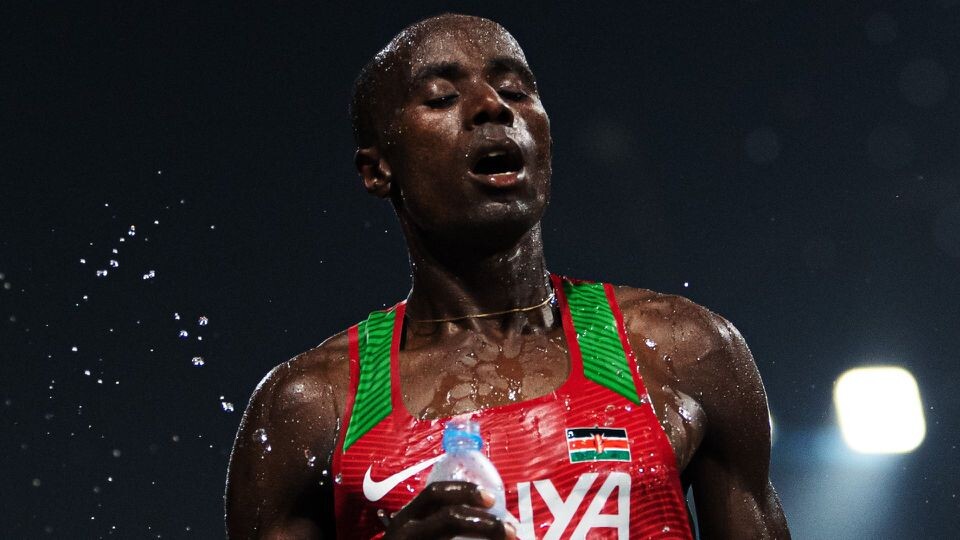
However, a critical error in their travel arrangements led to unexpected detours and delays that ultimately dashed their hopes.
The ordeal began when the team, under the guidance of Athletics Kenya, boarded a Turkish Airlines flight at midnight on Thursday, destined for Istanbul.
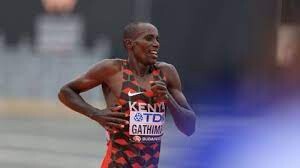
After a seven-hour and twenty-minute flight, they were supposed to catch another flight directly to Antalya. Instead, they were rerouted to Ercan International Airport in Northern Cyprus, adding unnecessary travel and complications.
Upon arriving in Cyprus, the situation worsened. The team was detained at Ercan International Airport due to the lack of necessary transit visas.
As a result, they were forced to spend two nights sleeping at the airport, a distressing experience that left the athletes disheartened and exhausted.
“It’s quite disappointing that we had to go all the way only to be detained in Cyprus where we slept at the airport for two days,” said a team member in a statement to Daily Nation.
The confusion stemmed from the Ministry's oversight in flight arrangements, which inexplicably included a layover in Cyprus instead of a more straightforward route from Istanbul to Antalya.
“The ministry was in charge of the flight arrangement and we don’t know why they rerouted us to Cyprus when it was easy to connect from Istanbul to Antalya,” the source added.
While the Kenyan team struggled with bureaucratic red tape and logistical errors, the championships proceeded without them.
The event saw stellar performances from athletes like double world champion Kimberly Garcia of Peru and Sweden's Perseus Karlstrom, who claimed the 20km women and men's titles respectively.
Meanwhile, Spain and the People's Republic of China took home the men’s and women’s team titles, with Italy winning the inaugural Marathon Race Walk Mixed Relay gold.
This misadventure not only cost the athletes a chance to compete on a global stage but also the opportunity to qualify for the Paris Olympics.
Athletics Kenya is reported to have promised to prepare a formal statement addressing the issue and to reassess their travel coordination strategies in light of the repercussions of this incident.
(04/23/2024) Views: 114 ⚡AMPby Festus Chuma
Paris 2024 Olympic Games
For this historic event, the City of Light is thinking big! Visitors will be able to watch events at top sporting venues in Paris and the Paris region, as well as at emblematic monuments in the capital visited by several millions of tourists each year. The promise of exceptional moments to experience in an exceptional setting! A great way to...
more...Kenyan Timothy Kipchumba triumphs at the Padova Marathon
The champion swept away the old record of the event that had stood since 2011, imposing himself with a time of 2 hours, 8 minutes and 22 seconds. Sixth place for Alessandro Giacobazzi from Modena. Record also in the women's half thanks to the Ethiopian Morine Michira Gesare.
The Kenyan Timothy Kipchumba won the Paduva marathon with the record time of 2 hours 08'22", a chronometric result which breaks the previous record of 2 hours 09'02" which dates back to 2011, set by the Ethiopian Tadese. Record also in the half marathon with the Ethiopian Morine Michira Gesare, who stopped the clock after an hour 08'30", improving the hour 09'06" of the Ethiopian Rahma achieved in 2021. But the technical aspect is combined with popular: between the almost 5 thousand of the competitive events representing 61 nations and the 20 thousand of the city races, there were at least 25 thousand participants in the Padova Marathon 2024.
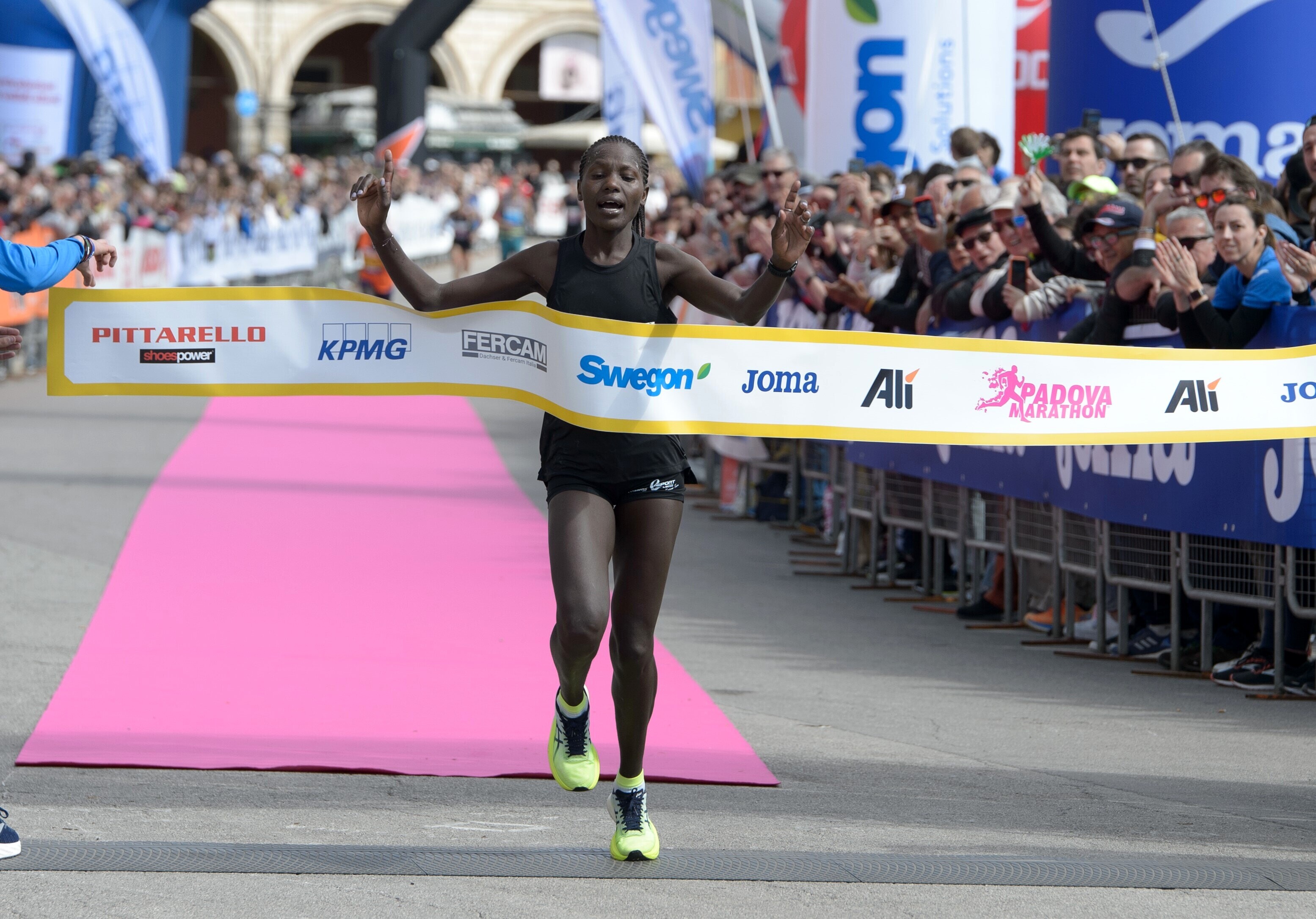
The men's race
In the men's marathon up to the nineteenth kilometre, a group of seven athletes led the race together: Kipchumba, Kipchirchir, Assen, Kalale, Kibet, Mogos and Ademe, with the latter breaking away several times to rejoin after a few metres, losing ground , however, from then on. Moving on to half time, near the splendid Villa Cavalli in Teolo, around the hour 4'06", a new selection was recorded between the thirty-first and thirty-second kilometre, when the Kenyans Kipchumba and Kibet and the Eritrean remained in command Mogos, "escorted" by bike by his friend Eyob Faniel. The first two pulled away around the thirty-fifth kilometre, with a new break from the winner around the Bassanello bridge. But it is significant to note that Kibet, who had started the race at "hares" altitude, also crossed the finish line under the time of the previous race record in 2 hours 08'47", with Mogos third in 2 hours 09'32" . Also noteworthy is the sixth place of Alessandro Giacobazzi (Aeronautics) from Modena: the 2022 overall Italian champion finished in 2 hours 17'56”.
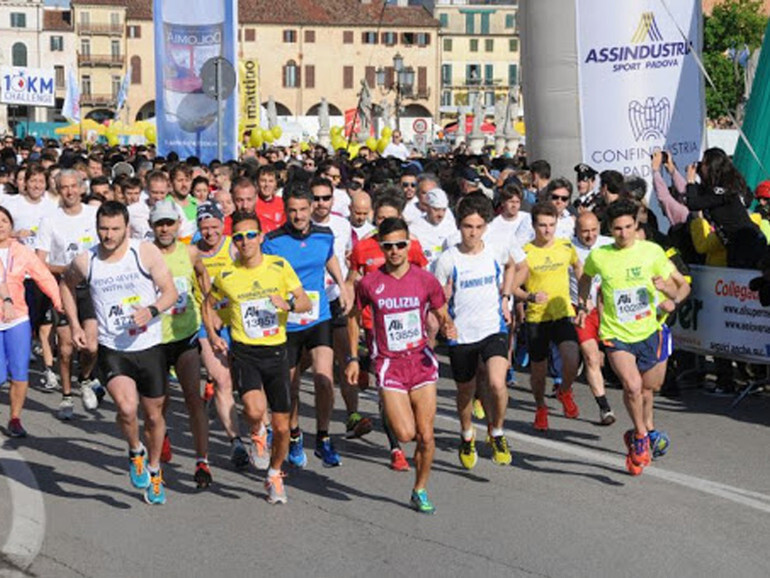
The women's race
In the women's field, success for the Kenyan Lenah Jerotich, who after the bronze medal at the 2023 Turin marathon prevailed in Padua, signing her new personal best in 2 hours 31'47”. She remained in the group until the thirtieth kilometer with Mekonnen, Jepkemei and Rholex, and from the thirty-fifth only with Mekonnen and Jepkemei, she made a strong change of pace before the 40th by taking off alone.
(04/22/2024) Views: 117 ⚡AMP
Padova Marathon
5,000 competitive athletes, 20,000 participants in the Stracittadine. These are the numbers of the Padova Marathon, a leading event on the international running calendar, but also a great popular festival. 24th EDITION The thrill of seeing Prato della Valle open up in front of you when you approach the finish line is beyond words. But the final stretch of the...
more...Moroccan winners at Enschede Marathon Taoufik Allam was victorious in the men's race and Oumaima Saoud won in the women's race
With a record number of participants and several great winners, the Enschede Marathon was a great success on Sunday, April 21. “We have implemented various changes in recent years,” says Sandra Melief, director of Enschede Marathon. “And that is now paying off. What a great day it was last Sunday! We only saw excited and happy faces.”
Full and half marathon winnersThe participants of the Demcon Marathon and Mazars Half Marathon started at 10 a.m. under almost ideal conditions, although the wind seemed slightly stronger than expected. The men turned it into a real, but tactical, race in the 2nd part of the Demcon Whole Marathon . It was the Moroccan Taoufik Allam who, like a predator, eliminated his opponents one by one and took the win in 2:08:58. Kenyan Noah Kipkemboi finished 2nd at 8 seconds .
Among the women, Oumaima Saoud recorded the fastest time with 2:27:16.
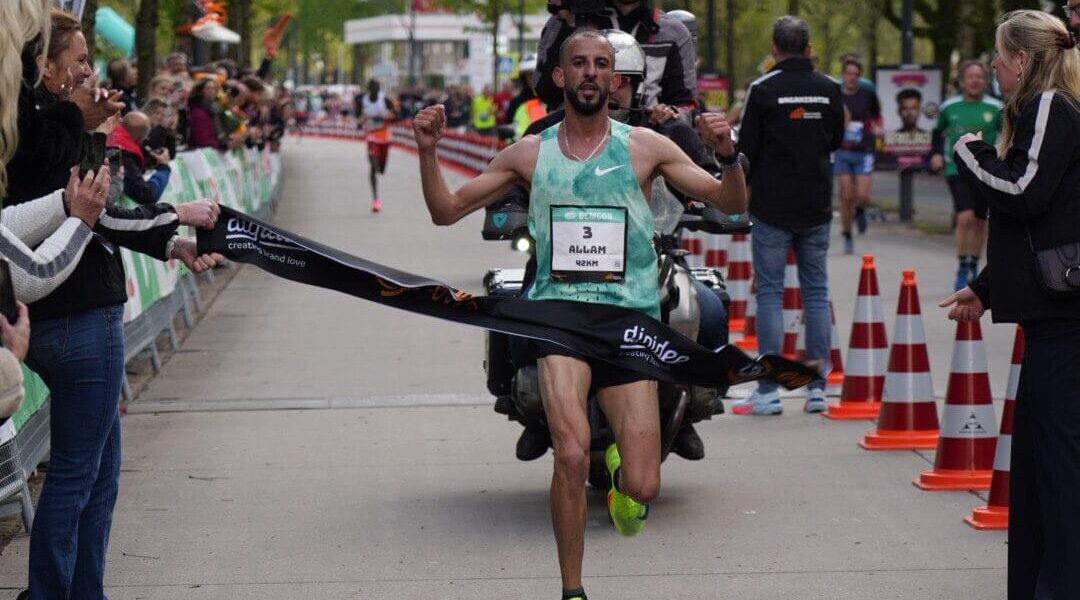
The fastest Dutchman in the marathon was Gert-Jan Wassink in 2:23:33. Among the women, Elizeba Cherono Franken was the fastest, running 2:32:07 in her comeback marathon.
Enschede's Martijn Oonk was the big winner at the Mazars Half Marathon. He ran the 21.1 kilometers in a time of 1:08:28. The fastest woman over this distance was the German Joleen Gedwart in 1:14:28.
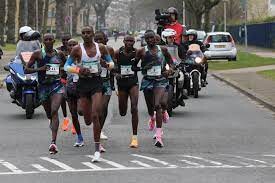
International appearance Just like last year, the start and finish of all distances took place on the Boulevard, with Van Heekplein set up as a pleasant meeting place for participants, supporters and visitors.
The total number of participants at the Demcon Marathon showed that the entire marathon remains popular in Enschede, says Melief. “This year there were almost 2,000 participants at the start of the longest distance. That is more than ever.” The participants no longer come exclusively from the region, she continues. “We see that Enschede Marathon now has an international appeal, which applies to all distances. No fewer than 35 different nationalities were present this year. It was striking that among the 15,000 participants, 1,470 participants came from Germany.”
Twee van EnschedeA special mention deserves the 'exercise event' the Twee van Enschede, which was organized the day before, on Saturday evening. Because although the Enschede Marathon is a top event in terms of sport, the organization also believes it is important to involve people who are at a distance from exercise. “That is why we organized the Twee van Enschede for the second time together with SPortal and the Municipality of Enschede. This is a cheerful and casual exercise event where fun is central. There is no timekeeping: everyone could participate at his or her own pace.” The route of two English Miles (3.2 km) led straight through the city center of Enschede with start and finish on the Oude Markt. “It was a cheerful party with only happy and enthusiastic participants. We are also proud of that, because that is also the Enschede Marathon!”
(04/22/2024) Views: 102 ⚡AMPEnschede Marathon
Experience the oldest marathon in Western Europe! We write about August 1946. The European Athletics Championships were held in Olso and the I.A.A.F. conference had taken place. During that conference, an agreement was made to hold an athletics competition between the Netherlands and Czechoslovakia in Enschede in July 1947. Saturday July 12, 1947 was the big day: 51 participants took...
more...Alexander Munyao Wins Men’s Race at the 2024 London Marathon
The 27-year-old broke away from Kenenisa Bekele, who finished second in a new masters world record.
For the second time in the past week, the men’s winner at a World Marathon Majors crossed the line in survival mode. Six days ago, it was Sisay Lemma holding on to win Boston. This morning, it was Alexander Munyao in London. The Kenyan survived a strong move in the 18th mile to win in 2:04:01.
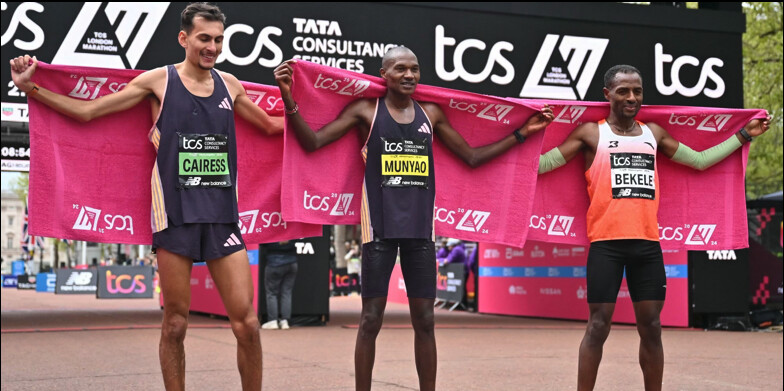
Kenenisa Bekele, arguably the greatest male distance runner in history, placed second in 2:04:15, four seconds faster than the masters world record he set in Valencia last December. The 41-year-old Ethiopian superstar was, surprisingly, largely responsible for the 4:35 18th mile that broke up what had been a nine-man pack.
By 35K (21.7 miles), the race was down to Munyao and Bekele. The two shared the lead more because of doing the best job of recovering after the earlier push than because they were speeding up. Munyao then got half a step on Bekele early in the 22nd mile, and broke him for good over the next mile.
Once they were dropped by Munyao and Bekele, the other earlier members of the lead pack that hit halfway in 61:29 suffered significantly. Tamirat Tola of Ethiopia, the 2022 world champion who broke the New York City course record last November, had looked eager to take over after the final pacer exited the course a little before 30K. Instead, Tola lost more than 20 seconds to the leaders before 35K, and dropped out before 40K.
The severe disintegration of the lead pack led to third and fourth place going to British runners who had been paced more moderately early on. Emile Cairess finished third in a personal best of 2:06:16 after being in 13th place at halfway (62:50). Mahamed Mahamed placed fourth in 2:07:05, also a personal best. Both men are now likely to be named to the British team for the Olympic Marathon, which will be held on August 10.
Munyao and Bekele were also running in part to secure spots on their Olympic teams. Munyao’s win, combined with his 2:03:13 PR and runner-up finish in Valencia in December, makes a good case. Bekele’s bid is even stronger. With Tola’s poor showing and Bekele’s second strong marathon in a row, will Ethiopian selectors recognize that a three-time Olympic and 19-time world champion deserves to toe the line in Paris?
Brian Shrader, the lone U.S. elite entrant, placed tenth in 2:10:50.
(04/21/2024) Views: 149 ⚡AMPTCS London Marathon
The London Marathon was first run on March 29, 1981 and has been held in the spring of every year since 2010. It is sponsored by Virgin Money and was founded by the former Olympic champion and journalist Chris Brasher and Welsh athlete John Disley. It is organized by Hugh Brasher (son of Chris) as Race Director and Nick Bitel...
more...The Surprising Way Air Hunger Limits Your Endurance
The fitter you get, the more likely you are to feel that you can’t get enough oxygen during hard exercise
Our lungs and airways are “overbuilt,” according to exercise physiologists. Though we gasp and pant during heavy exercise, that’s not what actually slows us down. Instead, the bottleneck is the heart’s ability to pump oxygen-rich blood to the muscles, or the muscles’ ability to make use of that oxygen. That’s why the heart and muscles get bigger and stronger in response to training, while the lungs stay the same: we already suck in more oxygen than we’re able to use.
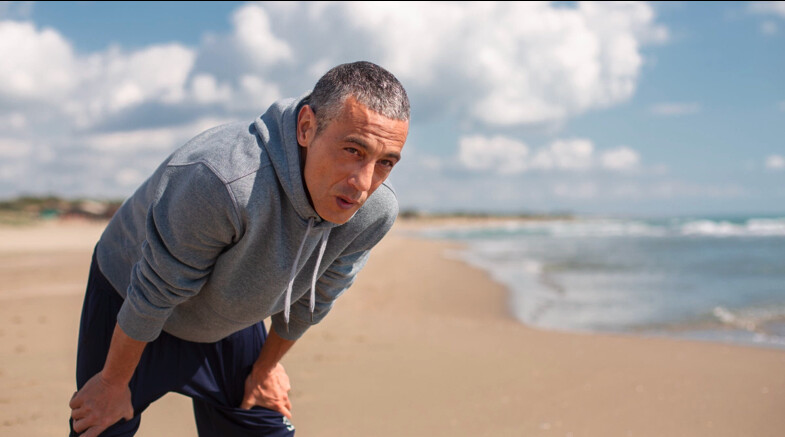
Or maybe not, according to a new study in Medicine & Science in Sports & Exercise that takes a fresh look at what it means to be out of breath. It turns out there are different subtypes of breathlessness. Your chest might feel tight; or your breathing muscles might feel overworked; or you might feel that you can’t get enough air in. That last one, sometimes called “air hunger” or (more scientifically) “unsatisfied inspiration” is usually associated with lung conditions like chronic obstructive pulmonary disease. But the new study finds that about a third of healthy adults experience air hunger during all-out exercise—and it’s the fittest people who are most susceptible.
The study, led by researcher (and accomplished mountain runner) Jordan Guenette and graduate student Olivia Ferguson of the University of British Columbia, reanalyzed earlier results from lung-function tests completed by 321 healthy adults between the ages of 19 and 40 in labs at the University of British Columbia and McGill University in Canada. Among the tests was an incremental cycle to exhaustion, after which subjects were given a list of 15 phrases that described subjective sensations of breathlessness and asked to pick which ones applied to them.
Four of the phrases corresponded to air hunger: “I cannot get enough air in,” “I cannot take a deep breath in,” “My breath does not go in all the way,” and “I feel a need for more air.” Those who picked at least three of those four phrases were classified as having air hunger. Healthy adults usually associate breathlessness with the perception that their breathing muscles are working really hard, rather than with air hunger. But to the surprise of the research team, 34 percent of the subjects fell into the air hunger category.
Air hunger doesn’t necessarily mean that you’re truly short of oxygen—but it feels that way, which is enough to create problems. There are two distinct dimensions of breathlessness: the sensory experience (what it feels like) and the affective/emotional response (how you react to that feeling). Air hunger is a sensory experience, but it’s tightly linked to a negative emotional response. No one likes to feel that they can’t get enough air in. In patients with lung disease, the feeling of air hunger is a major deterrent to exercise even when it doesn’t directly compromise exercise capacity.
To figure out if the same thing happens in healthy adults, the subjects were also asked to rate the discomfort in their legs on a scale of zero to ten, do the same for breathing discomfort, and make as estimate of how much their decision to give up in the exercise test was due to leg and breathing discomfort, respectively. Sure enough, breathing discomfort was higher in the air hunger group, and about half of them said that it played a part in their decision to quit, compared to less than 30 percent in the non-air hunger group.
One sign that this breathing discomfort wasn’t all in their heads is that the air hunger group had stronger markers of “critical inspiratory constraints” (CIC)—that is, limitations on their ability to breathe more deeply. When your body detects that carbon dioxide levels in your blood are rising, it automatically triggers deeper breathing to flush out the carbon dioxide and get more oxygen in. But if you have CIC, you’re at a point where it’s hard to inflate your lungs any further, so there’s a mismatch between your desire to inhale and your ability to do so. Sure enough, the people in the air hunger group had several indicators of more severe CIC. For example, they had a smaller peak inspiratory capacity (the maximum volume of air they could inhale), and a smaller increase of inspiratory capacity during exercise.
The next question is what determines who suffers from air hunger and CIC. One difference between the groups is that those with air hunger had, on average, higher VO2 max by 1.5 percent, and reached a higher peak power output by 3.4 percent. They were also breathing faster at exhaustion (50 breaths per minute compared to 47) and sucking in more air (120 liters per minute compared to 116). “Contrary to popular belief,” Guenette points out, “exercise training doesn’t improve lung capacity.” So one version of the story is that fitter people can push themselves harder for longer, but their lungs aren’t equipped to handle the higher load, so they’re more likely to approach their breathing limits.
On the other hand, while the differences in VO2 max are statistically significant, they’re pretty subtle. Could there be other factors that dictate who suffers from the feeling of air hunger—something in the structure of the lungs or the strength of respiratory muscles? Is it a function of how the brain and central nervous systems respond to a given level of oxygen and carbon dioxide in the blood? None of this is clear yet, and neither is the crucial question of whether there’s anything you can do about it. There’s been a lot of research over the years about the idea of training your breathing muscles (including some by Guenette), and one of the theories is that any performance benefits are more about changing your subjective response to the feeling of breathlessness rather than actually delivering more oxygen to your muscles. That might be one way of combating the feeling air hunger; another possibility is the asthma medication salbutamol, which Guenette hopes to study further.
For now, what I take from this study is that I need to rethink one of my standard pieces of advice to beginner runners. Feeling out of breath is one of the dominant sensations when you first start running, but I’ve always assured people that it’s a feeling you get used to, and not something that really limits your performance. It turns that, for at least some people, that’s not true. My sense is that the recent hype about “better breathing” has far outpaced the evidence, but it’s clear that we still have a lot to learn.
(04/21/2024) Views: 119 ⚡AMPby Outside Online
There’s No Such Thing as Too Much Post-Workout Protein
A new study blows up the conventional wisdom about maximum protein doses for athletes.
One of the key articles of faith of modern sports nutrition is that your body can only use a certain amount of protein at a time. Opinions differ on what that amount is. It might be as little as 20 grams; it might be as much as 40 grams, particularly for older adults whose bodies are less sensitive to the muscle-growth-stimulating effects of protein. Maybe it needs to be expressed relative to body size, like 0.4 grams per kilogram of body weight, rather than as a fixed number. Those details don’t matter here; the point is that there’s a maximum.

The reason that’s important is that most North Americans eat lots of protein, but don’t spread it evenly throughout the day. A typical pattern might be 10 to 15 grams at breakfast and lunch, then 65 grams or more at dinner. That means that at breakfast and lunch, you’re not getting enough protein to max out the synthesis of new muscle protein. At dinner, on the other hand, you’re getting too much, so the excess will simply be burned for energy. The better solution, according to this logic, is to smooth out your protein consumption so that you’re getting at least 20 grams (or 40 or 0.4 grams per kilogram or whatever) at each meal, adding a protein-rich snack sometime during the day, and perhaps even another one right before bed.
That’s the conventional wisdom. So a recent study in Cell Reports Medicine from researchers at Maastricht University in the Netherlands, led by noted muscle physiologist Luc van Loon (whose vivid, no-nonsense advice I’ve written about previously), has generated plenty of buzz. In short, van Loon’s new data suggests there’s no upper limit on protein after all, and that huge doses of protein—they use 100 grams in the study, because that’s about how much protein they figured they could eat at a barbecue without force-feeding themselves—produce proportionately larger increases in the formation of new muscle.
The study involved 36 volunteers split into three groups. They each did a one-hour weight-training workout and then immediately downed a drink containing either 0, 25, or 100 grams of protein. The protein came from the milk of a Holstein cow that the researchers injected with a special carbon isotope tracer. This meant that one of the amino acids in the milk had a slightly different chemical form than usual, enabling the researchers to track the progress of the protein drink as it was digested and incorporated into new muscle proteins in the subjects’ bodies. (I once interviewed one of van Loon’s postdocs about an earlier “glowing cow” experiment, and he described the unexpected responsibilities he had to take on: “My job was to talk to them, brush them, and basically keep them in a good mood,” he recalled. “If the animal becomes stressed, milk production declines, so we treated them like princesses.”)
Anyway, the next part of the experiment basically involved sitting around for 12 hours and taking a bunch of blood samples and muscle biopsies to figure out what was happening in the subjects’ muscles following the exercise-protein combo. That combination is important: both resistance exercise and eating protein boost the formation of new muscle protein, but putting them together within a window of four to six hours produces a muscle-building effect that’s greater than the sum of its parts. The full suite of measurements and analysis is extremely complex (and free to read about, if you’re interested), but the most important parameter is how much new muscle protein is being synthesized, because that’s what (more or less) dictates how much muscle you’ll gain over time.
There are two key things about the study. One is the time frame: most previous studies only monitored muscle protein synthesis for six hours or less, so 12 hours provides a much longer window for the effects of a big protein dose to show up. The second is the protein dose: previous studies topped out at 45 grams, so it may have been hard to see big differences compared to, say, 20 or 30 grams.
Here’s the key result, showing protein synthesis over the 12 hours following the workout and protein drink. Black circles are the 100-gram group; grey circles are the 25-gram group; and white circles are the 0-gram control group:
The effect isn’t subtle: the 100-gram group is getting way more protein synthesis than the 25-gram group right away. And the biggest difference comes after the six-hour (i.e. 360-minute) mark: by that point, the 25-gram group is back to baseline, while the 100-gram group still hasn’t gone back to baseline even after 12 hours. The extra protein synthesis isn’t exactly proportional—that is, four times more protein doesn’t give you four times the synthesis—but it’s substantial.
There’s a straightforward conclusion here, which is that the idea of a maximum protein dose—at least, one at 40 grams or less—was wrong. You always want to be cautious about chucking away a whole bunch of seemingly settled science on the basis of a single study. But this study seems solid, and it has identified some clear gaps—in duration and protein dose—in the earlier studies that it’s overturning. So let’s assume for now that it’s correct. The question, then, is what it means for how athletes should eat.
For practical purposes, the real apples-to-apples comparison would have been 100 grams of protein versus four doses of 25 grams spaced four hours apart. Which pattern would produce more protein synthesis in that comparison? Nobody knows at this point. There are a bunch of other reasons that I’ll be sticking with three meals a day, including the fact that I really enjoy all my meals. As an endurance athlete, I’m also as conscious of my carbohydrate supply as I am of protein. And even for protein and muscle-building, there are lots of unanswered questions—like whether you’d need to time your workout around your 100-gram protein bomb. If I lift weights in the morning then get all my protein in the evening, or vice-versa, does that still work?
There are certainly people who are into the one-meal-a-day thing, and for these people this is an important result. In their discussion, van Loon and his colleagues note that their findings suggest that time-restricted feeding shouldn’t necessarily lead to muscle loss. For me, the main takeaway is that it’s probably not as important as I once thought to spread my protein perfectly throughout the day. That won’t change how I actually eat, because getting 25 grams of protein at every single meal has always been more aspiration than reality—but at least I’ll feel less guilty about it
(04/20/2024) Views: 128 ⚡AMPby Outside Online
Running with Your Dog Is Good for Your Health, According to Science
Running with your dog offers great health benefits for you and your four-legged friend. Here's what we know. We all know that running makes humans healthier. Lace up a pair of shoes and, before you know it, you’re experiencing a boosted immune system, stronger body, higher bone density, and enhanced overall wellness. In many ways, running provides athletes with a fountain of youth.
But running with your dog further maximizes those perks, allowing you to further capitalize on your time on the trail. It’s easy to write this idea off, claiming that dogs just make us happier, so, of course we’d love our doggy trail runs more than our solo runs. However, current research shows that owning and recreating with a dog not only boosts mental health, it also boosts your physical strength and fitness. After looking into the details, here’s what else we know about the benefits of running with your dog.Research consistently demonstrates that spending time outside has largely positive impacts on the human mind, helping to calm anxiety and depression while boosting concentration and attention. It turns out that owning a dog increases the amount of time that you spend outside. In fact, dog owners have been shown to spend three times the amount of time exercising than non-dog owners. Plus, your running endurance gets a huge boost when you grab your pet and hit the trails.


British runner and coach Holly Stables, a former elite international marathoner and mountain runner, said that sometimes the UK’s weather makes her want to train inside, but being a dog owner forces her to get outside. “Sometimes I want to go on the treadmill,” she said, “but I can’t because I have to take the dog out.”
She added that running with your dog is likely to make the pet stronger, which can be both a blessing and a curse. Once they reach that peak level of fitness, they need to more regularly blow off steam, making you even more accountable to getting outside.
Stables said that her dog is easily as excited to get out the door as she is (more on this later), a sentiment he conveys by sitting at the bottom of the stairs while she puts her running shoes on, which makes it really difficult to choose to leave him at home. However, finding the balance between taking your dog on a run and prioritizing your training can be tricky.“I think having a dog to run with, especially if you run a few times a week, is perfect. If you’re training really hard, it can be tricky,” she said.
For some runners, owning a dog might be just what they need to create a regular routine. Those who operate on a strict training schedule might find balancing doggy runs with training to be challenging. Or, in Stables’s case, sometimes she’ll take her dog out for the first few miles before dropping him off at home and continuing her journey.
Jeffrey Stern, a California-based runner and coach, agrees that owning dogs is more likely to get him out the door. “In my experience, most dogs want to get out and play and walk. It definitely keeps you active,” he said. “The daily walk, or even the daily double, is pretty non-negotiable. One of [my dogs] doesn’t like the rain; the other doesn’t mind the rain. But they’ve gotta get out. So even if we’re not running we’re walking or hiking. That’s definitely one of the benefits of having dogs—you can only be lazy to a point.”
Dog breeds and personalities vary widely, which means the effects of running with them may vary, too. Some dogs might be willing to sustain a fast pace for large chapters of time, while others might struggle with pacing or simply refuse to speed up.
Stern finds that his dogs increase the fun factor, and they often drive him to run faster. “I don’t run with them every day, but on the days I do we’re definitely moving,” he said. They add to his motivation, which can be a helpful tool on speed runs. “On days when I want to run fast, I’ll take them. They kind of know one speed until they drop (which is kind of the opposite of my training principle). I don’t think pacing is their strong suit.”
Stern’s dog’s relentlessness can be both a powerful tool and an Achilles’ heel. While the quality helps him increase his pace in some situations, it can be difficult to get his dogs to slow down their pace, which is why he’ll leave them home on moderate runs.Dog lovers almost immediately experience the feel-good release of oxytocin upon seeing a pup. Being around dogs not only makes many people happier, it also has a positive impact on their cardiovascular health.
A Swedish study that evaluated 3.4 million people between the ages of 40 and 80 with no history of heart disease found that dog owners had a 15 percent lower risk of cardiovascular disease. Additionally, dog owners are 31 percent less likely to die of heart-related conditions like strokes and heart attacks.
Not only do dogs seem to have a direct impact on heart disease, but they’ve also been shown to decrease heart rate and blood pressure in humans, meaning that they likely reduce stress and anxiety in conjunction with reducing heart disease risk factors.
Many of these benefits are reciprocal, meaning that dogs that run also experience a reduction in cardiovascular disease, too, while boosting joint health, respiratory function, and immune strength. And since dogs are also highly attuned to their owners, reducing your own anxiety and stress levels can help you to lower your dog’s levels, as well.Finally, you’re not the only one that experiences the runner’s high. Dogs also experience this phenomenon, according to a study that was published in the Journal of Experimental Biology. Like the human endocannabinoid high, the dog’s runner’s high can last anywhere from a few minutes to a few hours, leaving them in a better state of both physical and mental health, which can lead to longer lives.
Additionally, running with your dog not only makes them feel good, but it also seems to increase the human-pup bond. “My first pointer was the love of my life from the time he was a pup. They’re very willful. They can really test you. When I started running with him, he just clicked. He wanted to be with you. It was so cool to see,” said Stables.
While, admittedly, there isn’t a wealth of research that evaluates whether people who are more inclined to own a dog are simply more active, there does seem to be a link between dog ownership and wellness. The benefits of running with your dog extend beyond the experience of joy. They encapsulate everything from enhanced fitness and health, to more feel-good chemicals and positive mental health outcomes.
Do you want to hold yourself accountable to spending more time on trail? Are you looking for ways to improve your overall health? Chances are that taking a pup out might help. Although the specific benefits of running with your dog are varied, the movement certainly contributes to better overhaul health, consistency, and accountability for both you and your furry friend.
(04/20/2024) Views: 110 ⚡AMPby Outside Online
Should trail running be an Olympic sport?
Did you know that off-road running was part of three historic summer Olympic Games, including the 1924 Olympics in Paris? One hundred years on, runners from four different clubs in Britain have come together to launch a campaign to bring trail running (as we now call it) back to the Olympics. The next Games to include new sports is Brisbane 2032, and the group of passionate trail runners feel strongly that trail running deserves a spot.
“At Paris 2024, four new sports are being added that include breakdancing, surfing, skateboarding and sport climbing,” runner Jimi Harrison said in an interview with British media outlet The Star. “We feel that new Olympic sports should reflect the trends and popularity of the current day and believe the time has come for trail running to be adopted at future Olympics.”
To raise awareness for the cause, Harrison and the group ran a relay of more than 455 km, from London to Paris. Their feat ended on Sunday in the French capital.
Backed by running shoe brand Merrell, the group are calling on Olympic decision-makers. They have written an open letter to representatives of the International Olympic Committee (IOC) and International Trail Running Association (ITRA) to support their cause. (Merrell recently signed Olympian Alexi Pappas to its athlete roster. Pappas, who raced the 10,000m at Rio in 2016, setting a national record for Greece, ran two big trail ultras in 2023: the Black Canyon 100K and the Leadville 100.)
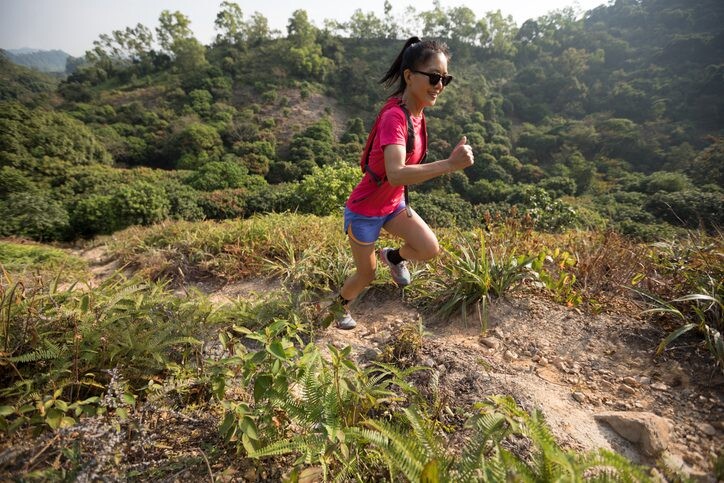
Some would argue that cross-country running is a more obvious fit for inclusion in the Olympics. With shorter, looped, spectator-friendly courses, cross-country could be more attractive to broadcasters, thus generating more interest. And cross-country usually features track runners. There is less crossover between track and trail running, though it’s not unheard of for track runners to transition to trails, as we have seen.
This is not the first attempt to bring trail running to the Olympics. In 2021, a trail running company from Spain launched its own campaign to bring it to the 2028 Olympics in Los Angeles. (They were not successful.)
Trail running has increased significantly in popularity in recent years, thanks partly to events like the Barkley Marathons, UTMB (Ultra-Trail du Mont-Blanc) and the Golden Trail Series, which make international news headlines.
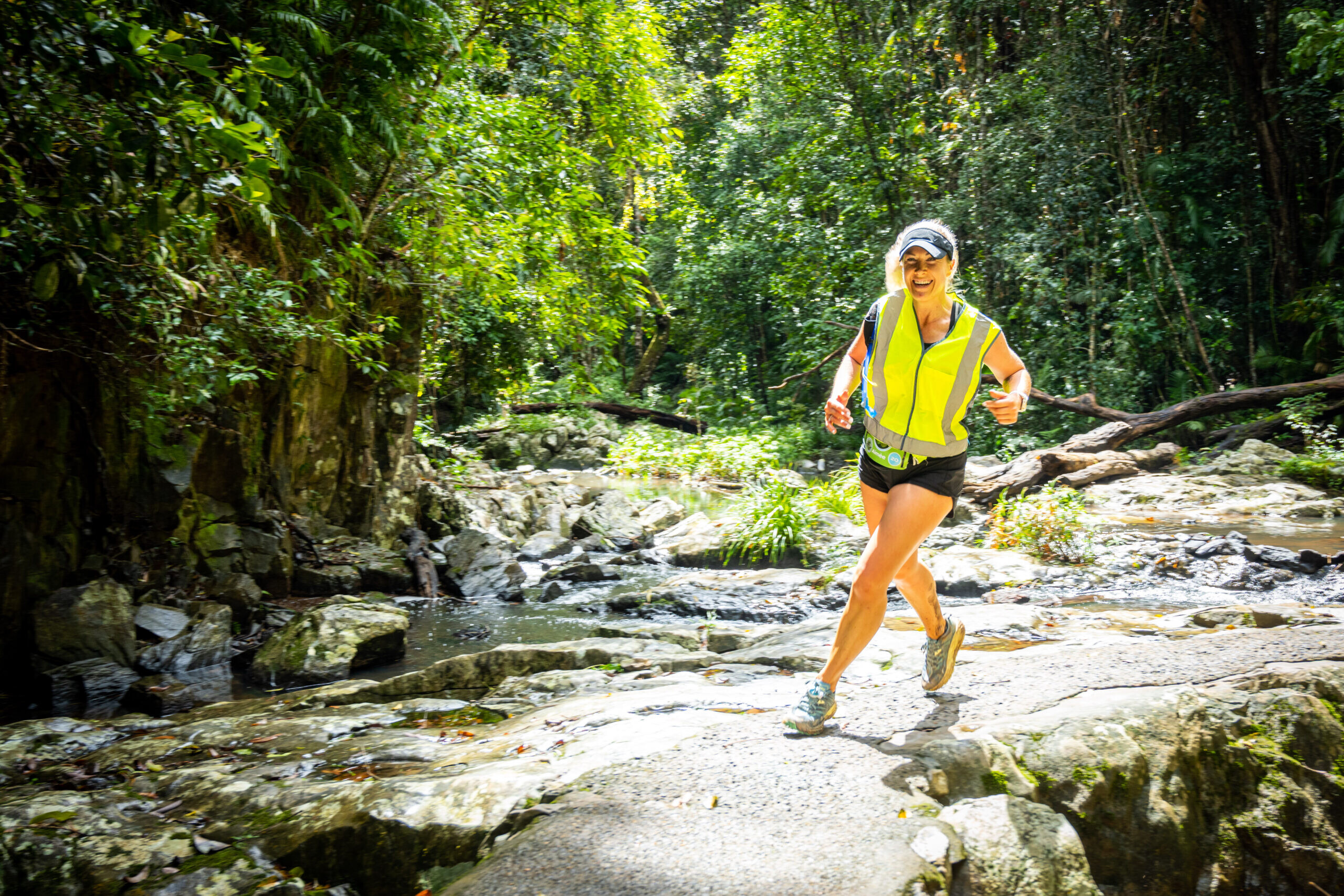
by Claire Haines
Kenyan trio of Peter Mwaniki, Emmaculate Anyango and Bravin Kipkogei headline the 16th edition of TCS World 10K Bengaluru
The Kenyan trio of Emmaculate Anyango, Peter Mwaniki and Bravin Kipkogei headline the 16th edition of TCS World 10K Bengaluru on April 28.
The World Athletics Gold Label Road Race is a Sh27m prize money event featuring some of the world's most accomplished road and track athletes.
Anyango, the world's second-fastest woman over 10K, clocked 28:57 in Valencia while finishing behind compatriot Agnes Ngetich, who posted a 28:46 world record.
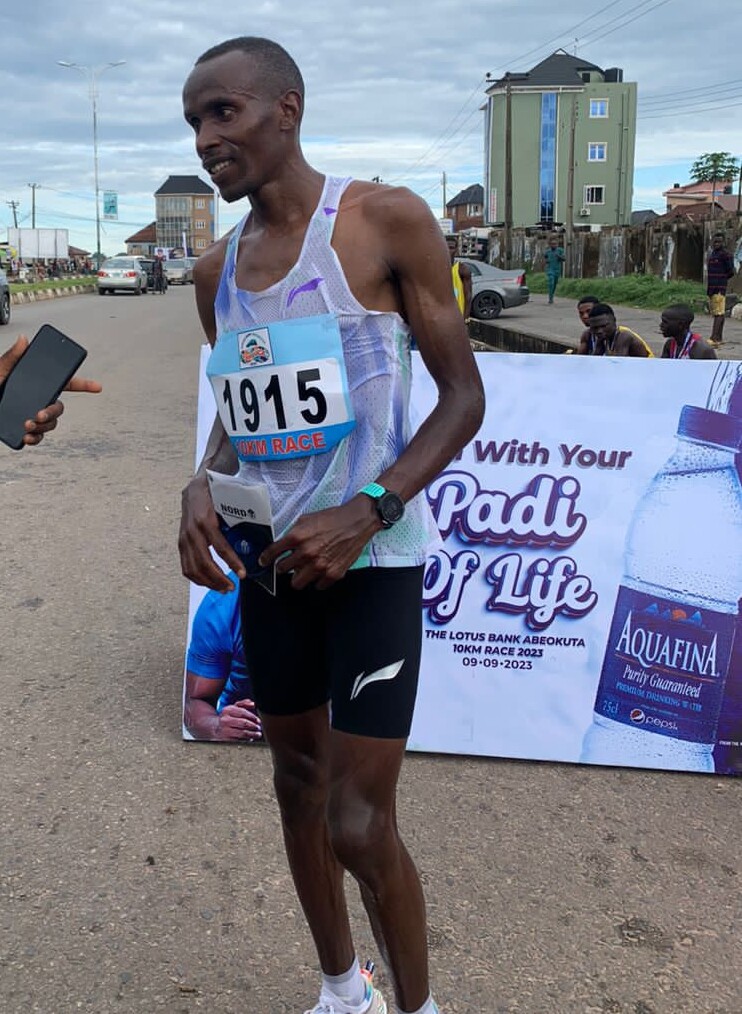
A silver medalist at the 2019 African Junior championships in 3000m, Anyango barely missed the podium at this year's World Cross Country Championships in Belgrade, Serbia.
“I am very excited to be in Bengaluru for the first time for this incredible event, which has gained a worldwide reputation for being one of the best 10K races. I have heard so much about the events hosted in India and the running revolution they began nearly two decades ago," said Anyango.
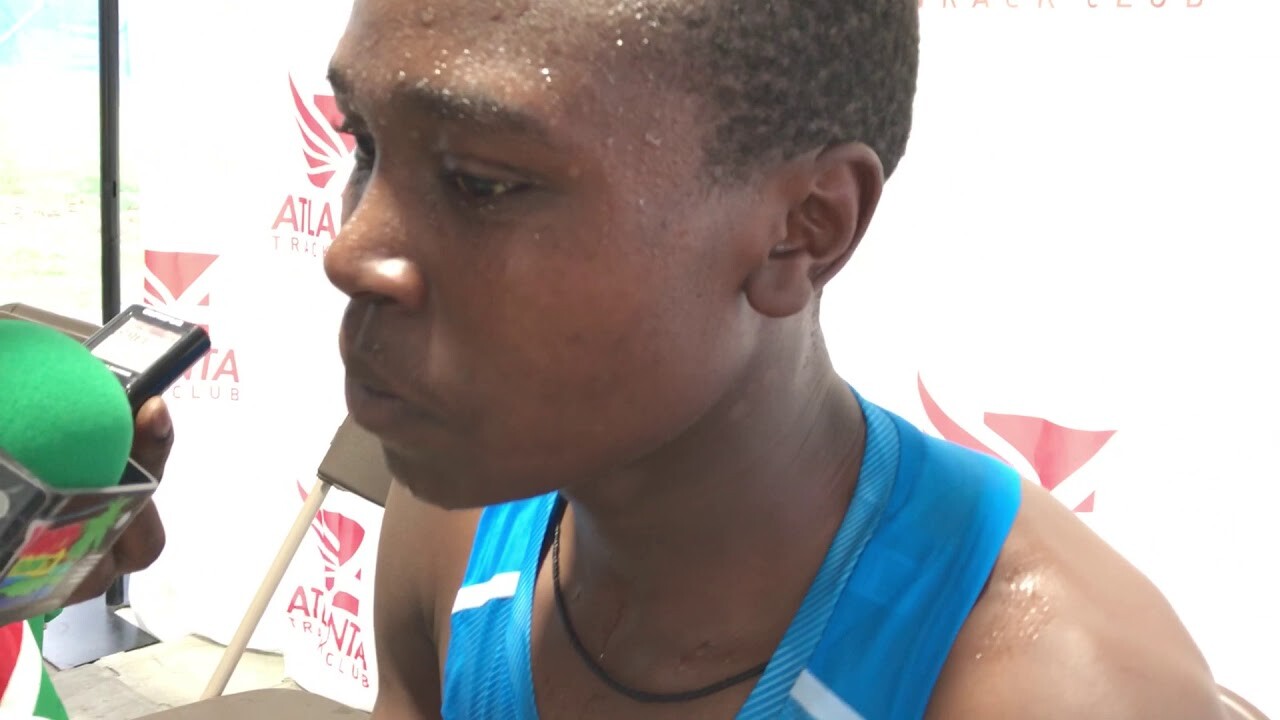
"I am looking forward to being there and doing my best. The field of runners in the women’s category is quite strong this year and I love a good challenge."
She will be joined by Lilian Kasait (29:32), Faith Chepkoech (29:50), Loice Chemnung (29:57), Cintia Chepngeno (30:08) and Grace Nawowuna (30:27).
Two Ethiopians, Aberash Minsewo, this year's Tata Mumbai Marathon winner, and Lemlem Hailu, 2022 World Indoor 3000m champion, add further shine to the women's start lists.
Mwaniki is the fastest among the men with a time of 26:59 he achieved while finishing third in Valencia earlier this year. He is the 19th runner in the World to run 10K in under 27 minutes.
Kipkogei, the 2019 African junior champion over 10,000m is credited with 27:02 from Madrid last year while Kiprop, clocked an impressive 27:16 this February at Castellon, Spain.
They will keep the race interesting.
Two more Kenyans, Hillary Chepkwony, last year's third-place finisher, and Patrick Mosin, the runner-up in Castellon the previous year, are expected to provide the necessary boost to return fast times.
Two young runners, John Wele from Tanzania and Boki Diriba from Ethiopia may also threaten the Kenyans.
Kenyans Nicholas Kimeli (27:38) and Irene Cheptai (30:35) have held the course records in Bengaluru since 2022.
The winners in the men's and women's categories will each take home Sh3.3m. A course record bonus of Sh1m is also up for grabs.
(04/17/2024) Views: 184 ⚡AMPby Star Reporter
TCS WORLD 10K BENGALURU
The TCS World 10k Bengaluru has always excelled in ways beyond running. It has opened new doors for people to reach out to the less privileged of the society and encourages them to do their bit. The TCS World 10K event is the world’s richest 10 Km run and has seen participation from top elite athletes in the world. ...
more...Time on feet training–is it right for you?
Time on feet training is becoming increasingly popular, but who is it best for?
Time on Feet (ToF) training is an approach that prioritizes the duration of a run rather than specific distances. Emphasizing the time spent running, rather than the pace or distance covered, this training method can offer unique benefits for certain types of runners. Canadian Running spoke with Jason Fitzgerald, a coach, 2:39 marathoner and host of the Strength Running Podcast, to learn what ToF training entails and who should consider incorporating it into their program.
The basics
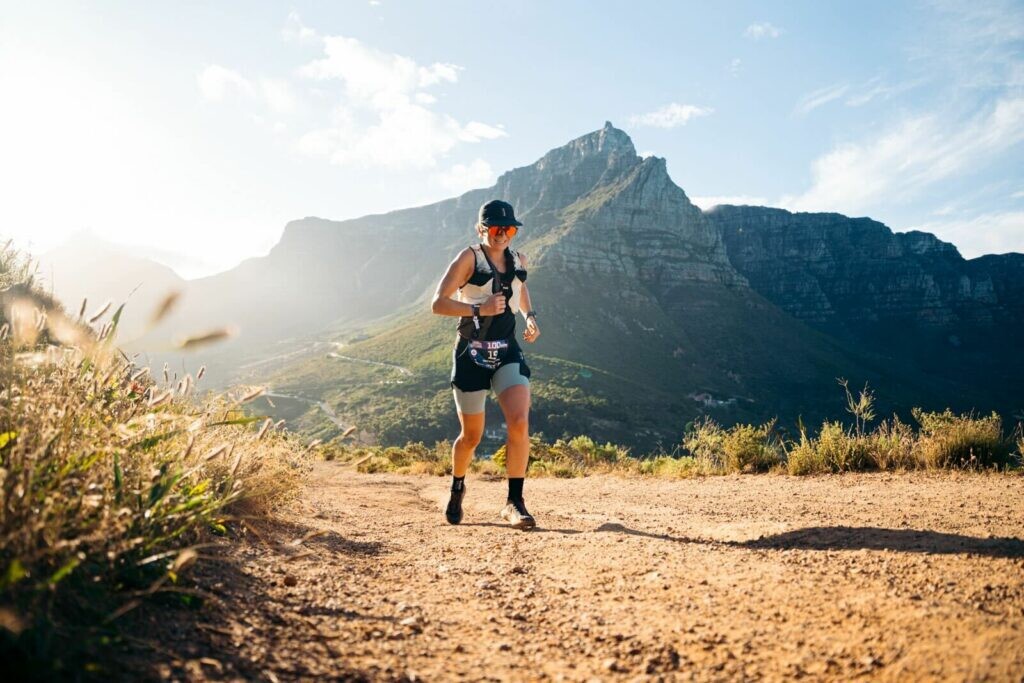
In ToF training, runners aim to meet a prescribed duration for their training runs instead of focusing on a specific distance. For instance, a training plan may specify a two-hour long run, rather than a set mileage. This approach allows them to maintain a consistent effort without the pressure of reaching mileage targets.
Benefits for competitive runners
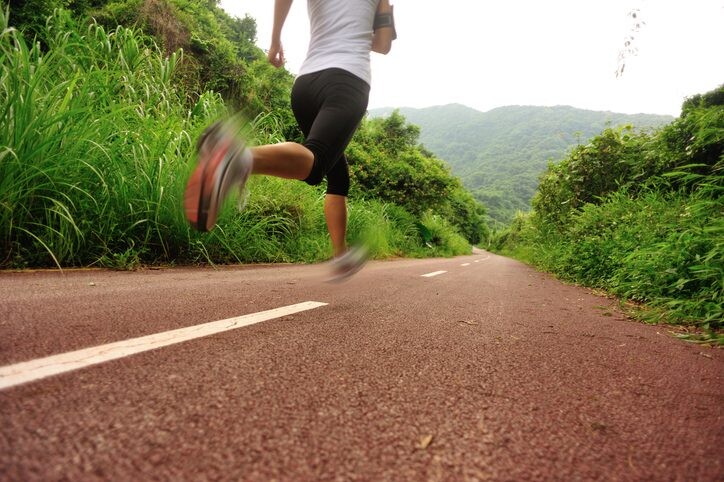
Fitzgerald says ToF training can be particularly valuable for competitive runners who want to avoid the pressure of running at a specific pace. By prioritizing time, athletes can focus on maintaining a comfortable effort level without the constraints imposed by set distances. This approach allows for better pacing control and helps prevent overexertion during training.
Fitzgerald notes that race-specific workouts and training for specific distances should not be neglected entirely. While ToF training provides flexibility, distance-focused training is crucial to prepare for races that follow set distances. “Races are rarely run by time (i.e., the most you can run in one hour) so it’s helpful to focus on distance when you want to run race-specific workouts or ensure that you can finish a long race, like a marathon,” he says.
The benefits for new runners
For novice runners, ToF training offers a valuable approach to building endurance and capacity gradually. Rather than focusing solely on hitting specific distances, new runners can concentrate on running for longer durations. This approach allows their bodies to adapt and gradually increase their running capabilities, reducing the risk of injury associated with pushing distances too soon.
Considerations for track athletes
Track athletes primarily focus on shorter distances and require precise training to improve their speed and performance. “Their workouts will likely be on the track, which is a venue that helps you run particular distances more precisely,” says Fitzgerald. “But even track runners can use this methodology for some of their runs when distance isn’t important, like an easy “base” run for an hour.”
Utility for ultrarunners
Fitzgerald says ultrarunners, in particular, can greatly benefit from ToF training. This method prepares them to endure prolonged periods on their feet, including walking and rest stops during races. By practising running for extended periods, ultrarunners can develop the stamina and mental fortitude necessary to tackle gruelling events.
“Many ultramarathoners will venture onto the trails for a two- to four-hour long run. Their goal is time on feet, not distance or pace, which prepares them to stay on their feet for a very long time on race day,” he says.
How to add ToF training to your schedule
The good news is that implementing ToF training into your program is simple. “Just convert distances to time, and run those instead,” says Fitzgerald. “So if your training plan asks you to run four miles, you can instead run a certain amount of time that generally corresponds to that distance.”
The bottom line
Time on feet is a great training option when you’re trying to control your pace during runs, prepare for a long race like an ultra or avoid increasing your mileage too quickly when you’re new to running or returning from an injury. It’s easy to implement, and can take some of the pressure off your runs, so you can get more enjoyment out of your training.
(04/17/2024) Views: 172 ⚡AMPby Brittany Hambleton
Shock as Geoffrey Kamworor withdraws from London Marathon
Multiple World Cross-country champion Geoffrey Kamworor has withdrawn from the London Marathon.
Three-time World Cross-Country champion Geoffrey Kamworor has pulled out of the 2024 London Marathon due to persistent hip flexor irritation.
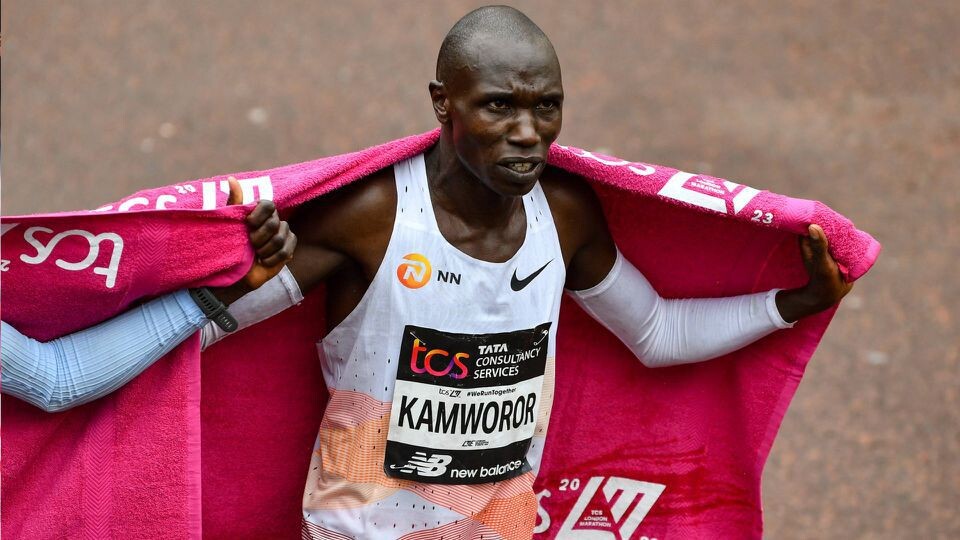
The Kenyan long-distance runner, who clinched second place at last year’s London Marathon, confirmed that his current physical condition has hampered his training and ultimately led to his withdrawal.
His absence is a blow to the marathon, where he was among the favorites to win.
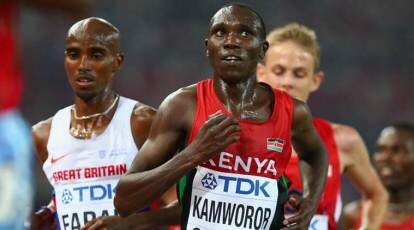
The athlete's management team noted that Kamworor had been experiencing discomfort during his training sessions and opted for a conservative approach to avoid long-term damage.
They confirmed that he did not travel to London and would be undergoing further medical evaluation and treatment.
As the elite runners adjust to the news of Kamworor’s withdrawal, the spotlight shifts to the champions of the recent Boston Marathon wheelchair races, who are now heading to London with hopes of back-to-back victories in the Abbott World Marathon Majors.
Among them is Britain’s Eden Rainbow-Cooper, fresh from her historic win at Boston, where she became the first Briton to clinch a wheelchair race at the prestigious event.
Rainbow-Cooper, who finished third at last year’s London Marathon, shared her excitement about competing again in her home country.
“Winning in Boston was surreal, and competing in London feels like coming home. I’m ready to give my all once again,” she said.
Rainbow-Cooper’s victory in Boston was a remarkable feat, finishing the course in 1:35:11, ahead of seasoned competitors like Manuela Schär of Switzerland and Australia’s Madison de Rozario, the defending London Marathon champion.
In the men’s wheelchair category, Swiss athlete Marcel Hug is also eyeing another major win after setting a new course record in Boston.
Despite a crash at Mile 18, Hug completed the race in an impressive time of 1:15:33, continuing his dominant streak with 11 consecutive marathon victories.
(04/17/2024) Views: 161 ⚡AMPby Festus Chuma
TCS London Marathon
The London Marathon was first run on March 29, 1981 and has been held in the spring of every year since 2010. It is sponsored by Virgin Money and was founded by the former Olympic champion and journalist Chris Brasher and Welsh athlete John Disley. It is organized by Hugh Brasher (son of Chris) as Race Director and Nick Bitel...
more...Edna Kiplagat opens up on how she managed to seal a podium finish in Boston
Kiplagat is still flying high at 44 years of age and is not showing signs of slowing down.
At 44, many athletes would be winding down their careers or already retired. However, for Edna Kiplagat, the journey continues.
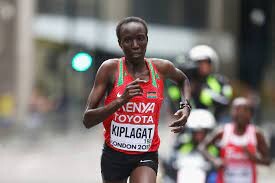
The Kenyan distance running icon continues to defy age and expectations, delivering a stellar performance at the Boston Marathon on Monday that left spectators in awe.
Returning in the iconic streets of Boston, Kiplagat crossed the finish line in a remarkable 2:23:21, clinching a well-deserved third-place finish. What makes her achievement even more impressive is the fact that she was competing against athletes nearly half her age.
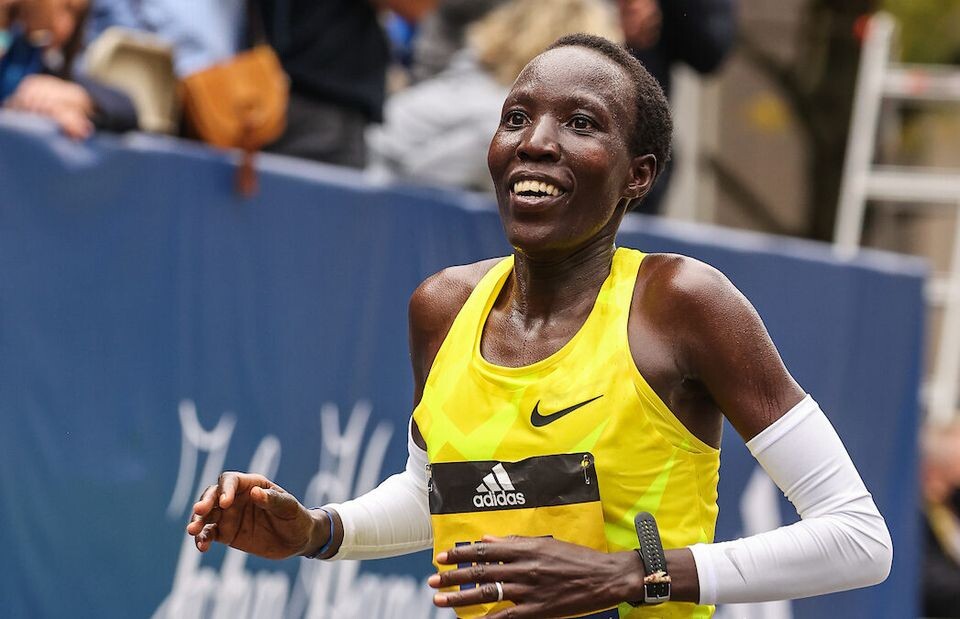
Like a vintage wine that only improves with time, Kiplagat's career trajectory showcases that age is merely a number. Her unwavering passion for the sport and relentless work ethic have enabled her to remain at the forefront of distance running, challenging and even outperforming her younger counterparts.
In a recent interview with KTN News, Kiplagat shared her reflections on the Boston Marathon and the challenges she encountered during the race.
"It was an exhilarating race, and I am delighted that we achieved a Kenyan podium sweep," Kiplagat remarked. "The competition was intense, with many athletes at their peak. I knew I had to be at my absolute best to remain competitive."
Expressing her gratitude for her podium finish, Kiplagat acknowledged the rigorous training that prepared her for the demanding race. "Standing on the podium is a testament to hard work, dedication, and ultimately, God's grace," she added.
Kiplagat's journey in the world of marathon running is nothing short of inspirational. She first burst onto the big city marathon scene by winning the New York Marathon io her debut 14 years ago. Since then, her career has been a fairytale journey across continents and championships.
With two World Marathon Majors trophies to her name and two World Championship marathon titles, Kiplagat's accolades speak volumes about her prowess as a distance runner. Her personal best of 2:19:50, achieved at the 2012 London Marathon, stands as a testament to her exceptional talent.
While many athletes might find it challenging to maintain peak performance over the years, Kiplagat continues to defy expectations. Known for her late-race surges, she has a knack for dramatically overtaking her opponents in the latter stages of a race, leaving them trailing in her wake.
As the world continues to marvel at her achievements, Edna Kiplagat remains a timeless legend in the world of distance running, inspiring generations of athletes with her resilience, determination, and unyielding spirit.
(04/17/2024) Views: 168 ⚡AMPby Mark Kinyanjui
Boston Marathon
Among the nation’s oldest athletic clubs, the B.A.A. was established in 1887, and, in 1896, more than half of the U.S. Olympic Team at the first modern games was composed of B.A.A. club members. The Olympic Games provided the inspiration for the first Boston Marathon, which culminated the B.A.A. Games on April 19, 1897. John J. McDermott emerged from a...
more...The monthly KATA Time Trial was started in Sept 2021 and it just keeps getting better
The monthly Kenyan Athletics Training Academy (KATA) Time trial for April was held today on a cold wet morning near Thika Kenya.
The attendance was good with 55 participants. Kelvin ragui opened the day with a win in the 5km with a personal best lowering his previous time by two seconds clocking 14:51. He was followed by Fredrick kiprotich 15:27. Charles ndirangu finished in third posting a personal best of 15:42.
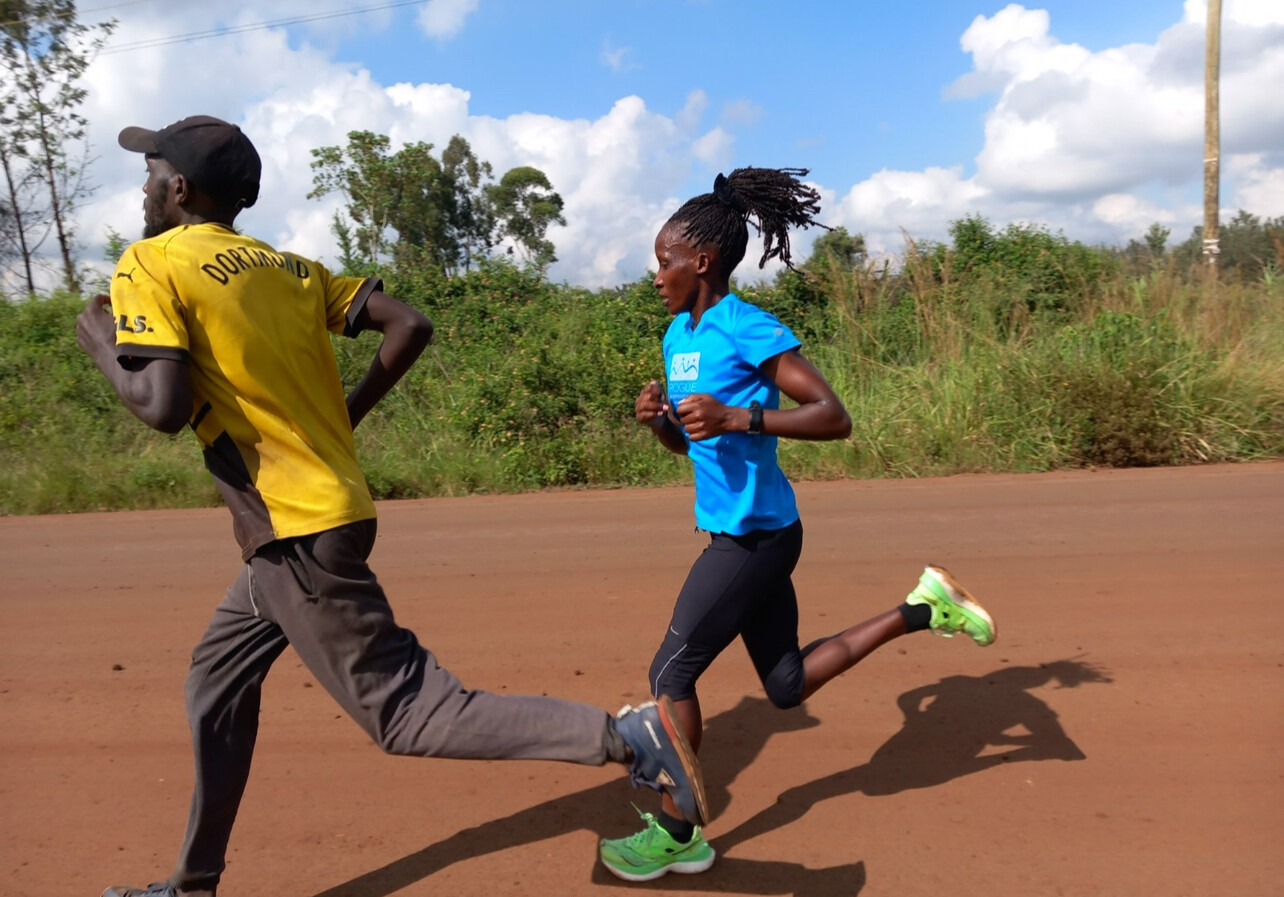
Ismael mburu who finished in 7th position as well captured a personal best of 16:32, lowering his previous time by more than 40 seconds.
Karen chepkemoi won the women 5km race in 17:55. Lilian musenya came in second with a personal best of 18:50.
Raphael karita won the Men's 10km clocking 29:11 which was only two seconds off his personal best time. He was followed by job kamande who posted a personal best of 29:33. Peter mwangi posted a very impressive time, 29:29 a personal best.
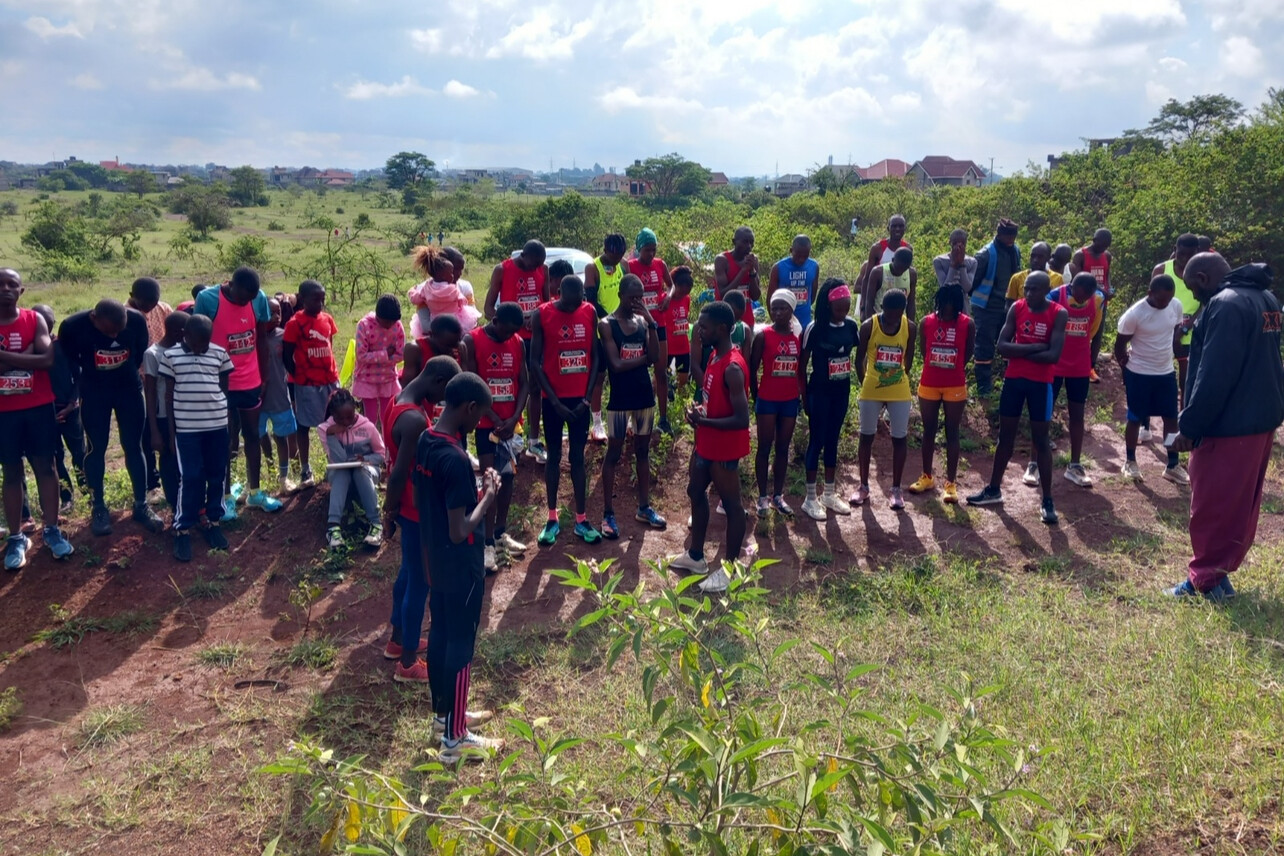
Charles ndirangu ( 64 years old) posted 37:37 lowering his previous time by 54 seconds. This is a world class time and is 91.98% age graded.
Jacinta kamau won the crown in the women's 10km race in a personal best of 35:11 by more than 30 seconds. Virginia wanjiru who finished in 4th place in a time of 37:01 also lowered her personal best by 29 seconds.
It was a good day of racing. The 33rd KATA Time trial will be held May 8, 2024. "Come join us," says director/owner Bob Anderson who is currently in Monforte da Beira Portugal setting up the second KATA Running Retreat opening in June 2024. 5km Men
1 Kelvin ragui 21 488 14:51
2 Fredrick kiprotich 23 326 15:27
3 Charles ndirangu 23 311 15:42
4 Amos chirchir 23 158 15:56
5 Gabriel gikeri 19 140 16:03
6 Clinton otieno 23 417 16:31
7 Ismael mburu 23 312 16:32
8 Ramadhan ambani 24 247 16:46
9 kariuki wangari 24 202 16:47
10 Geoffrey ngama 50 133 17:04
11 Jeremiah obura 20 146 17:26
12 peter Mukundi 25 84 17:54
13 Charles kabuthia 28 318 17:56
14 lewis mwangi 15 320 18:10
15 John kiragu 28 322 18:44
16 Zachary onyimbo 24 191 18:51
17 Alex kamau 22 253 19:20
18 Dennis kamau 14 162 23:15
19 Samuel maina 14 435 24:06
20 Donald gatunga 21 319 24:28
5km women
1 Karen chepkemoi 22 389 17:55
2 Lilian musenya 22 321 18:50
3 Anastasia muthoni 21 415 20:22
4 Emily wanjiku 17 254 22:22
10km Men
1 Raphael karita 24 246 29:11
2 Job kamande 23 251 29:23
3 peter mwangi 27 442 29:29
4 Dismas okioma 19 490 29:30
5 John njuguna 25 473 30:04
6 John muthui 48 264 30:17
7 Joshua kibet 26 250 30:22
8 Zachary kirika 22 992 30:31
9 Brian wekesa 26 130 30:46
10 peter ndungu 24 189 31:40
11 lewis kuria 22 188 31:49
12 Charles mwangi 21 198 31:50
13 Gabriel kahura 41 44 32:00
14 Anthony Mukundi 35 444 32:03
15 kiriuki karanja 50 314 34:16
16 Stephen ngigi 20 150 34:26
17 Bernard gicheha 33 315 34:49
18 Samuel kiroko 22 143 36:02
19 Charles ndirangu 64 317 37:37
20 Emanuel mang'anyi 23 249 40:37
21 Nahashion kiarie 33 185 40:38
10km women
1 Jacinta kamau 22 414 35:11
2 Lois wambui 23 455 36:04
3 Susan njeri 30 316 36:49
4 Virginia wanjiru 22 419 37:01
5 Lucy muritu 38 248 49:23
The KATA April sprint trials was good despite the weather conditions. The KATA sprinters tried their best. We are the only club that is training long distance, middle and sprints,last month three of our own athlete were selected for all African games,400m hurdles, rahab wanjiru,and also Gladys ngure was selected for South Africa relay ,our sprint star Doreen waka was also in the team to ghana but due to some logistics she was left behind, I coach Julius do believe in change ,we can produce the best with time.
KATA sprinters time trials at kasarani stadium April 17, 2024
100m Women
1.Doreen waka 11:90
2.shelmith rono. 12:35
200m Women
1.peris chege. 25.8 sec
2.Emma wavinya 25:9
400m women
1.Emma wavinya 57:5
Men 100m
1.festus waita 10.8
2.Antony Owino 11.0
3.chris mutahi 11.5
200m men
1.festus waita 21.7 sec
2.Antony Owino 22.5
400m men
1.Alvin mise 50.6 sec
2.benjamin mulanda 51.5
3.gerald orero 52.4
4.joseph kamau 53.1
(04/17/2024) Views: 168 ⚡AMPKATA Time Trial Series
The Kenyan Athletics Training Academy (KATA) in Thika Kenya stages a monthly time trial. Starting Sept 2021 this monthly event is open to anyone who would like to get an official time on a acurant course. Results will be published at My Best Runs so race directors and other interested people can see what kind of shape our participants are...
more...Ultra marathon queen Steyn wins fifth-successive Two Oceans, Khonkhobe reigns supreme for men
Gerda Steyn proved once again that she indeed is the queen of ultra marathon on the continent after she claimed her fifth-successive victory at the TotalSports Two Oceans Marathon in Cape Town on Saturday morning.
The 34-year-old from Bothaville in the Free State cruised to victory with a record time of 3:26:54, beating her 2023 time of 3: 29:05.
Relaxed as ever throughout the marathon, Steyn cemented her status as the country's best female ultra marathoner of all time.
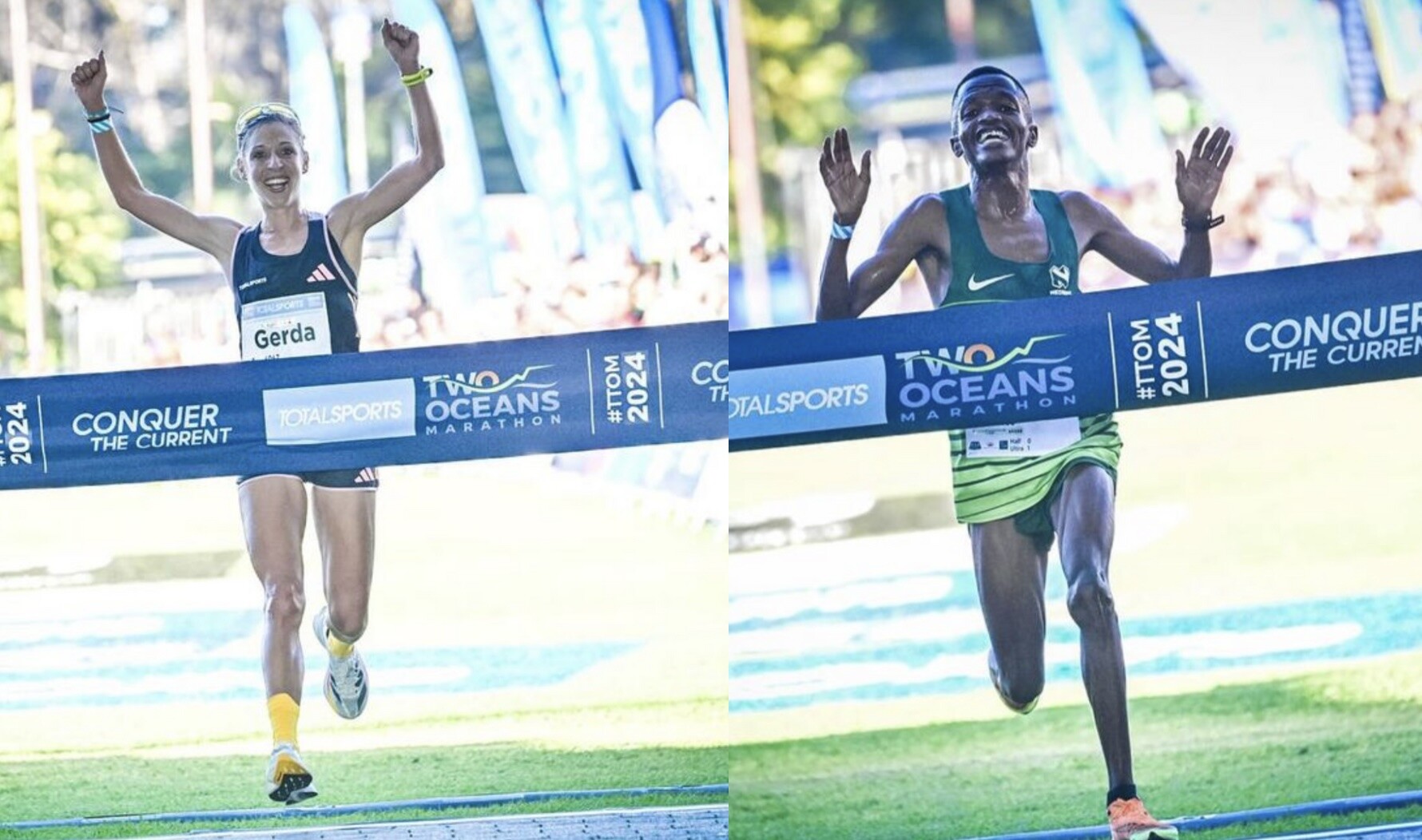
Representing her running club Phantane AC regalia, Steyn surpassed South Africa's Monica Drogemoeller (1988, 1990, 1991 and 1992) and Russian twin Elena Nurggalieva's (2004, 05, 09 and 12) records to be the most decorated ultra marathoner in competition.
Coming to the race, Steyn said she expected a hard-fought battle.
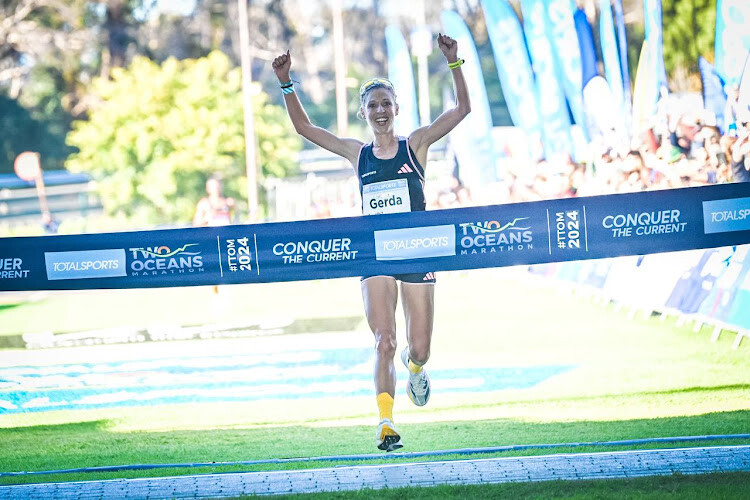
In windy conditions, it was clear from the start of the race that she meant business as she sped into the lead.
At 14km defending Champion Steyn, Irvette van Zyl, and Zimbabwean Loveness Madziva all formed a tight bunch of three, all running an average of 3:35 a kilometre.
At 28km, it became a two-horse race between Steyn and Van Zyl as they climbed small Chappie's neck on neck.
The race between the two titans, a classic rematch of two years ago, there was little separating the two as they descended Chapman's Peak.
At the marathon mark (42.2km), Steyn showed her supremacy and pulled ahead of van Zyl.
Nicknamed the “Smiling Assassin”, she looked unbeatable climbing Constantia Nek and the writing was on the wall for Van Zyl at the 50km mark.
As Steyn passed the finish line, she received a kiss on the cheek from her husband Duncan and cheers from the UCT upper campus sports ground mound.
Van Zyl finished second with a time of 03:29:30 while Madziva clocked 3:38:00 at the end.
In the men’s race, Klerksdorp's Onalenna Khonkhobe became the first South African since 2019 to win the race.
“I’m announcing my arrival; tomorrow you will acknowledge me.” Those were the words of Khonkhobe before the marathon.
He did exactly that with as triumphed in a time of 3:09:30 for top podium finish.
It was his second Two Oceans after making his debut last year, finishing in sixth place.
His Nedbank AC teammate, Lloyd Bosman finished second in 3:09:58 while defending champion Givemore Mudzinganyama could not repeat his 2023 feat, as he took third position in 3:11:13.
(04/16/2024) Views: 161 ⚡AMPby Anathi Wulushe
Two Oceans Marathon
Cape Town’s most prestigious race, the 56km Old Mutual Two Oceans Ultra Marathon, takes athletes on a spectacular course around the Cape Peninsula. It is often voted the most breathtaking course in the world. The event is run under the auspices of the IAAF, Athletics South Africa (ASA) and Western Province Athletics (WPA). ...
more...Kosgei, Chepngetich, Jepchirchir headline stellar Kenyan cast in London Marathon chase
Three Kenyan women aim to break the women’s-only marathon world record at the 2024 TCS London Marathon.
Three of the top four fastest women in marathon history, all from Kenya, are set to take center stage at the 2024 TCS London Marathon, aiming to break the women's-only world record.
This elite trio, comprised of Brigid Kosgei, Ruth Chepngetich, and Peres Jepchirchir, are gearing up for what could be a historic race on the streets of London.
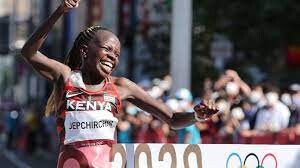
Brigid Kosgei, who previously set the world record at the 2019 Chicago Marathon with a time of 2:14:04, is the veteran of the group.
She has been in top form since breaking Paula Radcliffe's longstanding record and is no stranger to the pressures of big-city marathons.
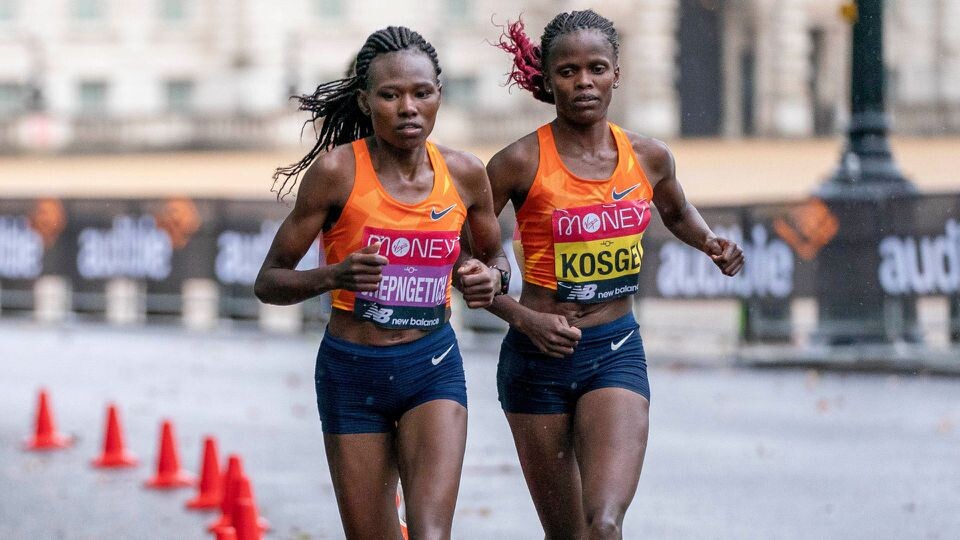
Joining Kosgei is Ruth Chepngetich, the fourth-fastest woman of all time with a personal best of 2:14:18.
Chepngetich's aggressive racing style and ability to maintain a blistering pace make her a serious threat to the current record.
Rounding out the trio is Peres Jepchirchir, the reigning Olympic champion.
Jepchirchir's tactical acumen and proven track record, especially in championship races, position her as a key challenger in this record-breaking attempt.
Her victory at the Tokyo Olympics showcased her endurance and determination, qualities necessary for a successful run in London.
The current women's-only world record was set by Mary Keitany during the 2017 London Marathon, with a time of 2:17:01.
However, with advancements in training and competition, this record has been under threat, particularly with the recent performances of these Kenyan athletes.
Hugh Brasher, Event Director of the TCS London Marathon, emphasized the significance of this race in the context of marathon history.
"We are in a golden age of women’s marathon running," said Brasher. He added, "Despite the incredible achievements in recent years, Mary Keitany’s record has remarkably stood the test of time.
However, with athletes like Kosgei, Chepngetich, and Jepchirchir in the field, alongside ten other women who have all run under 2:17:30, that record is under serious threat."
The race strategy for Kosgei, Chepngetich, and Jepchirchir will likely involve a collaborative effort with pacemakers to ensure a fast, consistent pace throughout.
The London Marathon's unique setup, with elite women running separately from the men, provides an optimal environment for record-breaking performances.
Additionally, the event will feature other top-tier athletes, including Ethiopia’s Tigst Assefa, the current world record holder, and Yalemzerf Yehualaw, the 2022 TCS London Marathon champion.
(04/16/2024) Views: 126 ⚡AMPby Festus Chuma
TCS London Marathon
The London Marathon was first run on March 29, 1981 and has been held in the spring of every year since 2010. It is sponsored by Virgin Money and was founded by the former Olympic champion and journalist Chris Brasher and Welsh athlete John Disley. It is organized by Hugh Brasher (son of Chris) as Race Director and Nick Bitel...
more...Who is Sisay Lemma, the winner of the 2024 Boston Marathon?
Sisay Lemma was born in 1990 in the Oromia Region of Ethiopia. He is the winner of the 2024 Boston Marathon, with a time of 2:06:17.
Sisay Lemma is an Ethiopian long-distance runner who specializes in the marathon. He is the winner of the 2024 Boston Marathon, with a time of 2:06:17.
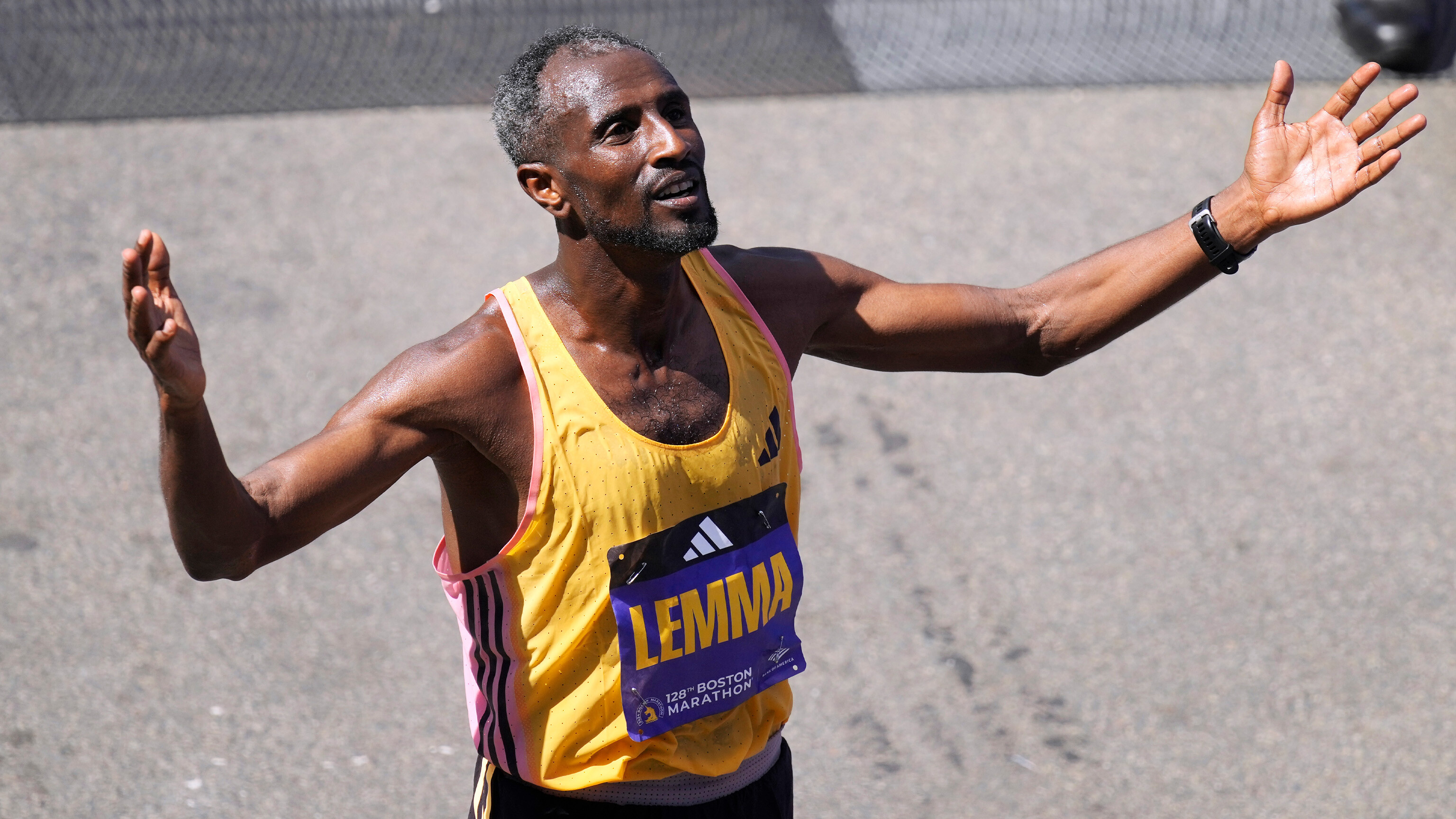
This was his first victory at the Boston Marathon, but he has previously won other major marathons, including the 2021 London Marathon and the 2023 Valencia Marathon. Lemma is also a three-time bronze medalist at the World Athletics Championships.
Lemma was born in 1990 in the Oromia Region of Ethiopia. He began running at a young age, and quickly showed promise. He made his international debut in 2013, and won his first major marathon in 2018, when he won the Rotterdam Marathon.
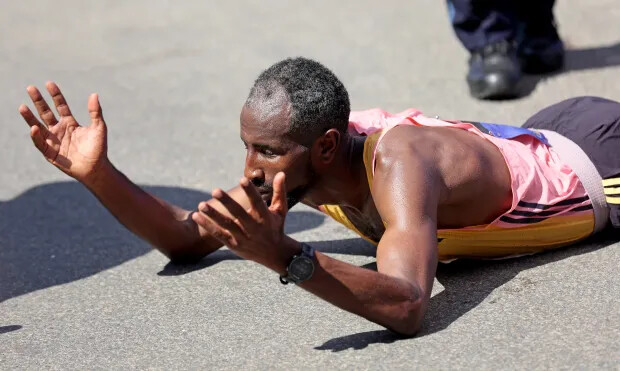
Lemma is known for his strong finishing kick. He has often won races by coming from behind in the final stages. He is also a very consistent runner, and has never finished a marathon outside of the top 10.
Lemma is a rising star in the world of marathon running. He is still relatively young, and has many years of good running ahead of him. He is a strong contender for medals at the major marathons, and the Olympic Games.
Here are some of Sisay Lemma’s career highlights:
Winner of the 2024 Boston Marathon
Winner of the 2021 London Marathon
Winner of the 2023 Valencia Marathon
Three-time bronze medalist at the World Athletics Championships
Winner of the 2018 Rotterdam Marathon
Personal best of 2:01:48 for the marathon
The Boston Marathon: The King of Marathons
The Boston Marathon is an annual foot race held in Boston, Massachusetts, United States. It is considered to be the most prestigious marathon in the world, and is one of the world’s oldest continuously run sporting events. The race is traditionally held on the third Monday in April, and it follows a 26.2-mile (42.2 km) route through the streets of Boston and the surrounding towns.
The Boston Marathon was first held in 1897, and it was inspired by the success of the marathon race at the 1896 Summer Olympics in Athens, Greece. The race was originally intended to be a qualifier for the 1897 Summer Olympics, but it quickly became a popular event in its own right. The Boston Marathon has been held every year since 1918, with the only exceptions being in 1918 due to World War I, and in 2020 due to the COVID-19 pandemic.
The Boston Marathon is known for its challenging course, which features several hills, including the infamous Heartbreak Hill at mile 20. The race is also known for its large and enthusiastic crowds, which line the streets throughout the course to cheer on the runners.
The Boston Marathon has been won by some of the greatest marathon runners in history, including Dick Hoyt, Bill Rodgers, Joan Benoit Samuelson, and Kathrine Switzer. The race has also been the site of several world records, including the first sub-2:00 marathon in 1978 by Geoffrey Hirt.
The Boston Marathon is more than just a race; it is a tradition and an institution. The race is a symbol of Boston’s resilience and spirit, and it is a source of pride for the city’s residents. The Boston Marathon is also a major fundraiser for charity, and it has raised millions of dollars for local charities over the years.
(04/15/2024) Views: 184 ⚡AMPby Laura Islas
Boston Marathon
Among the nation’s oldest athletic clubs, the B.A.A. was established in 1887, and, in 1896, more than half of the U.S. Olympic Team at the first modern games was composed of B.A.A. club members. The Olympic Games provided the inspiration for the first Boston Marathon, which culminated the B.A.A. Games on April 19, 1897. John J. McDermott emerged from a...
more...German double in Hannover
Amanal Petros and Domenika Mayer achieved a German double on home soil at the Hannover Marathon on Sunday (14) with both athletes smashing the course records in the process.
Petros slashed almost one minute from his course record of 2:07:02, successfully defending his title in 2:06:05 despite the blustery conditions on offer in Hannover to win by over one minute from Kenyans Boaz Kipkemei (2:07:06) and Victor Kiplimo (2:09:58).
“I did not expect to run 2:06:05 today. Without the wind I think I would have been around one minute faster,” said Petros who lowered his German record to 2:04:58 in the Berlin Marathon last September.

Petros, who will compete for Germany at the Olympic Games in the marathon in Paris for the second time later this summer, kept something in reserve for the closing stages. He covered the last 2.195km in a fast 6:18 which yielded a negative second half split of 62:54.
In the women’s race, Mayer had the company of Kenyan veteran Sharon Cherop, the 2011 Boston Marathon champion, until the last five kilometers. Mayer maintained her pace in the latter stages for victory in a course record of 2:23:50 although she missed her lifetime best by an agonizing three seconds.
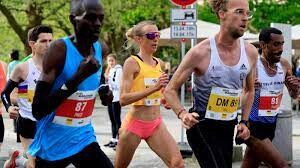
“I am really happy with my race. I was surprised that Sharon held on for so long, but I just concentrated on myself and ran my own race. I am now looking forward to the Olympic Marathon. It will of course be a very different race on a hilly course and without pacers,” said Mayer who took almost two minutes off the previous course record of 2:25:45.
Cherop faded back to second but the 40-year-old was also under the previous course record with her time of 2:24:41.
(04/15/2024) Views: 162 ⚡AMPADAC Hannover Marathon
It is not only the gripping competition that makes the marathon in Hannover so captivating, but also the exceptionally attractive side programme.With numerous samba bands and musicians accompanying the athletes along their sightseeing tour through the city, a feel-good mood is guaranteed on the course. The city will be transformed with a mix of musical entertainment, shows and activities that...
more...How to Watch the 2024 Boston Marathon
The world’s oldest annual marathon is back for its 128th edition.
On Monday, April 15, the World Marathon Majors will return stateside to the 2024 Boston Marathon. In its 128th year, the world’s oldest annual marathon features must-see storylines, including the return of defending women’s champion Hellen Obiri and two-time men’s winner Evans Chebet.

The point-to-point race is scheduled to begin in Hopkinton, Massachusetts, and ends in the Back Bay neighborhood of Boston. The weather forecast for Patriots’ Day is showing slightly warmer temperatures than average in the city. The conditions could make race day more challenging on a course famous for its hills (we ranked Boston as the second-toughest of the six World Marathon Majors).
Here’s everything you need to know about this year’s race.
How to watch the 2024 Boston Marathon
ESPN2 will broadcast the Boston Marathon from 8:30 a.m. ET to 12:30 p.m. ET. You can also live stream the race with an ESPN+ subscription, which costs $10.99 a month.
For those tuning in from Boston, live coverage will be provided by WCVB beginning at 4:00 a.m. ET and lasting throughout the day.
Boston Marathon start times (ET)
Men’s wheelchair division—9:02 a.m.
Women’s wheelchair division—9:05 a.m.
Men’s elite race—9:37 a.m.
Women’s elite race—9:47 a.m.
Para athletics division—9:50 a.m.
First wave—10 a.m.
Second wave—10:25 a.m.
Third wave—10:50 a.m.
Fourth wave—11:15 a.m.
Race preview
This year’s elite race comes with added high stakes for many international athletes. Countries that don’t host Olympic Trials for the marathon are currently in the national team selection process. A standout performance in Boston could be a game-changer for athletes looking to represent their country in Paris this summer.
Women’s race
On the women’s side, Boston podium contenders Hellen Obiri and Sharon Lokedi were included in the shortlist of marathoners under national team consideration by Athletics Kenya.
Obiri, 34, is set to return to Boston after a stellar 2023 campaign. Last year, the On Athletics Club runner won the Boston Marathon and the New York City Marathon. A former track standout with two world championship titles, Obiri aims to continue her winning streak on Monday.
Lokedi, 30, is looking to top the podium at a key moment in her career. The University of Kansas graduate is set to run her first 26.2 since finishing third at the New York City Marathon last fall—a race she won in her marathon debut two years ago.
Kenya will also be represented by 2022 World Championship silver medalist Judith Korir and two-time Boston Marathon champion Edna Kiplagat, among other standouts.
The Ethiopian contingent should be strong as well. Ababel Yeshaneh finished second at Boston in 2022 and fourth in 2023. Plus, 2:17 marathoner Tadu Teshome will be one to watch in her Boston debut.
In the weeks after the U.S. Olympic Marathon Trials in February, more Americans were added to the field. Sara Hall, 40, enters the race after finishing fifth in a new American masters record (2:26:06) at the Trials in Orlando, Florida. 2015 Boston champion Caroline Rotich, 39, joins the field after placing sixth at the Trials. Jenny Simpson, 37, also entered after dropping out in her marathon debut in Orlando. And keep an eye out for 2018 Boston Marathon champion Des Linden, 40, and Emma Bates, 31, who finished fifth in Boston last year.
Men’s race
Evans Chebet is looking for a hat trick. Last year, the Kenyan became the first athlete to repeat as men’s champion since Robert Kipkoech Cheruiyot won three in a row between 2006 and 2008. In the process, the 35-year-old took down two-time Olympic champion Eliud Kipchoge in Boston.
His biggest challenger will likely be Sisay Lemma of Ethiopia, who is returning after a breakthrough season in 2023. In December, Lemma, 33, won the Valencia Marathon in 2:01:48, making him the fourth-fastest marathoner in history. Lemma also won the Runkara International Half Marathon in 1:01:09, a new personal best.
Gabriel Geay, last year’s Boston runner-up, is returning to the field on Monday. The 27-year-old from Tanzania is coming off a fifth-place finish at the Valencia Marathon.
Other runners to watch include 2023 New York City runner-up Albert Korir; Shura Kitata, who placed third in New York last year; and Zouhair Talbi, who finished fifth in Boston last year.
The American men’s field also grew after the Olympic Trials with the addition of Elkanah Kibet and Sam Chelanga. Kibet finished fourth in Orlando in a 2:10:02 personal best, and after dropping out after mile 18 of the Trials, Chelanga will aim for redemption in Boston. They join 50K world record-holder CJ Albertson and the BAA’s Matt McDonald in the elite race.
(04/14/2024) Views: 142 ⚡AMPby Runner’s World
How Cold Weather Saps Your Endurance
Contrary to what scientists once thought, even superficial cooling is enough to interfere with muscle oxygen supply.
The human body is an engine with efficiency similar to a car engine. In both cases, about three-quarters of the energy consumed is released as heat. That’s why it’s easy to heat the interior of a car: just blow some of that heat from the engine into the cabin. And it’s why endurance athletes worry a lot about getting too hot but mostly view cold as a minor annoyance rather than a fundamental limit on performance. If you’re pushing hard enough, you won’t be cold for long—right?
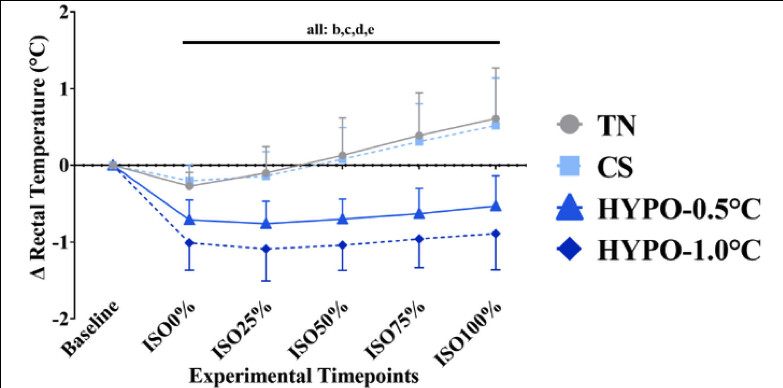
But new research published in the Journal of Applied Physiology suggests that cold really does diminish endurance performance. That’s contrary to what some previous research has found, but those earlier studies often involved volunteers who were ushered into a cold room and then immediately asked to exercise without waiting for their body temperatures to drop. In the new study, the volunteers got cold—and then stayed cold, no matter how hard they exercised. That’s a lesson that winter athletes will want to keep in mind next time they’re lingering in frosty air before a workout or a race.
The study was led by Phillip Wallace as part of his doctoral work in Stephen Cheung’s Environmental Ergonomics Laboratory at Brock University in Canada. Cheung is a serious cyclist whose lab has produced a bunch of interesting endurance-related research that I’ve written about previously on topics like heat, hydration, and self-talk. Cold research, on the other hand, usually focuses on safety-related topics like hypothermia and frostbite.
The new study compared cycling performance in four different conditions. In the control “thermoneutral” condition, the subjects sat in a temperature-controlled chamber set at 72 degrees Fahrenheit (22 Celsius) for 30 minutes. Then they started cycling with five minutes of warm-up at 100 watts before pedaling to exhaustion at 70 percent of VO2 max, which took on average just under 24 minutes. In the “cold shell” condition, the chamber was set to 32 degrees Fahrenheit (0 Celsius) and a wind speed of about one meter per second was added. Half an hour in these conditions was enough to significantly decrease skin temperature without dropping core temperature (as measured with a rectal thermometer) before starting the cycling test.
For the other two conditions, the subjects—ten men with an average age of 27—stayed in the 32-degree Fahrenheit chamber for long enough to drop their core temperatures by 0.9 or 1.8 degrees Fahrenheit (0.5 or 1.0 Celsius) before cycling, imposing mild hypothermia. Because of differences in body size, shape, and composition, people cool at different rates, but on average it took 116 minutes to reach the first threshold. For the second threshold, the average was 160 minutes, though three of the subjects didn’t cool all the way before hitting the maximum cooling time imposed by the research ethics board. During all the cooling trials, the subjects wore a T-shirt or cycling jersey and cycling shorts plus earmuffs, winter gloves, and a fleece blanket around their shoes—added warmth that turned out to be necessary during pilot testing.
There are a bunch of reasons you might expect endurance to suffer in the cold. Even with just a cold shell, your peripheral blood vessels will constrict, decreasing the flow of oxygen to your muscles. Cold also has more subtle effects on the chemistry of how oxygen is transported in the blood. And once you start shivering, you can burn a substantial amount of energy: in this study, the metabolic heat generated by the subjects doubled from the equivalent of about 10 percent of VO2 max in the thermoneutral condition to 20 percent in the hypothermic conditions. Shivering can also interfere with muscle contraction and coordination, and may even fatigue the muscles themselves.
Despite all these negatives, previous studies with similar cycling tests at 70 percent of VO2 max found that performance in 37 to 39 degrees Fahrenheit was either unaffected or even improved compared to moderate temperatures. Wallace’s results with pre-cooling were dramatically different, though. Time to exhaustion on the bike dropped from 23.8 to 16.2 minutes in the cold shell condition, 8.5 minutes in the first hypothermia condition, and 6.5 minutes in the second one. The results provide clear evidence that skin cooling alone is enough to reduce endurance by about 30 percent, and core cooling takes away another 30 to 40 percent.
It’s interesting to look at how the core temperatures evolved over the course of the time trials. Here’s a graph showing changes in temperature for thermoneutral (TN), cold shell (CS), and the two hypothermia (HYP) trials:
For both thermoneutral and cold shell, core temperature rises steadily through the time trial, as you expect from running a heat-generating engine to its limits. For the two hypothermia trials, on the other hand, the curve is almost flat, even though they’re cycling at exactly the same power output in all four trials. In fact, the core temperature even decreases during the first quarter of the trial, perhaps because warm blood is being pumped to peripheral muscles and cold blood is being shunted back to the core. The nuances of how heat is stored and moved around within the body are complex, but the upshot is that even cycling to exhaustion isn’t enough to warm you up if you’ve lingered for long enough in temperatures around the freezing mark.
One variable that’s hard to control is the mental effects of sitting around in a cold chamber for several hours. Physiology aside, you have to imagine that in those trials, the subjects just wanted to go home rather than ride a bike. As expected, their pre-ride motivation was lower, dropping from an average of three on a four-point scale in the thermoneutral trial to 2.5 and 2 in the hypothermia trials. Their initial perception of exertion when they started riding was also higher: 12 and 12.5 rather than 9.5 on the Borg scale, which measures exertion on a scale from 6 to 20. But by the end of the ride, the riders hit a max of 20 in all four conditions—so it’s not like they were unable or unwilling to push themselves.
The revelation that being really cold is bad for endurance may not seem that surprising. The most interesting distinction here, I think, is between exercising in the cold and being cold before you start exercising. One of my pathological neuroses as a runner is the fear of hearing the starting gun fire while I’m still wrestling to get my sweatpants off over my racing shoes. As a result, I often strip off my warm-ups well before the start even in sub-freezing temperatures. If there’s one idea I’ll take away from Wallace’s research, it’s that I need to invest in some tearaway pants.
(04/14/2024) Views: 140 ⚡AMPby Outside Online
Should You Use Cold or Heat for Recovery?
They both have benefits. Here’s how to use them to feel and perform better.
No matter what kind of athlete you are—from casual dabbler to elite competitor—you’ve likely experienced the soreness that follows a strenuous workout. In medicalese, it’s called delayed onset muscle soreness (DOMS), and it usually peaks 48 hours after exercise. It’s a normal consequence of pushing yourself to get stronger or tackling a big goal like riding a century, but that doesn’t make it any more pleasant. It can be especially frustrating when you’re just starting out and push too hard before you build up your fitness.
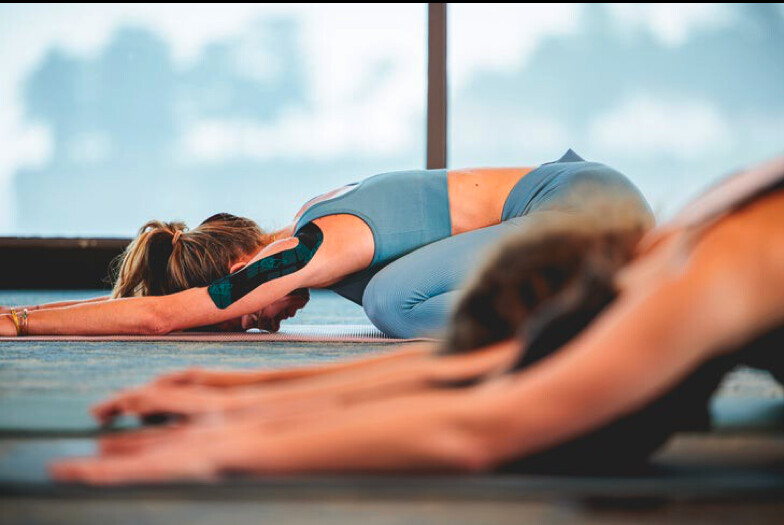
Despite the near-universal experience of DOMS—runners, cyclists, hikers, climbers, and paddlers all feel it—the underlying cause is poorly understood. The theory is that after strenuous exercise, some combination of muscle spasms, lactic acid buildup, tissue damage, and inflammation lead to pain and soreness. Fortunately, the science around treating DOMS using cold and heat therapy—and the tools available—has made great progress in recent years. Also good news: cold and heat are great for treating other common aches and pains, including injuries, joint soreness, and muscle strains.
Cold and heat are both known to provide relief, but they work in different ways, so it’s important to know when and how to use them. As a simple rule of thumb, cold has anti-inflammatory and pain-reducing qualities, making it a great option for post-workout recovery and treating injuries. Heat increases blood flow and loosens muscles and is good for pre-training warm-up.
Cold therapy has long been known to reduce DOMS symptoms, as it causes vasoconstriction, which reduces inflammation. “It’s like clamping down on a water hose, so fluid gets pushed out, which reduces swelling,” says Dr. Erin Hassler, a sports medicine expert who has worked with USA Track and Field and is a member of KT Tape’s Medical Advisory Board. “Cold also dampens pain by redirecting the brain away from the affected area.” Indeed, cold reduces pain better than heat, according to this study in the Journal of Strength and Conditioning Research. The authors also concluded that cold is best for aiding strength recovery in the first 24 hours after exercise.
And it’s not just ice packs that’ll do the trick. Menthol, an organic compound derived from peppermint oil, causes a cooling sensation when applied to skin. Essentially, it signals your cold receptors that you’re experiencing a drop in temperature and in turn tricks your brain into numbing the pain. Menthol doesn’t aid healing, as it’s not actually making your body cold, but it mimics the chemical process that would occur if you experienced cold, providing similar pain relief. Magic.
But don’t put all your eggs in the cold basket. Heat is just as good for some benefits and has others that cold doesn’t. That same Journal of Strength and Conditioning Research study concluded that compared to using nothing at all, both cold and heat were “significantly better to prevent elastic tissue damage,” and both reduced the loss of muscle strength. (The control group lost 24% of strength just after exercise; subjects using cold or heat just after exercise lost only 4%.) Unlike cold, heat is great for promoting blood flow and warming muscles for exercise.
So how do you work cold, menthol, and heat into your own recovery routine? With tools that use research-backed technologies for effectiveness and are easy to use, so you put them into practice. KT Tape, the company that pioneered high-performance kinesiology tape that can reduce DOMS by 50%, designed a tool kit of products to help you perform and feel your best. Here are four ways to work cold and heat therapy into your regular workout program.
This new product combines the long-lasting pain alleviation of kinesiology tape and the immediate cooling relief of menthol. The stretchy, ultra-breathable tape has the same elasticity as your skin, so it flexes as you move, releasing and recoiling like a rubber band. And it’s easy to apply the tape for various needs in places like knees, shoulders, hamstrings, and more. Just follow this online guide with video tutorials for treating specific body parts. Once applied, the tape lifts the skin, temporarily increasing blood flow to the area, helping to reduce pain and soreness. Add the cooling sensation of menthol, which enhances pain relief, and you have the ideal dual-action tape that you can leave on for up to seven days for ongoing pain relief and support. And unlike a menthol cream that can sweat off, says Dr. Hassler, “It goes where you want it to go and stays on.”
(04/14/2024) Views: 152 ⚡AMPby Outside Online
Can you bet on Marathons? The answer is “Maybe”
Do you remember the excitement you felt watching elite athletes stomping their feet against the ground in rhythmic paces, the memories of the victories, the failures, the tense moments that kept you in suspense, wondering if an athlete would make the finish line?
What if I told you that experience could be heightened tenfold with the opportunity to place bets on those outcomes? Can I bet on marathons? That's precisely what we'll explore in this article.
It's natural to question if sports betting extends to marathons. While sportsbooks traditionally cover a wide range of track and field events to cater to diverse sports enthusiasts, betting on marathons has been a rare feature. However, all that changed with a significant development in 2023.
The Boston Marathon Breakthrough
In 2023, the track community buzzed excitedly as Bovada, one of the leading online sportsbooks, made a groundbreaking decision. It was the first time a sports betting site would venture into marathon betting. This decision surprised everyone, raising eyebrows and sparking discussions among sports enthusiasts and bettors alike. The backstory of how Bovada ventured into marathon betting is intriguing and unexpected. It all began with a tweet from LetsRun.com, a popular website dedicated to race news and analysis. The tweet mentioned the lack of betting options for the Boston Marathon. Bovada saw this as an opportunity to enter and establish a presence in the market.
Recognizing the potential for a new and untapped market, Bovada leveraged the power of social media in a bold statement responding to LetsRun's tweet. They would indeed offer betting odds for the upcoming Boston Marathon. The unexpected move shocked the sports betting industry as news spread rapidly. The inclusion of marathon betting on Bovada's platform marked a significant milestone for the sports site. Marathon fans and bettors suddenly had a new way to engage and benefit from their favorite races. The possibilities were endless, from predicting the winner to wagering on finishing times.
The Impact of Bovada's Decision
Bovada covered the Boston Marathon in 2023 for the first time after a tweet from LetsRun.com initiated the conversation about marathon betting possibilities. This decision opened up new avenues for bettors and instigated discussions to move marathon betting mainstream. As other sportsbooks note, the opportunities in marathon betting are lucrative for expansion. It would indeed be a promising future for bettors and running enthusiasts alike.
The Future of Marathon Betting
So, what exactly does the future hold for marathon betting? While it's impossible to predict with certainty, we are sure that the industry will keep evolving to embrace new possibilities. As more sportsbooks recognize the potential of marathon betting, we can expect a broader range of betting options. Imagine being able to bet on significant marathons like Boston and New York, as well as local races worldwide.
The sports betting industry has always been known for its innovation and adaptability. The inclusion of marathon betting only follows a natural progression of the trend. New markets and diverse interests allow sportsbooks to expand their offerings while providing opportunities for bettors. Whether you're a seasoned bettor or a casual fan, marathon betting offers a unique opportunity to engage with the sport in a new way.
The Importance of Responsible Betting
Despite the excitement surrounding marathon betting, it's important to remember the importance of responsible gambling. While betting can add a new layer of excitement to watching sporting events, it should never be taken irresponsibly. Regulations and guidelines must be set to ensure responsible gambling practices. If you ever find yourself overly addicted to any form of gambling, you should seek professional help. Marathon betting can be safe, exciting, and rewarding with the right approach.
Frequently Asked Questions (FAQs)
The legality of marathon betting varies depending on your location. For many state jurisdictions, sports betting is completely regulated and legal. Always check the laws in your area before betting.
Specific bet types may vary depending on the sportsbook you patronize. Standard options include betting on the overall winner, predicting finishing times and wagering head-to-head matchups between runners.
Marathon betting markets are still relatively rare. However, with increasing interest in the sport, more sportsbooks may begin to allow users to place bets. Keep your eye out for major online sportsbooks and news outlets for updates on available markets in your region.
Elite races like the Boston Marathon may attract more attention from sportsbooks since it launched marathon betting on the global scene. There's still potential for expanding betting markets to include local and regional races.
Like other forms of sports betting, research, understand the sport, and bet responsibly. Stay informed about the latest news and developments; these can give you an edge when placing bets.
Thanks to Bovada's groundbreaking decision to cover the Boston Marathon, whether you can bet on marathons is now in the right place. Marathon betting is fast becoming a viable option for sports bettors globally.
As the years progress, the potential for marathon betting will improve. So, why add extra excitement with a well-placed bet the next time you tune in to watch a marathon? Just remember to gamble responsibly and enjoy the beauty of the race.
(04/13/2024) Views: 179 ⚡AMPShould you use a hydration vest during your marathon?
Hydration vests are becoming increasingly popular for road marathoners. Should you get one?
Do you need a hydration vest for racing a marathon? What about a half-marathon? Traditionally associated with trail running and ultrarunning, hydration vests are becoming more and more popular on the roads. But why do people wear them? And how useful are they for a marathon or half-marathon?
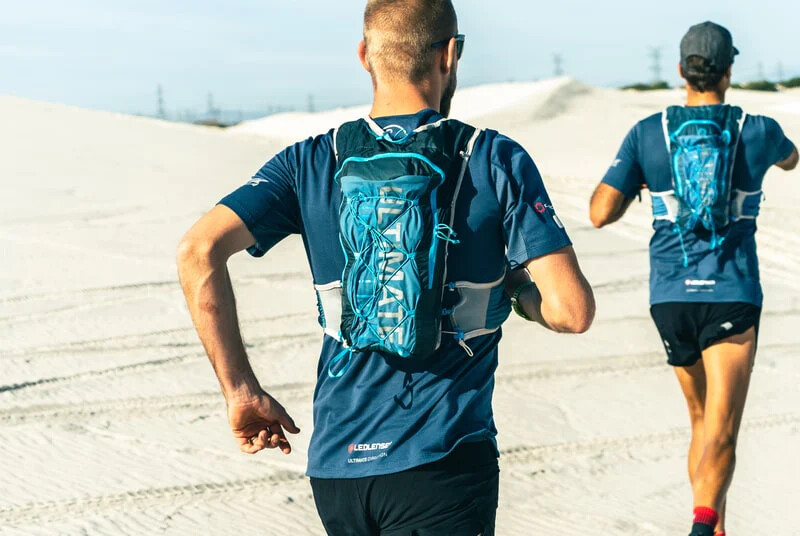
The case for the vest
The main reason people wear hydration vests is to ensure they have easy access to water during their runs. Hydration is important during long runs or races, particularly in hot weather, and carrying water bottles can be cumbersome and inefficient. A hydration vest provides a convenient and hands-free way to carry enough water or sports drinks to stay hydrated for a few hours. (Most come with either two 500 ml soft bottles that fit into pockets on the front of the vest, which you can drink from without removing them, or a larger hydration reservoir or “bladder” that fits in the back of the vest and from which you drink via a hose with a bite valve–or both. Popular brands like Salomon, Osprey, The North Face, and Nathan offer both.)
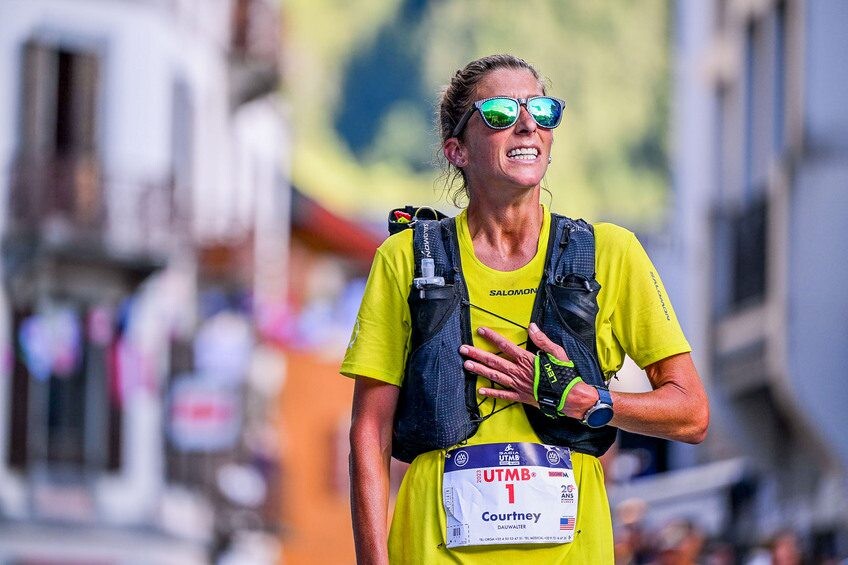
Many runners opt to fill one bottle with water and the other with electrolytes.
While most races provide water stations, they can be crowded, and they may not appear as frequently as you would like, so you may have trouble getting as much hydration as you need.
Generally speaking, unless it is extremely hot and you’re racing on trails, you’re unlikely to need the volume of hydration provided by a vest for a half-marathon.
The case against the vest
Some runners love hydration vests for the convenience and peace of mind they provide, but some find them uncomfortable. They may also make you even hotter on an already hot day, since they basically constitute an extra layer of clothing. The advantage is, they can usually hold significantly more fluids than a water belt (not to mention your other essentials, extra clothing, etc.); however, water is heavy, so you may prefer to opt for some combination of carrying your own water and relying on what’s provided on course.
During long training runs, you can plan your route based on the location of water fountains. Some runners even drive or bike their route ahead of time to stash water bottles along the way. Another option is to plan your route so you start from your doorstep and run the same smaller loop multiple times, allowing you to stop and hydrate at home after each lap.
It’s also important to make sure you’re adequately hydrated before a hot run or race.
As with any other piece of gear, if you do decide to invest in a vest for your marathon, be sure to try it out on your long runs a few times before your big day.
(04/13/2024) Views: 149 ⚡AMPby Brittany Hambleton
The Dos and Don’ts of Shakeout Runs
Plus, dos and don’ts to keep in mind ahead of race weekend.
A shakeout run a day or two before a half or full marathon is a great way to prime your body for what’s to come. It’s also a great time to make meaningful connections with other runners who trained for months to show up to the start. This is why a host of brands and running groups encourage you to join them for a few easy miles before you toe the line.
A shakeout run can also provide exactly what you need to calm your race-weekend nerves.
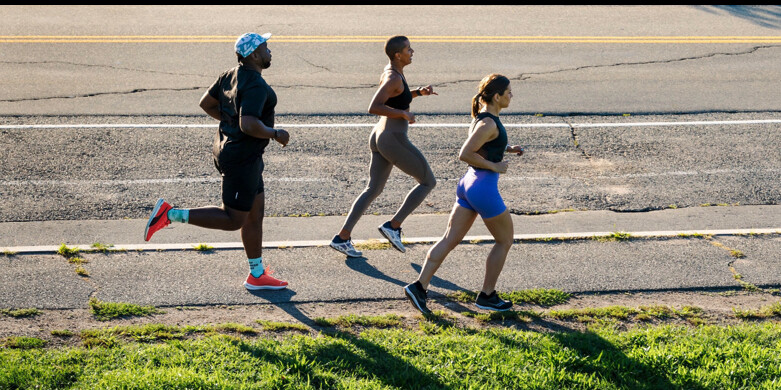
“If you’re going to run with other people, you should be able to hold a full conversation without huffing and puffing at all,” says Amanda Nurse, owner and founder of Wellness and Run Coaching, and 25-time marathoner.
Booth agrees, suggesting you pay attention to your breathing rate and muscle activation, as burning muscles can also indicate you’re running too fast. Think of your shakeout run effort as no faster than your slowest long run, adds Booth, who recommends aiming for a 3 out of 10 effort on the rate of perceived exertion scale, and staying within zone 1 or 2 if you’re monitoring your heart rate.
Most importantly, remember that a group setting can bring high energy, but being a smart runner means knowing and sticking with your own pace. “Nobody wins the shakeout run, no one wins the warmup, and that’s what you’ve got to remember,” Booth says.
Don’t Spend Too Much Time On Your Feet
Account for the time you spend walking around and attending other race-related events over the weekend, so you can limit how much time you spend on your feet. McKirdy recommends choosing at most three race weekend events, especially if you’re running in a big city race like Boston, New York, or Chicago.
“It’s really easy to walk miles and miles on your feet the two or three days leading into the race,” says McKirdy. If it’s a walkable city, you can easily add thousands of steps to your day, which can be a shock to your body if you don’t typically walk that much, he adds. And that can affect your race performance.
Do Stick With Your Training Schedule
“If you don’t typically run the day before your long run or workout and that’s more of a cross-training day or a recovery day, keep it the same,” says Nurse. That means if a shakeout run won’t feel good to you, skip it.
Walking for up to 30 minutes, cycling at a low intensity for about 10 minutes, or running a 5K at an easy pace two days before a race are great alternatives to a shakeout run the day before, Nurse says. Just make sure you take the day off the next day, she adds.
Don’t Judge Your Potential By Your Shakeout Run Performance
Remember: The shakeout run is designed to help you “shake out” your muscles, which requires an easy pace. It’s also a good time to shake out any race jitters, so you can get into a positive mindset, if you haven’t done so already, for race day. It’s not the time to see how fast you can run and use it as a race day predictor.
If you do want to get the legs turning over faster though, Nurse recommends adding a couple of 20- to 30-second strides at a quicker pace, followed by a very slow pace or even a walk to the end of your shakeout run. This can help ease your nerves around performance, she says.
To help you get the most of your shakeout, here are the benefits you can gain, plus a few dos and don’ts to keep in mind.
The Benefits of Shakeout Runs
A shakeout run means clocking a few miles at an easy pace a day or two before a half or full marathon. With a few precautions in mind, it can benefit you both mentally and physically.
“There’s activation, there’s mobility, there’s recovery, and all those things come together to create a great performance,” says Emily Booth, member of the NASM scientific advisory board, NASM-certified personal trainer, marathoner, and eight-time Boston Marathon finisher. Shakeout runs fall into the activation category. They can help promote blood flow, neurological activation, and neuromuscular activation, which is really helpful for runners who’ve been tapering for a marathon, Booth explains.
In short, shakeout runs are great for improving your mind-body connection the day before a race, helping you set a rhythm that will come in handy on race day. Plus, these quick and easy runs get your muscles ready to go for your race performance. For those who’ve spent a long time sitting while traveling via car or plane before a race, it’s extremely beneficial because a shakeout run can help loosen tense muscles, Booth adds.
Shakeout runs are also known for bringing runners together and fostering a sense of community, especially the day before big races like the Boston Marathon or New York City Marathon. “There’s this unspoken energy about meeting with people, sometimes it’s described as electric and that emotion can be very uplifting,” says James McKirdy, the founder and head coach of McKirdy Training. Plus, it’s an experience you likely won’t forget.
Dos and Don’ts of Shakeout Runs
Do Go Slow
Consider your body’s glycogen stores as your personal energy bank account—you can only make so many withdrawals before you have to refill your account, says Booth. While it’s important to go for a shakeout run at least the day before a marathon to activate your muscles, stay aware of your pace, so you don’t over do it and have trouble replenishing your glycogen stores before your event, she adds. This means running your shakeout at an easy pace.
(04/13/2024) Views: 110 ⚡AMPby Runner’s World
How to Recycle or Repurpose Your Old Running Watch
Sadly, it’s not as easy as dropping off your old shoes at a local running store.
There comes a time when every GPS watch or activity tracker must be replaced. Maybe you’re currently in the market for a new one because it doesn’t hold a charge long enough or has finally broken down. After the excitement of taking a brand new watch from its packaging, you might turn to your old one and think, now what?
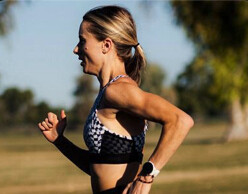
If your old watch is beyond repair, you now have some pesky electronic waste (e-waste) on your hands. According to the World Health Organization, e-waste is the fastest growing solid waste stream in the world, and the United Nations reports only 20 percent of that waste is recycled.
It can be confusing to understand what exactly you’re supposed to do with e-waste because it’s inconvenient to properly dispose of. So your watch (and other old electronics) languish in forgotten dresser drawers or in dark basements.
Recycling your old watch won’t be as easy as recycling a plastic bottle, but we’ve rounded up the disposal programs from several major watch companies to get you started. You’ll also find how to wipe your data from the watch before recycling it.
Switching watch brands? You can export your data, but you may find it easier to sync the brand’s app to your favorite activity-tracking app. Exporting your data can take up to 30 days for some brands, the file types and quantities could intimidate those who aren’t tech savvy, and importing the data can take hours.
Brands That Recycle Your Watch for You
Apple, Fitbit, Garmin, and Polar currently offer programs for recycling or that allow users to return their watches to them.
Apple
Apple's Reuse and Recycling Program offers trade in value from $70–$365 for your old Apple Watch. You can initiate the process online or visit an Apple Store to learn if your watch is eligible for credit. If it isn’t, Apple will recycle it for you for free.
See Apple’s instructions for how to reset and prepare your watch for recycling and trade in.
Update your Apple Watch to the latest version of watch OS > unpair and erase your Apple Watch (when you unpair, your iPhone will create a backup) > remove the band from your Apple Watch (if included in the box, it will be recycled)
You can export your health and fitness data from Apple's Health app.
Tap your initials at the top right (or by tapping Summary or Browse at the bottom of the screen, then scroll to the top) > tap Export All Health Data
Fitbit
You can recycle your Fitbit through Google’s recycling program, which provides a free shipping label (for those in the U.S., for the rest of the world). Place your Fitbit in a sturdy box, attach the label, and follow the shipping directions or drop the package off at a nearby collection site.
Select your fitbit device for instructions on how to erase your data.
To remove a device from your account, in the Fitbit app: tap Today tab > Devices > the image for the device you want removed > option to remove device (tap trash icon on Android phones) > follow on-screen instruction to remove from your account
From Fitbit.com: settings icon on dashboard > click the image for the device you want removed > scroll to the bottom and click option to remove device > follow on-screen instructions to remove from your account
Review these directions for exporting your Fitbit data. This can take a few days, depending on the size of your data.
From fitbit.com dashboard: click gear icon > Settings > Data Export > under Export Your Account Archive, click Request Data > Fitbit will email asking to confirm request > Fitbit will then email a link to download account data
Garmin
Garmin's Consumer Product Recycling Program allows you to ship your watch back to them for recycling, but you have to cover the cost of shipping.
You can find your watch’s owner’s manual for instructions on how to wipe your data or perform a master reset.
Power off the device > press and hold the two right keys > while holding the two right keys, press and release the power key to turn the device on > after the first beep, release the upper right key > after the second beep, release the bottom right key
If you want to export your data, Garmin will send a link to download an export file, which takes 48 hours to 30 days.
Log in to Garmin.com > Account > Manage Your Data > Export Your Data > Request Data Export
Polar
Polar offer steps for turning in your watch for repair, but if it’s recycling you’re after, customers are welcome to send any devices to Polar’s New York service center. Like Garmin, you will need to cover the cost of shipping, but you’ll also need to include a note that indicates it is to be recycled and not repaired. Polar works with a company that recycles their products. Mail to:
Polar Electro Inc. ATTN: TSVC CSVC 15 Grumman Road West, Suite 700 Bethpage, NY 11714
To wipe your data, plug your watch into your computer’s USB port > open the FlowSync software > click settings icon and FACTORY RESET (this will take a moment) > unplug the watch
Review these directions for exporting your Polar Flow data.
Log into account.polar.com > click Download Your Data on the left hand menu or scroll to the bottom of the page > click Download on the right to initiate the request > download the data within two weeks of receiving it in an email
Brands That Direct You to do the Recycling
We reached out to Coros and Suunto, who do not currently offer recycling programs. Instead, they instruct you to recycle your device in accordance with local e-waste regulations. But first, here’s how to erase and export your data.
Coros
Coros may periodically offer a trade-in program (like this one in 2021) and just completed a trade-in pilot program in the U.S., but you'll most likely need to recycle it. Either way, here’s how to reset your Coros watch.
From the watch: System > More Settings > Reset > Reset All
From the COROS app (when watch is connected): Profile page > tap the watch icon > scroll down and tap "Remove"
If you would like to export your training data, Coros says to email support@coros.com. You will receive a .ZIP file including your training data.
If you are switching to Coros from another brand, follow these instructions for importing your data. This could take a few hours to complete.
Log in to coros.com > click on Activity List > click Import Data > Select File
Suunto
You can reset your Suunto following these instructions.
For several watches (Suunto 5 Peak, 9 Peak, 9 Peak Pro and Suunto Vertical): Go to the watch’s Settings > select General and scroll to Reset settings > select Reset
Chat with Suunto customer support Monday to Friday 4 a.m. to 4 p.m. EST (9 a.m. to 9 p.m. Central European Time) for a link to download your full history of activities in a .ZIP file.
Electronics Recycling
Your city will likely have resources for e-waste that can be found online by searching “what to do with my e-waste."
Possible options in your area include taking your watch to a landfill that accepts e-waste, hiring a company that offers pick up services (a good opportunity if you have larger e-waste you need to get rid of), or dropping off at a local university, as some provide community e-waste recycling.
While it’s inconvenient to recycle e-waste, it does keep harmful materials from being released into the environment and allows valuable ones to be reused. Your efforts will be appreciated by people and planet alike.
If Your Watch Is Still Working
Consider giving it to a friend or family member or donating it to an organization like Still I Run, which promotes the benefits of running for mental health. Their Starting Line Scholarship removes barriers to running by providing new runners the gear they need—your old watch could have a second life, getting someone else started on their running journey. Only send watches that can hold a charge for at least 24 hours and are free from scratches that prohibit someone from being able to view the screen. If your watch meets these requirements, you can mail your watch and its charger to:
PO Box 10 Hudsonville, MI 49426
You can also donate it to your local Goodwill. Just of course be sure to wipe your data or do a factory reset, using the directions above.
(04/13/2024) Views: 113 ⚡AMPby Runner’s World
Big Sur International Marathon to change route after road collapse
One of North America’s most well-known and scenic marathons, the Big Sur International Marathon, has been forced to change its course three weeks before the April 28th race day due to a road collapse on the Pacific Coast Highway (Highway 1) just south of Carmel-by-the-Sea, California.
Traditionally, the marathon starts at Big Sur Station, covering 42.2 kilometres north on Highway 1 to the Crossroads in Carmel. However, a slip-out from a March 30 rainstorm damaged the southbound lane on Highway 1 near Rocky Creek Bridge, just south of Notleys Landing. As more rain fell later in the week, the situation worsened. “There’s no road,” one local source told Canadian Running.

Highway 1 has been closed to all traffic since March 31st and is only open to locals who live in the area and essential workers.
Despite the road closure, race organizers remained optimistic about holding their 37th annual marathon, now revising it to an out-and-back course from Carmel-by-the-Sea to Notleys Landing. The marathon will start and finish in Carmel-by-the-Sea, bypassing the damaged area. The other races (11-miler, 12K, and 5K) will maintain their original courses, unaffected by the damage.
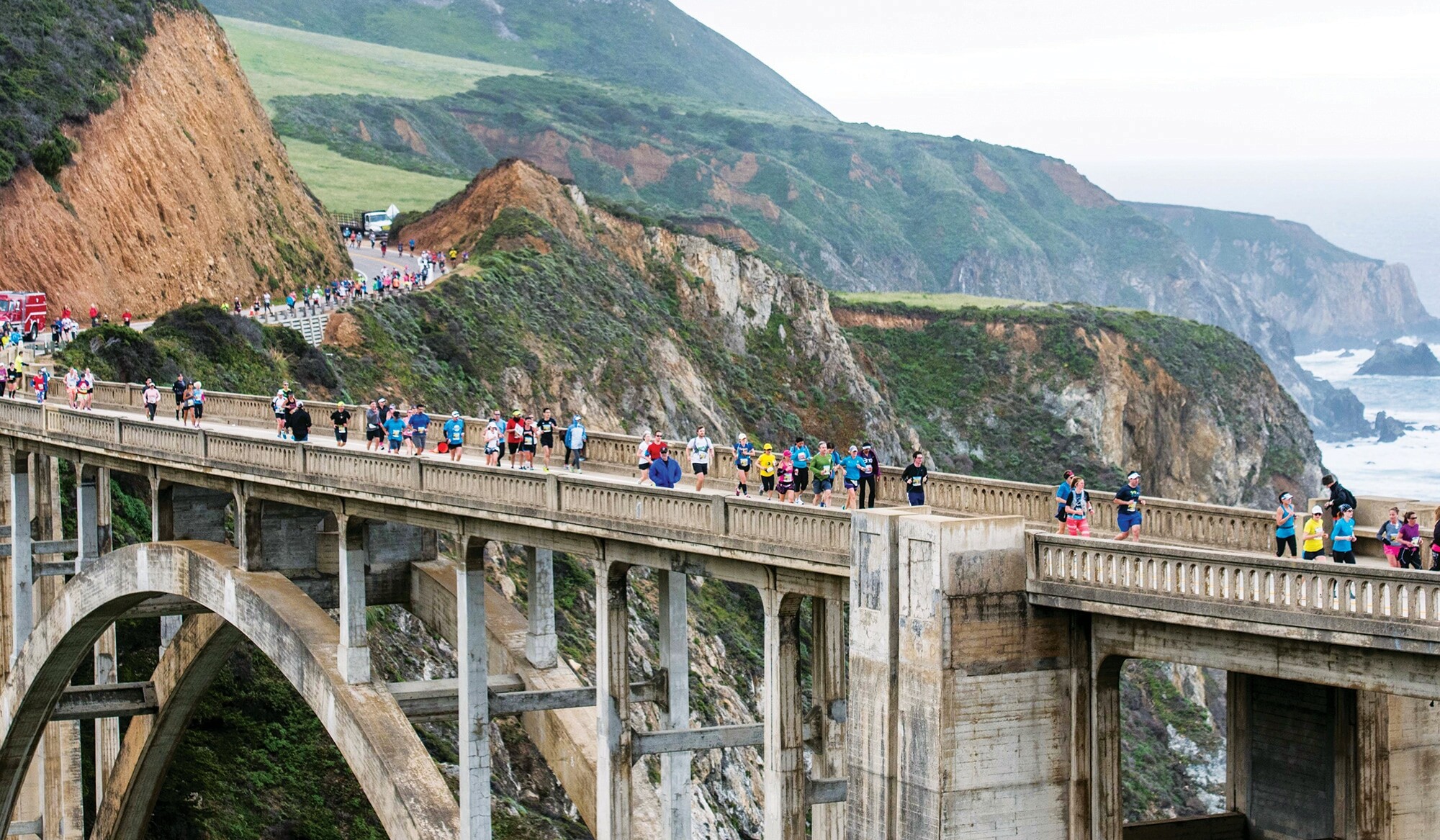
Josh Priester, the race director for the Big Sur Marathon, said in a press release that the team has been working tirelessly to identify solutions and prepare for race day on April 28th. “I am extremely grateful for the commitment and dedication that I have seen from our entire community supporting us during this process. After multiple discussions, it has been determined that running the point-to-point route from Big Sur to Carmel past the slip-out location is not an option.”
This is not the first time the race has had to deal with a reroute. In 1998 and 2011, the Big Sur International Marathon was also rerouted to an out-and-back format due to a landslide on Highway 1. Each year, the race attracts about 4,500 participants from around the world.
(04/12/2024) Views: 144 ⚡AMPBig Sur Marathon
The Big Sur Marathon follows the most beautiful coastline in the world and, for runners, one of the most challenging. The athletes who participate may draw inspiration from the spectacular views, but it takes major discipline to conquer the hills of Highway One on the way to the finish line. Named "Best Marathon in North America" by The Ultimate Guide...
more...Emmaculate Anyango Achol will headline 16th edition of TCS World 10K Bengaluru
Emmaculate Anyango Achol, the world's second-fastest 10K woman runner, will headline the 16th edition of TCS World 10K Bengaluru, scheduled for Sunday. The World Athletics Gold Label Road Race is a USD 210,000 prize money event featuring some of the world's most accomplished road and track and field athletes.
And among the star attractions this year is Kenya's Anyango, who clocked an excellent 28:57 in Valencia while finishing behind her teammate Agnes Ngetich, who posted a world record 28:46 there.
A silver medalist in the 2019 African junior championships in 3000m, Anyango narrowly missed the Belgarde podium in this year's World cross-country championships.
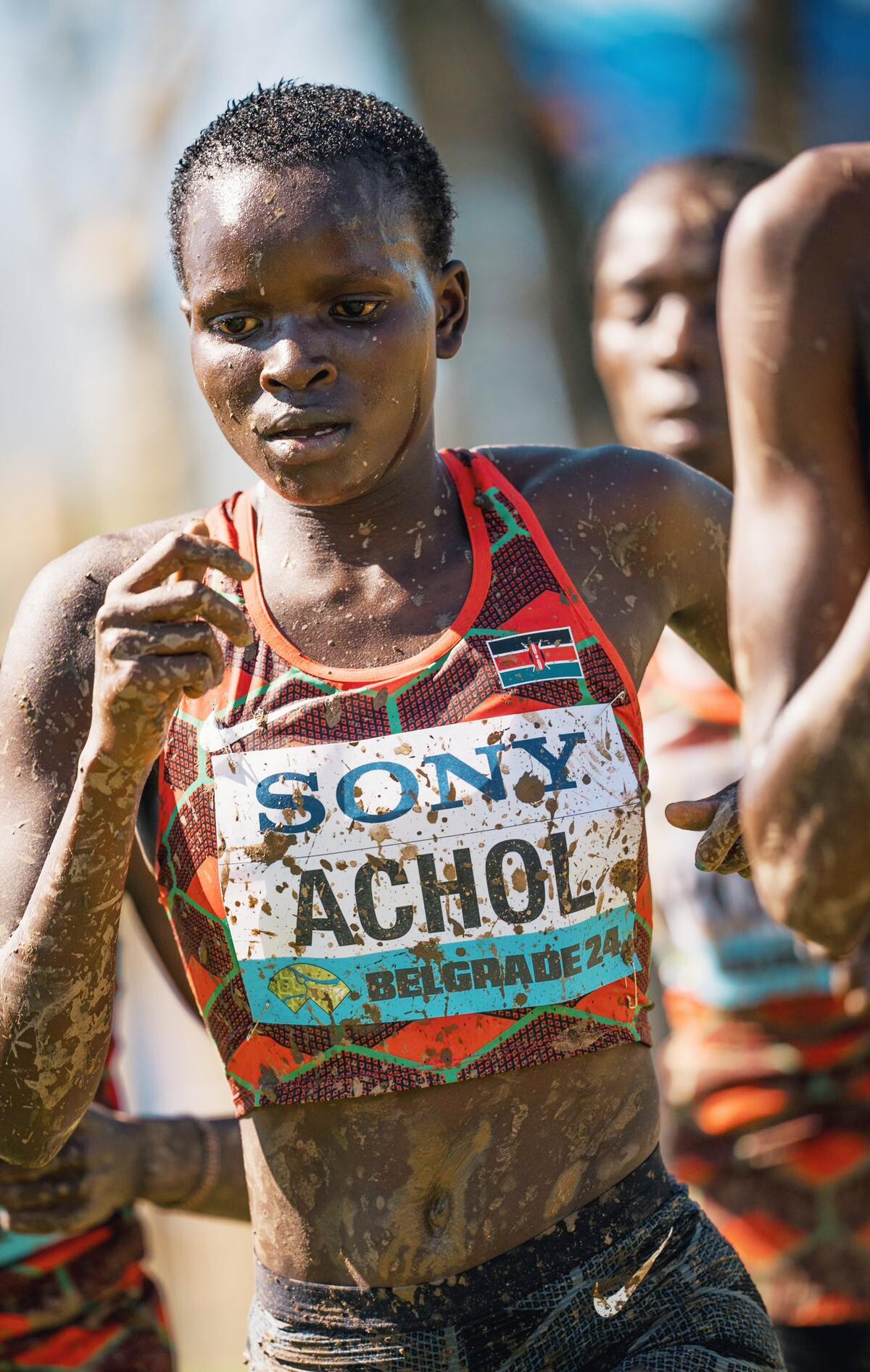
"I am very excited to be in Bengaluru for the first time for this incredible event, which has gained a worldwide reputation for being one of the best 10K races. I have heard so much about the events hosted in India and the running revolution they began nearly two decades ago.
"I am very much looking forward to being there and clock my best. The field of runners in the women's category is quite strong this year and I love a good challenge," expressed Anyango.
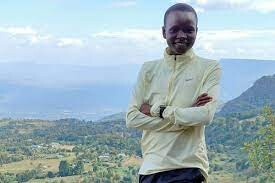
Five of her compatriots will also take the women's starting line-up in Bengaluru, with timings faster than the event course record (30:35).
Lilian Rengeruk Kasait (29:32), Faith Chepkoech (29:50), Loice Chemnung (29:57), Cintia Chepngeno (30:08), and Grace Nawowuna (30:27) make their team formidable. Anyango's inclusion in this epic line-up draws attention to a power-packed elite women's race to the title.Rengeruk and Chepngeno participated in the epic race in Valencia, while Chepkoech and Chemnung clocked their best in Castellon and Paris. Nawowuna did it in Lille.
Two Ethiopians, Aberash Minsewo, this year's Tata Mumbai Marathon winner, and Lemlem Hailu, 2022 World Indoor 3000m champion, add further shine to the women's start lists.Peter Mwaniki, Bravin Kipkogei spearhead elite men's line-upMeanwhile, in the elite men's lineup, Kenya's Peter Mwaniki Aila (29) entered with the fastest time, 26:59. He achieved this mark while finishing third earlier this year in Valencia.
In that process, Peter became the nineteenth runner in the World to run the 10K distance in under 27 minutes.His country-mate and 2019 African junior champion over 10,000m - Bravin Kipkogei Kiptoo - is credited with 27:02 in Madrid last year and along with Bravin Kiprop, who clocked an impressive 27:16 this February at Castellon, Spain, will keep the race interesting.
Two more Kenyans, Hillary Chepkwony, last year's third-place finisher, and Patrick Mosin, the runner-up in Castellon the previous year, are expected to provide the necessary boost to return fast timings here.Two young runners, John Wele from Tanzania and Boki Diriba from Ethiopia, may also pose a threat to the Kenyans.
The winners in the men's and women's categories will each take home USD 26,000. A course record bonus of USD 8,000 is also in the offing.
(04/12/2024) Views: 161 ⚡AMPTCS WORLD 10K BENGALURU
The TCS World 10k Bengaluru has always excelled in ways beyond running. It has opened new doors for people to reach out to the less privileged of the society and encourages them to do their bit. The TCS World 10K event is the world’s richest 10 Km run and has seen participation from top elite athletes in the world. ...
more...Sharon Lokedi: How the Kenyan marathon star is sketching her strategy for victory at Boston Marathon
Sharon Lokedi is aiming for victory at the Boston Marathon where she will be facing elite rivals.
2022 New York City Marathon champion Sharon Lokedi has rapidly ascended to the pinnacle of long-distance running with her sights firmly set on the 128th Boston Marathon.
Amidst a field brimming with talent, Lokedi's journey from her marathon debut to becoming a favorite in Boston illustrates not only her athletic prowess but also her unique approach to managing the pressures of elite competition.
"Before I get to a race, there’s so much tension and anxiety. I try to remain present," Lokedi shared as per Run.
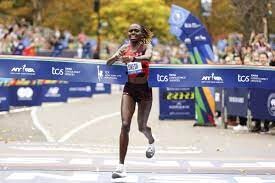
This practice, recommended by her sports psychologist in July 2023, has helped her maintain calm and focus, vital for someone whose career in running has been anything but typical.
Surprising herself and the athletic world, she clinched victory at her first marathon attempt in New York in 2022 with a time of 2:23:23, joining the ranks of debut winners in the storied race.
Despite facing an injury that sidelined her from the Boston Marathon last April she returned to the global marathon scene last November, securing a third-place finish in New York, a testament to her resilience and tenacity.
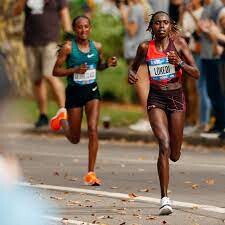
The 30-year-old Kenyan runner's story is a blend of innate talent and serendipity having never envisioned a professional career in athletics.
From her humble beginnings running at age 12 to training alongside Olympic champions in Kaptagat, Kenya, Lokedi's ascent in the sport is, by her own admission, "a miracle."
Training at altitudes close to 8,000 feet, Lokedi has pushed her limits, clocking upwards of 140 miles a week in preparation for Boston.
Under the guidance of her coach Haas, she has emphasized hill training, a crucial component for tackling the notoriously challenging Boston course.
"I think she’ll be in the mix," said Haas, highlighting Lokedi's diligent preparation and positive mindset.
Lokedi's connection to the running community, both in Kenya and her second home in Flagstaff, Arizona, has been a source of strength and inspiration.
The camaraderie she shares with competitors, including close friend and fellow Kenyan Hellen Obiri underscores a spirit of mutual respect and friendship that transcends rivalry.
"Racing with Sharon, it’s really good for me," Obiri remarked.
The Boston Marathon promises a historic showdown in the women's elite field, featuring luminaries such as Obiri, Tadu Teshome, Hiwot Gebremariam, and Edna Kiplagat, alongside promising American contenders like Emma Bates and Sara Hall.
"Sharon has been my good friend since 2019. She’s a lovely girl," Obiri added, highlighting the deep bonds formed between athletes at the highest levels of competition.
For Lokedi and Obiri, the Boston Marathon is not just another race, it is an opportunity to showcase their skills, support each other, and celebrate their friendship, irrespective of the outcome.
As she prepares to toe the line in Boston, her message is clear: "I know I’m strong. I want to come into the race knowing that anything is possible."
(04/11/2024) Views: 145 ⚡AMPby Festus Chuma
Boston Marathon
Among the nation’s oldest athletic clubs, the B.A.A. was established in 1887, and, in 1896, more than half of the U.S. Olympic Team at the first modern games was composed of B.A.A. club members. The Olympic Games provided the inspiration for the first Boston Marathon, which culminated the B.A.A. Games on April 19, 1897. John J. McDermott emerged from a...
more...four exercises to relieve tight quads
Combat tight quads in moments by adding these stretches to your running routine.
If you’re wrapping up a big block of training or have been charging up and down a lot of hills, there’s a good chance you’ll feel some quad tightness. By adding a few simple exercises into your weekly routine, those quads will be feeling brand new.
The quadriceps (there are four distinct muscles: the rectus femoris, vastus lateralis, vastus intermedius and vastus medialis) are responsible for extending the leg and helping with movements like walking, running and jumping. Quad tightness can result from various factors, including overuse, improper running mechanics and muscle imbalances. Since the quads and hip flexors work together during running, tightness in one area can affect the other, so it’s essential to incorporate exercises that target both the quads and the hips. These four exercises will help ease quad tightness while also addressing hip-related issues.
1.- Sissy squat
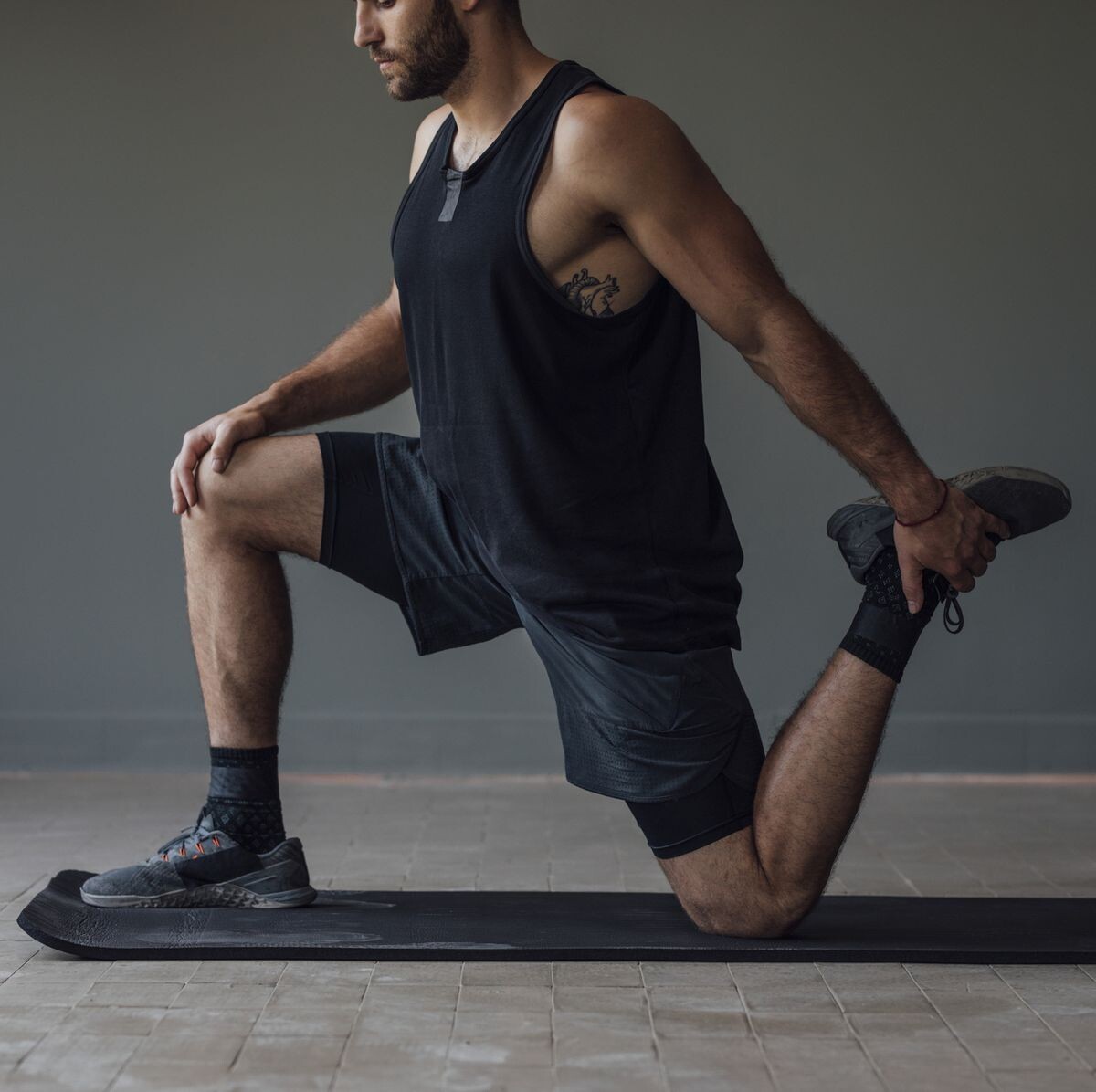
A sissy squat helps runners strengthen the quads and improve knee stability. (The sissy squat name is a homage to King Sisyphus from Greek mythology—who, as a punishment, was forced to push a boulder to the top of a mountain, on repeat, apparently creating great quads.) For this exercise, you’ll want to grab onto a wall or secure railing.
Stand with your feet shoulder-width apart. Shift your weight onto your heels and slowly lower your body by bending your knees, keeping your torso upright.
Continue lowering yourself until your knees are fully bent and your thighs are close to parallel with the floor. Push through your heels to return to the starting position, straightening your knees and returning to standing.
Work on being very controlled as you do this exercise—it takes practice! Focus on engaging your quadriceps throughout the exercise.

2.- Banded march
T00-tight hip flexors can lead to overloaded quads. The banded march helps loosen and strengthen both hip flexors and extensors.
Start by standing with feet hip-width apart, with a resistance band looped around your feet.
March in place by drawing your right knee up toward your chest (to a 90-degree angle), then returning to starting position.
Draw your left knee up to your chest, then continue to alternate as you pump your arms as if you’re running. Do 10 raises on each side to start, and work up to several sets.
3.- Couch stretch
You can also do this stretch using a ball, wall or any sturdy surface. Use a cushion or mat under your knee if you’re placing it on a hard surface, and make sure to keep your core engaged throughout the exercise.
Bend your left knee and place your shin along the back cushion of a couch (or a chair) with your toes pointed upward. Keep your left thigh in line with your body.
Place your right foot in front, aligning your knee above your ankle. Engage your core and glutes, and keep your hips square.
Hold for at least 45 seconds, then do the opposite side.
4.- 90/90 wipers
The 90/90 wipers exercise is a great way for runners to improve hip mobility and flexibility. Don’t force it—move within your comfortable range of motion.
Begin by sitting on the floor with your knees bent and your feet flat on the ground, creating a 90-degree angle at your hips and knees. Place your hands behind you for support and lean back slightly to maintain balance.
Slowly lower both knees to one side, keeping them bent at a 90-degree angle. Your feet should remain in contact with the ground throughout the movement.
Hold the stretch for a few seconds, feeling a gentle stretch in your hips and inner thighs. Return to the starting position and repeat the movement on the opposite side, lowering your knees to the other side.
Continue alternating sides for several repetitions, aiming to maintain smooth, controlled movements throughout.
Make sure you are always performing stretching and strengthening exercises after you have warmed up with some brisk walking or easy running, and try to do your strength-training sessions on days when you have also planned harder or faster running workouts. Allowing your easy days to be entirely devoted to rest and recovery will allow your body to heal and grow stronger.
(04/11/2024) Views: 131 ⚡AMPby Keeley Milne
Olympic champions to receive prize money for first time at Paris 2024 Games
Olympic champions will receive prize money for the first time this year after World Athletics announced gold medalists at the Paris 2024 Games would be paid $50,000 (£39,400) each.
Athletics is the first sport to financially reward its stars for success at the Olympics, which has stayed true to its amateur ethos by never offering prize money.
Winners of all 48 athletics events will receive a payout from the world governing body, which says it will extend the benefit to silver and bronze medalists from the LA 2028 Olympics.
“The introduction of prize money for Olympic gold medalists is a pivotal moment for World Athletics and the sport of athletics as a whole, underscoring our commitment to empowering the athletes and recognizing the critical role they play in the success of any Olympic Games,” said World Athletics president Lord Coe.

“While it is impossible to put a marketable value on winning an Olympic medal, or on the commitment and focus it takes to even represent your country at an Olympic Games, I think it is important we start somewhere and make sure some of the revenues generated by our athletes at the Olympic Games are directly returned to those who make the Games the global spectacle that it is.”
The size of the payouts is modest compared to those on offer elsewhere in sport – the average salary of a Premier League footballer is around £3m, for instance.
But the move is nonetheless a milestone for the Olympics, and recognition that it will be increasingly difficult to justify asking the stars of its core events to compete for glory alone.
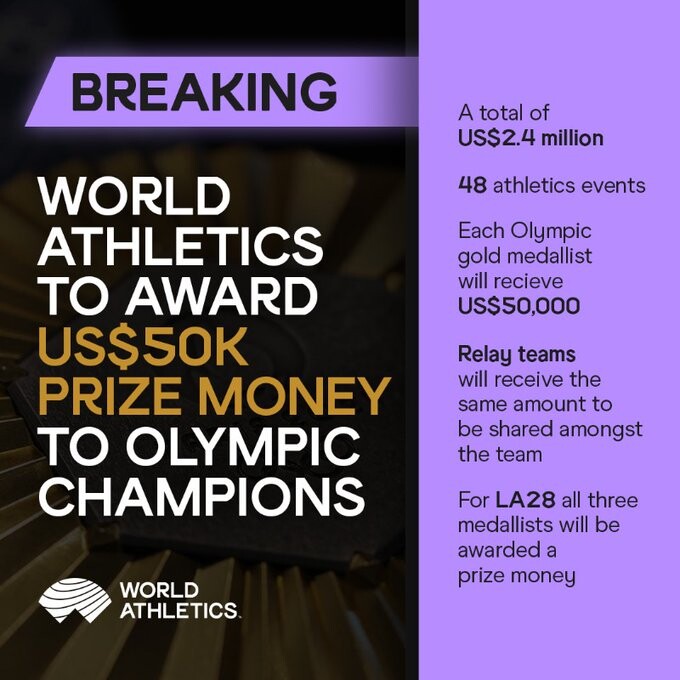
Many Olympic hopefuls rely on funding grants and personal sponsorship deals to train full-time, while others have to retain careers in order to make ends meet.
Meanwhile, athletes are being offered million-dollar incentives to defect to the doping-friendly Enhanced Games, a project Coe has derided as “bollocks”.
While winners of individual athletics events at Paris 2024 will receive $50,000, that sum will be divided up among team members for winners of the relay races.
“This is the continuation of a journey we started back in 2015, which sees all the money World Athletics receives from the International Olympic Committee for the Olympic Games go directly back into our sport,” Coe added.
“We started with the Olympic dividend payments to our Member Federations, which saw us distribute an extra $5m a year on top of existing grants aimed at athletics growth projects, and we are now in a position to also fund gold medal performances for athletes in Paris, with a commitment to reward all three medallists at the LA28 Olympic Games.”
(04/10/2024) Views: 145 ⚡AMPParis 2024 Olympic Games
For this historic event, the City of Light is thinking big! Visitors will be able to watch events at top sporting venues in Paris and the Paris region, as well as at emblematic monuments in the capital visited by several millions of tourists each year. The promise of exceptional moments to experience in an exceptional setting! A great way to...
more...Evans Chebet still hopeful of making marathon team ahead of Paris 2024 Olympics
Two-time Boston Marathon champion Evans Chebet hopes to be selected in the final squad of the men's marathon ahead of the Paris 2024 Olympics despite not making it to the Athletics Kenya squad that was handed over to the National Olympic Committee of Kenya.
The 2022 New York City Marathon champion Evans Chebet is still hopeful of making the cut to the Olympic marathon team ahead of the Paris 2024 Olympic Games despite not being included in the previous list.
Chebet, the two-time Boston Marathon champion, however, noted that he will accept the decision from the National Olympic Committee of Kenya. Athletics Kenya already handed the list of five athletes to NOC-K who will later on trim down the number to three.
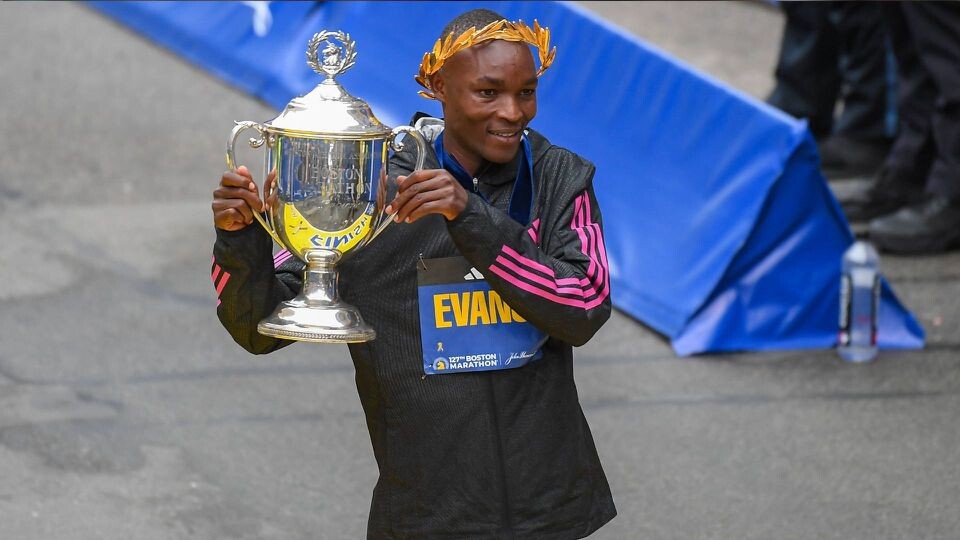
Defending champion Eliud Kipchoge leads the field and he will be joined by the reigning Tokyo Marathon Benson Kipruto, the 2022 Abu Dhabi Marathon champion Timothy Kiplagat, the 2023 Prague Marathon champion Alexander Mutiso, and Vincent Kipkemboi who finished second at the 2023 Berlin Marathon.
"I hope to make it to Kenya's Team for the Paris Olympics, but again, if the selectors choose someone else, I will respect their decision,” Chebet told Sports Brief.
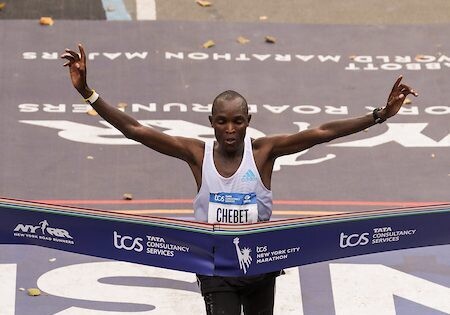
In order to prove that he is capable of bagging a medal at the global bonanza, Chebet seeks to win his third successive title at the Boston Marathon, after winning two titles in 2022 and 2023.
He admitted there will be tough competition but the Kenyan is ready for the challenge and he explained that his body is feeling great. Chebet withdrew from his title defense at last year’s New York City Marathon due to an injury and has not raced since.
"The competition is tough. I am the person with a target on his back. Every other athlete will come with the idea of beating me and denying me another chance to win the title, but I feel good and I am ready," Chebet added.
(04/10/2024) Views: 145 ⚡AMPby Abigael Wuafula
Paris 2024 Olympic Games
For this historic event, the City of Light is thinking big! Visitors will be able to watch events at top sporting venues in Paris and the Paris region, as well as at emblematic monuments in the capital visited by several millions of tourists each year. The promise of exceptional moments to experience in an exceptional setting! A great way to...
more...Gerda Steyn eyes historic fifth victory at Two Oceans Marathon
In the world of ultra-marathon running, few names resonate as powerfully as Gerda Steyn’s. The South African athlete, whose journey from a relatively unknown quantity surveyor to a world-renowned ultra-marathoner is nothing short of inspirational, is on the cusp of attempting her fifth consecutive title at the prestigious Two Oceans Marathon.
Steyn’s initial foray into the marathon scene was modest, with a debut at the Comrades Marathon that, while impressive, flew under the radar. However, her entry into the Two Oceans Marathon in 2016 hinted at the potential that lay within. Despite finishing 30 minutes behind the winner, Steyn’s time was a harbinger of the greatness that was to unfold in the years to come.

By 2018, Steyn had shattered any notions of being an underdog by clinching her first Two Oceans victory with a stunning performance that etched her name into the annals of the marathon’s history. Her subsequent victory in 2019, where she narrowly missed breaking a 30-year-old record, solidified her status as a force to be reckoned with.
The pandemic may have delayed her pursuits, but Steyn returned with a vengeance in 2022, breaking the coveted 3:30 barrier and setting a new record, a feat she outdid the following year with an even more impressive time. These victories were not just personal triumphs but moments of national pride, bringing her family and supporters immense joy.
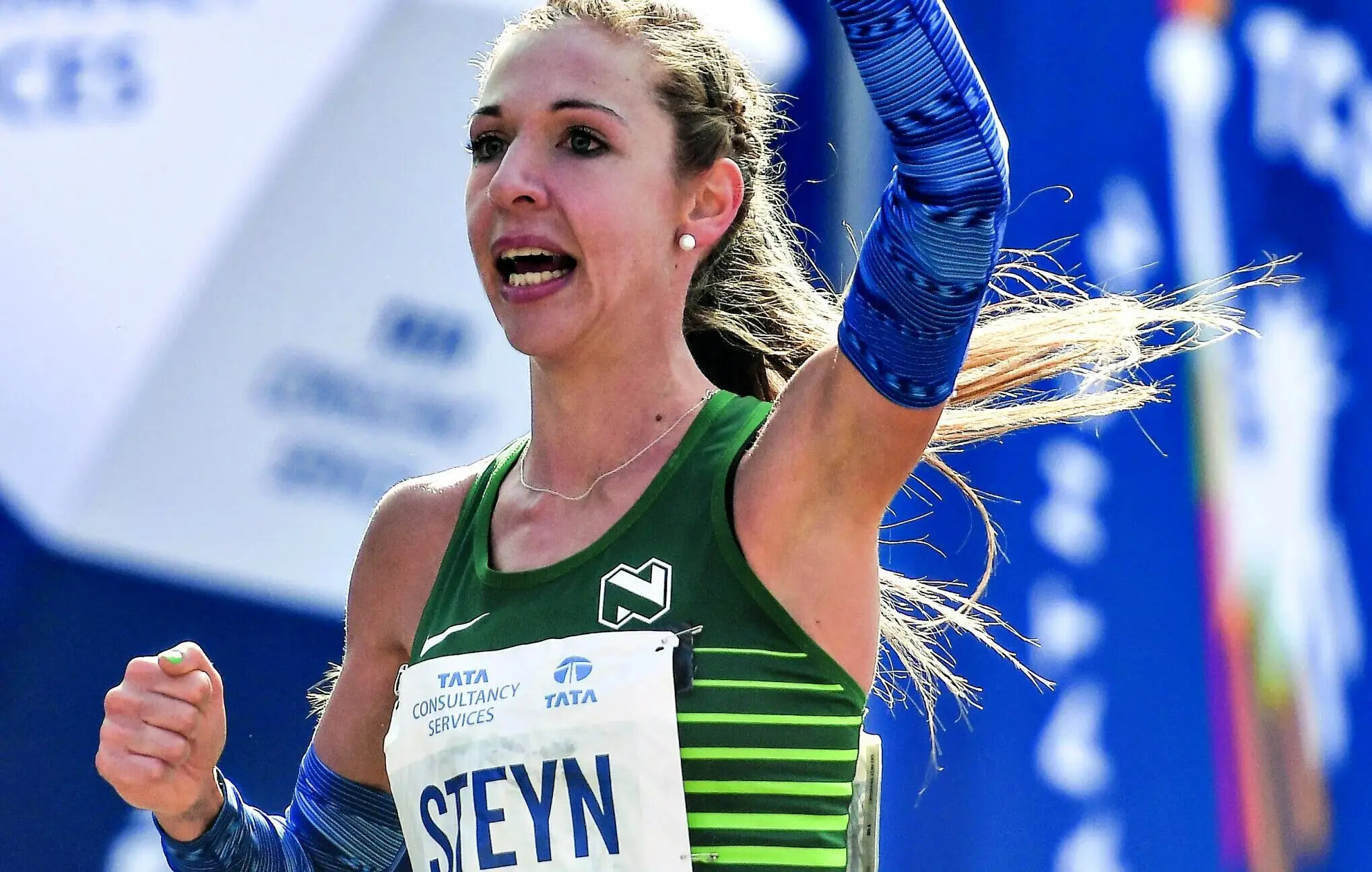
As Steyn gears up for her fifth title attempt, her focus remains as unwavering as ever. Her recent victories at the Vaal Marathon and the Om Die Dam 50km, both in record time, indicate she is in prime form. Yet, Steyn’s humility shines through, as she prefers to highlight the role of her club, Phantane, and its founder, Mdu Khumalo, in her journey. Her influence on the club and its athletes, especially the women, underscores the impact of her success beyond her personal achievements.
The Two Oceans Marathon is not just a race for Steyn; it’s a testament to her dedication, resilience, and the support network that has been instrumental in her rise. As she stands on the precipice of making history once again, the marathon world watches in anticipation, knowing that Steyn’s legacy is one of not just breaking records, but of inspiring a generation of runners to dream big and aim higher.
(04/10/2024) Views: 172 ⚡AMPTwo Oceans Marathon
Cape Town’s most prestigious race, the 56km Old Mutual Two Oceans Ultra Marathon, takes athletes on a spectacular course around the Cape Peninsula. It is often voted the most breathtaking course in the world. The event is run under the auspices of the IAAF, Athletics South Africa (ASA) and Western Province Athletics (WPA). ...
more...Jamaican athlete contemplates quitting sport following two-year doping ban
Jamaican runner Tiffany James-Rose has opened up on potentially quitting competitive athletics after she was slapped with a two-year ban by the Athletics Integrity Unit.
The 2016 World Under-20 champion Tiffany James-Rose, a Jamaican 400m runner, has been left in a state of dilemma as she thinks about her future in the sport.
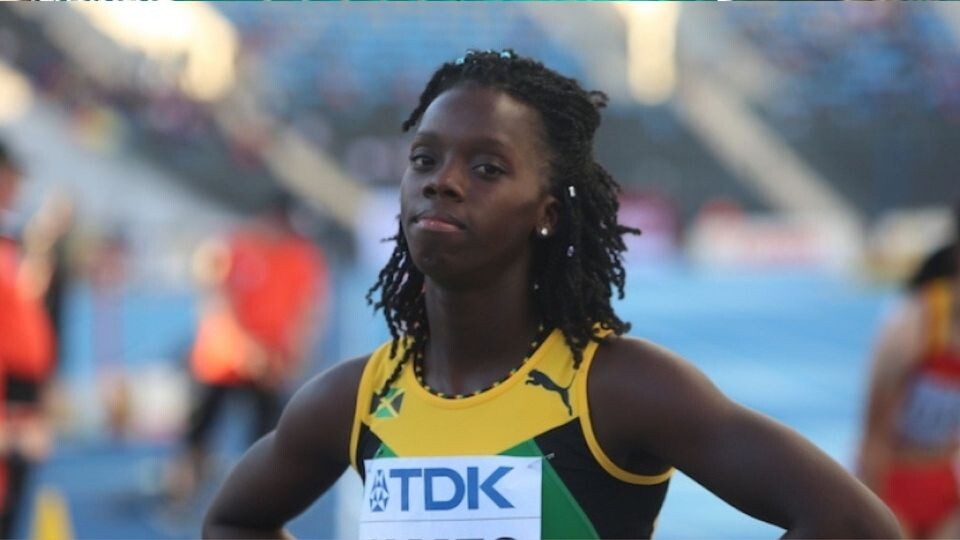
This comes after she was slapped with a two-year ban by the Athletics Integrity Unit (AIU) for a whereabouts violation with her ban commencing on November 2023 and will extend to November 2025.
The suspension came about after James-Rose missed out-of-competition tests within 12 months, leading to a violation of anti-doping regulations. As per SportsMax, the circumstances surrounding the missed tests are tied to her pregnancy and at the time James-Rose was four months pregnant when she missed two of her three tests.
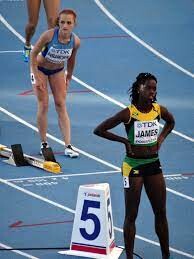
“I found myself in a situation where I had to be making trips to neighbouring states for emergency visits because of my pregnancy and, unfortunately, it happened on the two times when I was there," she told Sportsmax. TV.
“My husband’s father was here when they knocked on the door and I wasn’t here. It was like ‘Why did it have to happen on the two days that I did a morning visit and not on Sunday or something like that.”
James-Rose disclosed that she had difficulties with the immigration process as she sought to relocate to the United States.
Meanwhile, despite her love for track and field, James-Rose is enjoying motherhood and is uncertain about her future in competitive athletics.
"I think I will have to make that decision by the end of this season (2024) because even though I can't compete, I want to get my mind and body ready," she added.
“I can’t really say for sure. I am extremely happy. I am loving it (motherhood). Track and field is my first love but I think I have found true love and right now I am just living in the moment of motherhood and just enjoying the moments with my son and my husband for now.
“I mean, the suspension ends in November of 2025 so time will tell, I don’t know for sure what my decision will be. It’s (track and field) something I would love my son to grow and see me doing so it’s definitely a decision to be made,” she said.
(04/10/2024) Views: 139 ⚡AMPby Abigael Wafula
Paris Olympics to feature vibrant purple track for athletics events
A new look is coming to athletics at this summer’s Olympic Games in Paris. The track at the Stade de France will be a vibrant purple instead of the traditional terracotta color, which organizers hope will stand out to a global audience and produce record performances for the world’s best athletes.
Italian rubber manufacturer Mondo has begun the production of the 17,000-square-meter purple track, which will be packed and transported to the French capital in the coming weeks for the start of the Olympic Games in July. The Paris Olympic organizing committee chose the color to honor the Games being the first to achieve full gender parity on the field of play.

The track will be made of three colors: two shades of purple (one a lighter lavender, and the other a darker shade), and grey, which will be used on the outer side of the track. Mondo has supplied track and field surfaces for the last 10 Olympic Games, dating back to the 1984 Games in Los Angeles.
Following in the footsteps of the Olympic medals for 2024, the track will be made from nearly 50 per cent renewable or recycled materials, which is 30 per cent higher than for the London Olympics in 2012.

Mondo claims the purple track will be faster than the one used at the Tokyo 2020 Olympics, where three world records were broken, including the men’s and women’s 400m hurdles set by Norway’s Karsten Warholm and American Sydney McLaughlin-Levrone.
“We have changed the design of the cells in the lower layer of the track compared to what was used in Tokyo,” said Maurizio Stroppiana, vice president of Mondo’s sports division to Olympics.com. “This reduces the loss of energy for the athletes and returns it at the best possible point in their movement.”
The cost of the purple track is estimated to be around three million euros (CAD $4.5 million). Forty-six of the 48 athletics events will be held on this track (the marathon and the race walk are held on a road course). The race walks will be contested at Pont d’Iena, and the marathon events will begin at the Hôtel de Ville (city hall) and end at Les Invalides, with runners traversing many of the city’s most iconic sites and Olympic venues throughout the historic French revolution route.
(04/09/2024) Views: 156 ⚡AMPby Marley Dickinson
Paris 2024 Olympic Games
For this historic event, the City of Light is thinking big! Visitors will be able to watch events at top sporting venues in Paris and the Paris region, as well as at emblematic monuments in the capital visited by several millions of tourists each year. The promise of exceptional moments to experience in an exceptional setting! A great way to...
more...Marathon debutante Fikir leads Ethiopian double in Paris
Mestawut Fikir excelled on her debut at the distance by winning the Schneider Electric Paris Marathon in 2:20:45, while compatriot Mulugeta Uma made it an Ethiopian double by taking the men’s title in 2:05:33 at the World Athletics Elite Label road race on Sunday (7).
In a close finish, Fikir won by three seconds from fellow Ethiopian Enatnesh Tirusew, who was also making her marathon debut. Kenya’s Vivian Cheruiyot, the 2016 Olympic 5000m champion and four-time world champion on the track, was third in 2:21:46 in what was the 40-year-old’s first marathon in five years.
Uma won the men’s race by 15 seconds from Kenya’s Titus Kipruto. Elisha Rotich, the course record-holder and 2021 winner, was third this time in 2:06:54.
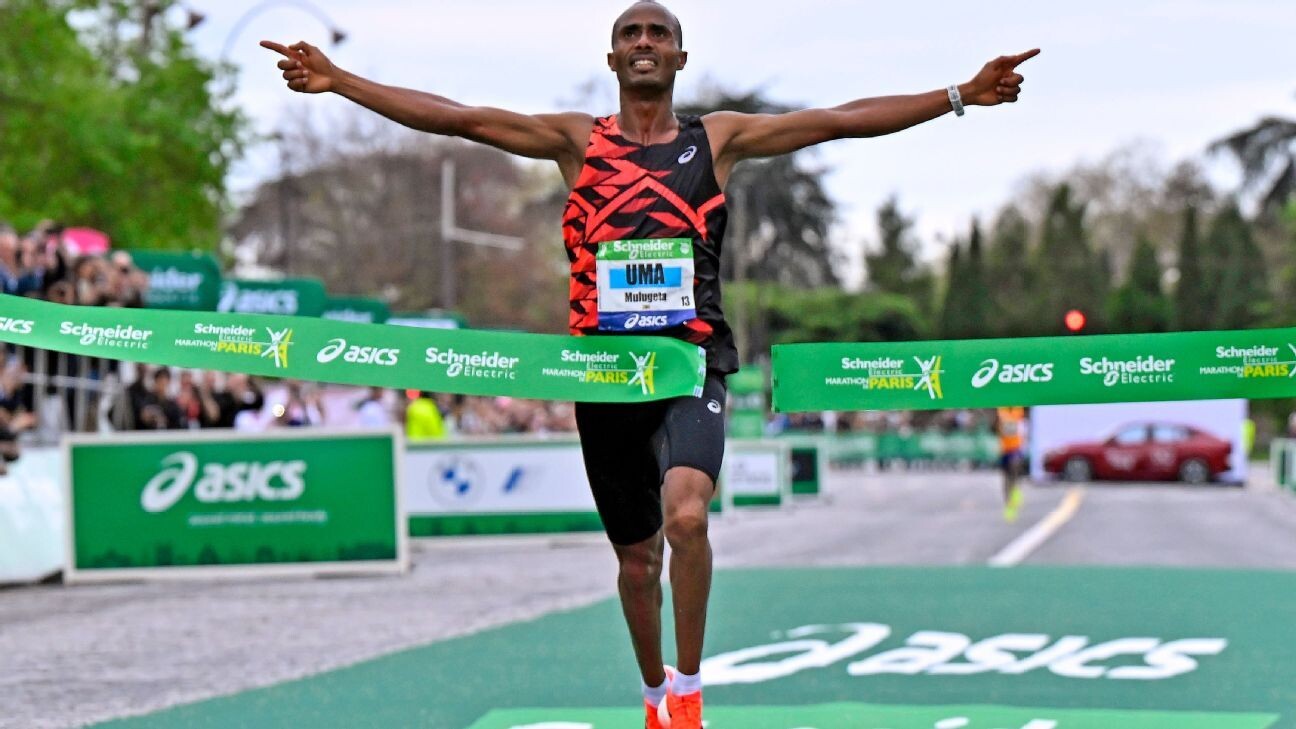
A pack of about 10 women ran together during the early stages, with Ethiopia’s Rahma Tusa leading them through 10km in 33:23. That pack had reduced to six women by the time they reached half way in 1:10:11, with Tusa still leading from Tirusew and Fikir while Cheruiyot bided her time at the back of the pack.
By 30km, Cheruiyot had fallen about 20 seconds behind the leaders with Tusa still pushing the pace out in front. But the long-time leader started to fade a few kilometers later as Fikir and Tirusew made a break.
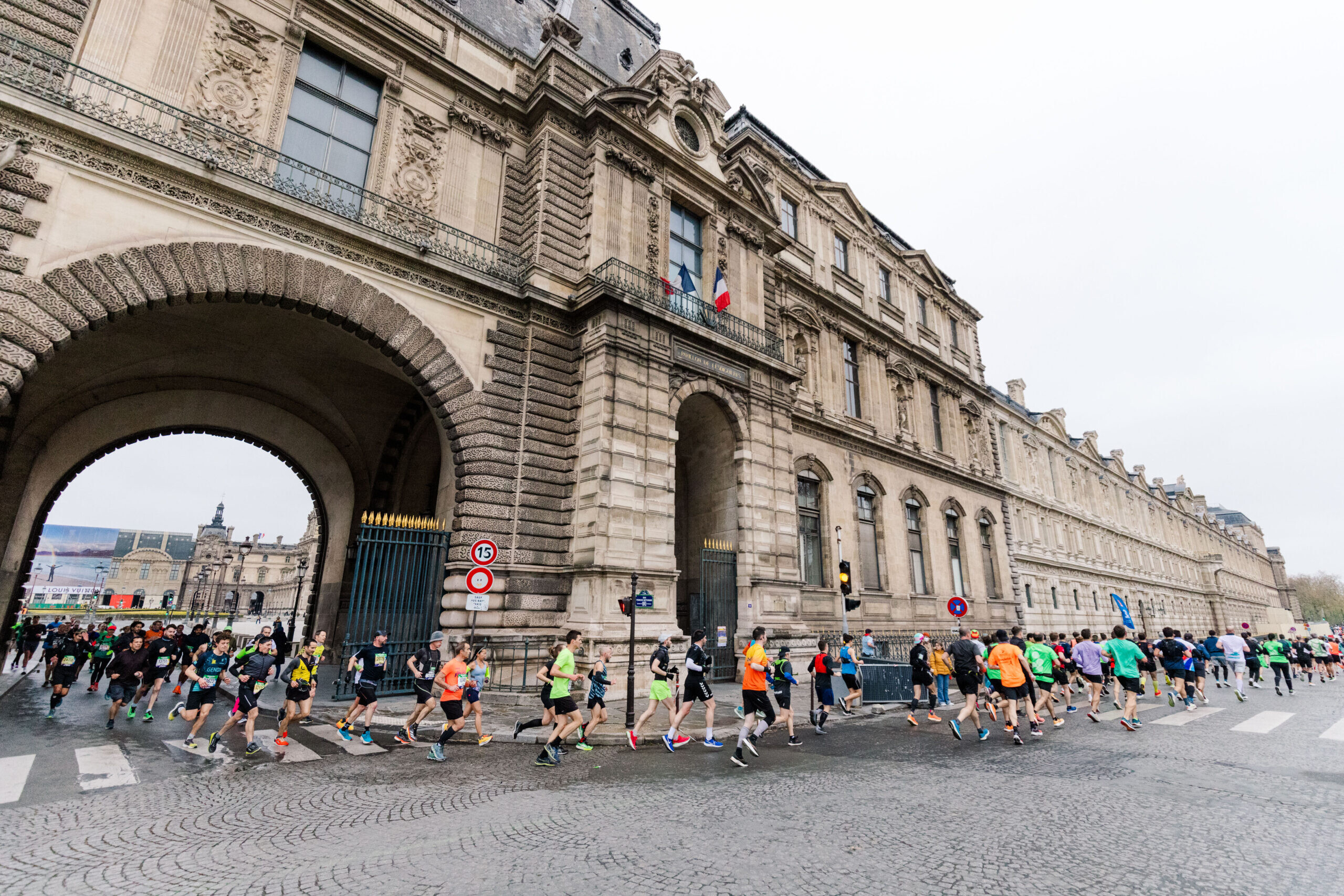
The Ethiopian duo continued to run side by side through the closing kilometers while Cheruiyot rallied back and made her way up into third place. In the final push, Fikir broke away from her compatriot to win in 2;20:45, while Tirusew claimed second place in 2:20:48. Cheruiyot crossed the line 58 seconds later.
The men’s race played out in similar fashion, the large lead pack going through 10km in 29:08 and half way in 1:02:09, at which point they were on track to challenge Rotich’s course record of 2:04:21.
The pack became strung out over the course of the next 10 kilometers with Kipruto leading them through 30km in 1:28:27, closing followed by Uma and his fellow Ethiopians Deso Gelmisa and Dejane Megersa.
Kipruto continued to lead through 35km, at which point he had just three others for company: Gelmisa, Uma and Kenya’s Bethwell Kipkemboi. Uma then started to pick up the pace and overtook Kipruto with just a few kilometers to go. Further back, Rotich was making his way through the field.
Uma continued to extend his lead over Kipruto in the closing stages and he went on to win in a PB of 2:05:33, finishing 15 seconds ahead of Kipruto. Rotich passed a fading Kipkemboi to take third in 2:06:54.
(04/08/2024) Views: 164 ⚡AMPby World Athletics
Schneider Electric Paris Marathon
The Schneider Electric Marathon de Paris offers a unique opportunity to make the city yours by participating in one of the most prestigious races over the legendary 42.195 km distance. The Schneider Electric Marathon de Paris is now one of the biggest marathons in the world, as much for the size of its field as the performances of its runners....
more...Edwin Kurgat, Laura Galvan defend Carlsbad 5000 championships on race’s new course
Reigning champions Edwin Kurgat of Kenya and Laura Galvan of Mexico successfully defended their titles in the Men’s Elite and Women’s Elite races to cap Sunday’s Carlsbad 5000.
The annual road race in Carlsbad Village, with events throughout the day for runners of different ages and skill levels, featured an updated course that benefited from the picturesque weather.
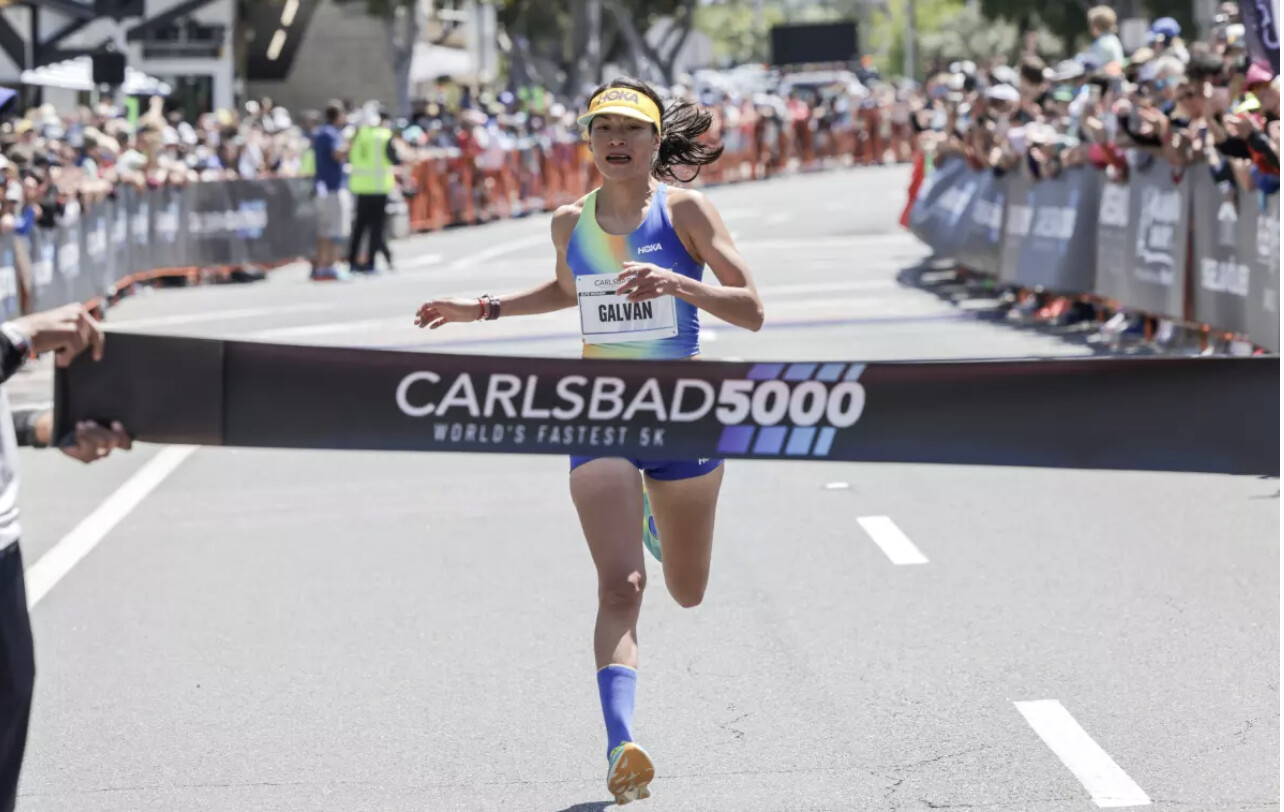
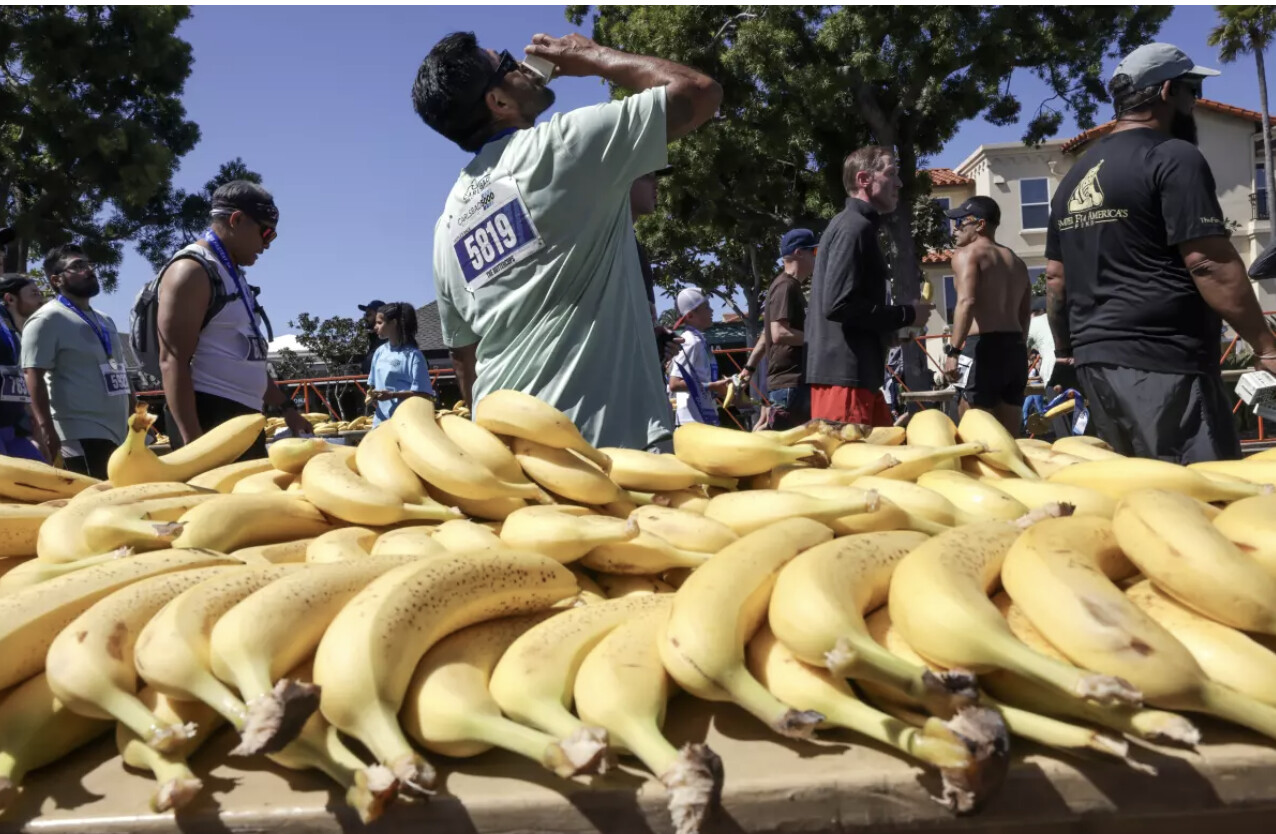
Under blue skies with only wispy clouds, competitors ran parallel to the coastline on Carlsbad Boulevard. They were cheered on both by spectators there to take in the “World’s Fastest 5K” and the beachgoers who became impromptu fans.“The new course is way fun,” said Kurgat. “You don’t have to think about much, so I like it better than last (year’s) course.”
Kurgat’s appreciation for the course manifested in a final time of 13:46.11. His 4:26 pace edged him ahead of New Zealand’s Matt Baxter, who finished second at 13:47.74.
“I felt surprisingly good throughout the entire race,” said Baxter, who ran a 4:27 pace. “I just couldn’t quite hold onto Edwin as we came up that last hill … When I saw him in sights coming through his home stretch, I was giving it everything, because I knew if I was even close to Edwin, it was going to be a day I could be happy with.”
With a mile remaining and the runners coming up the slope, the 2019 NCAA cross-country champion from Iowa State Kurgat gained separation.
Kurgat and Baxter pulled away from American Ben Veatch — who, at Indiana University set the USATF American Junior indoor 5K record with a since-broken 13:57.27. Veatch finished third on Sunday with a time of 14:09.39.
His repeat first-place performance at the Carlsbad 5000 continued an impressive 2024 for Kurgat, who in January ran a 12:57.52 in the indoor 5,000 meters at the John Thomas Terrier Classic in Boston.
An Olympic-qualifying time to his credit, Kurgat’s attention for 2024 turns to Paris and the Oymmpics.
“It’s a big year, Olympic year. I wanted to come here, have some fun, take a quick break and I wanted to use (Carlsbad) as part of my training,” Kurgat said.Likewise, fellow repeat Carlsbad 5000 champion Galvan ran an Olympic-qualifying time during the World Championships last August in Budapest, Hungary.
A native of La Sauceda, Guanajuato, Galvan will represent Mexico in Paris for the 5,000 meters. She has designs on qualifying for the 10,000, as well.
Ahead of competing for the nation this summer, onlookers at the Carlsbad 5000 waved Mexican flags for Galvan on Sunday.
“I really like the atmosphere,” she said. “It was crazier than last year because last year, we had many turns (on the course) ... The crowd was really, really amazing.”An enthusiastic crowd made for a welcoming environment to Galvan amid the intensity of Olympic preparations.
“Stress builds up. Coming here to a race like this makes it fun,” Galvan said. “I said, ‘If I win, great. If I don’t, it’s fine.’ Because what I wanted to do as much as winning was having a good race.”Galvan accomplished her goal of running a strong race, and winning again came with that.
She finished with a time of 15:19, 20 seconds ahead of second-place finisher, Marissa Howard. Carrie Verdon came in third at 15:49.
Each champion’s successful defense ahead of their respective pursuits of Olympic success provided fitting punctuation to an all-around idyllic spring North County day.
San Diego running legend Meb Keflezighi, a part-owner of the race, summed it up this way:
“Great turnout from the crowd, great turnout from the participants and perfect weather.”
(04/07/2024) Views: 130 ⚡AMP
by Kyle Kensing
Russ Cook (aka the Hardest Geezer) has just become the first person to run the entire length of Africa
Russell Cook, the man nicknamed "Hardest Geezer", has successfully run the full length of Africa, crossing the finish line in Tunisia after 352 days.
Before he set off on the mammoth challenge to run the entire length of Africa, he said he hoped to look back at his life and have no regrets.
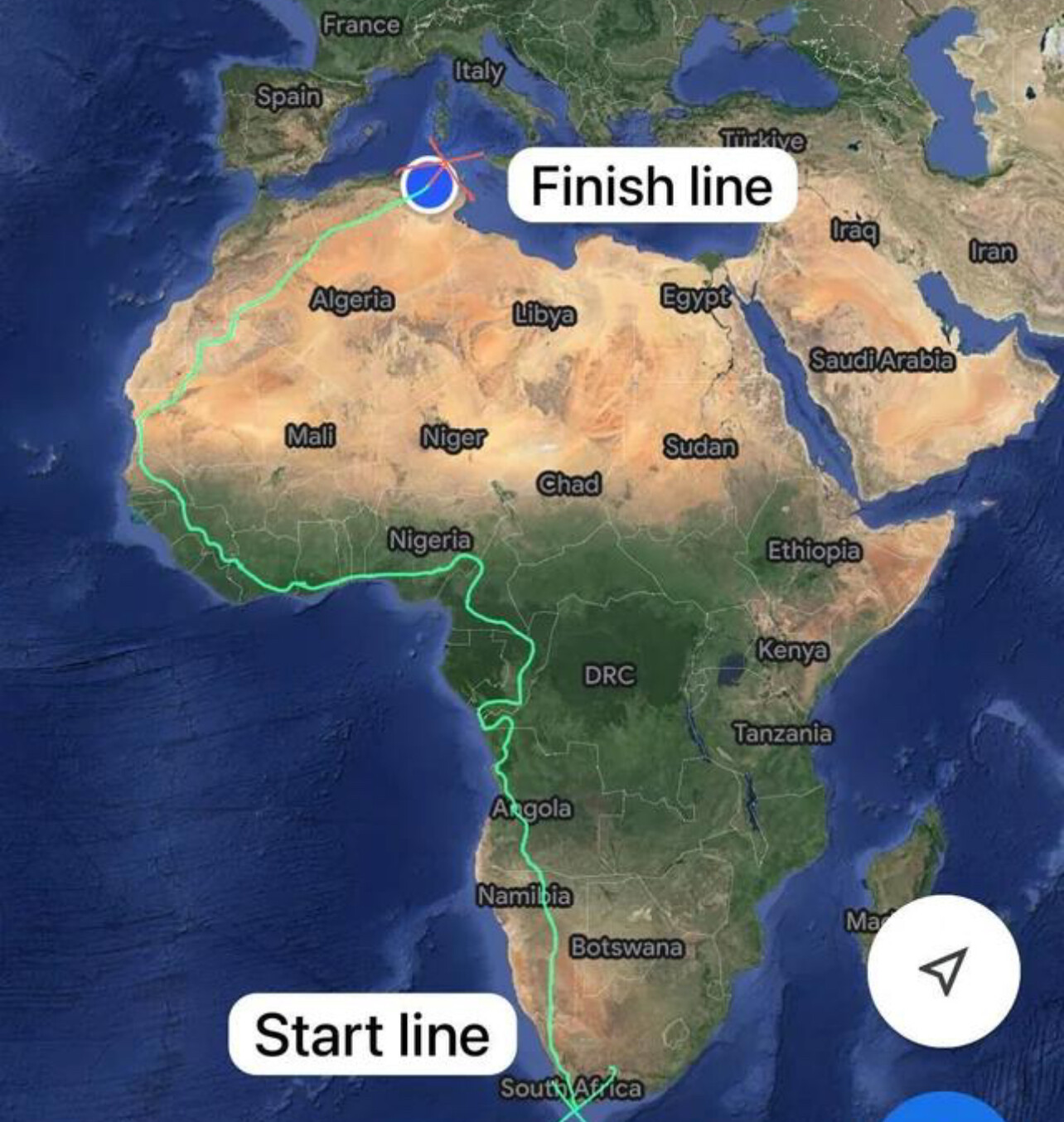
The 27-year-old from Worthing, West Sussex, said he had struggled with his mental health, gambling and drinking, and wanted to "make a difference".
After running through 16 countries, he has raised in excess of £700,000 for charity and has completed his final run.
As he crossed the finish line at about 16:40 BST in Ras Angela, Tunisia, Mr Cook was greeted by a shouting crowd, with many chanting "geezer".
"I'm pretty tired," he told reporters and in a post on X, formerly known as Twitter.
Mr Cook told those who had been following his journey to the finish line: "Mission completed."
Mr Cook initially planned to run 360 marathons in 240 days, with no rest days
A lot has changed since Mr Cook set off from home in February 2023.
His initial plan to run from Tunisia to South Africa, completing 360 marathons in 240 days with no rest days, was soon halted by a lack of an Algerian visa - a hindrance that would later resurface.
But after a last-minute switch, he set off on foot from South Africa's most southerly point on 22 April - a journey that would take him through cities, rainforests, mountains and the Sahara Desert.
Mr Cook and his team had cameras, phones, cash and passports stolen in Angola
After ticking off South Africa and Namibia in 50 days, Mr Cook encountered his first major setback - an armed robbery.
He and his support team had cameras, phones, cash, passports and visas stolen in Angola on 24 June.
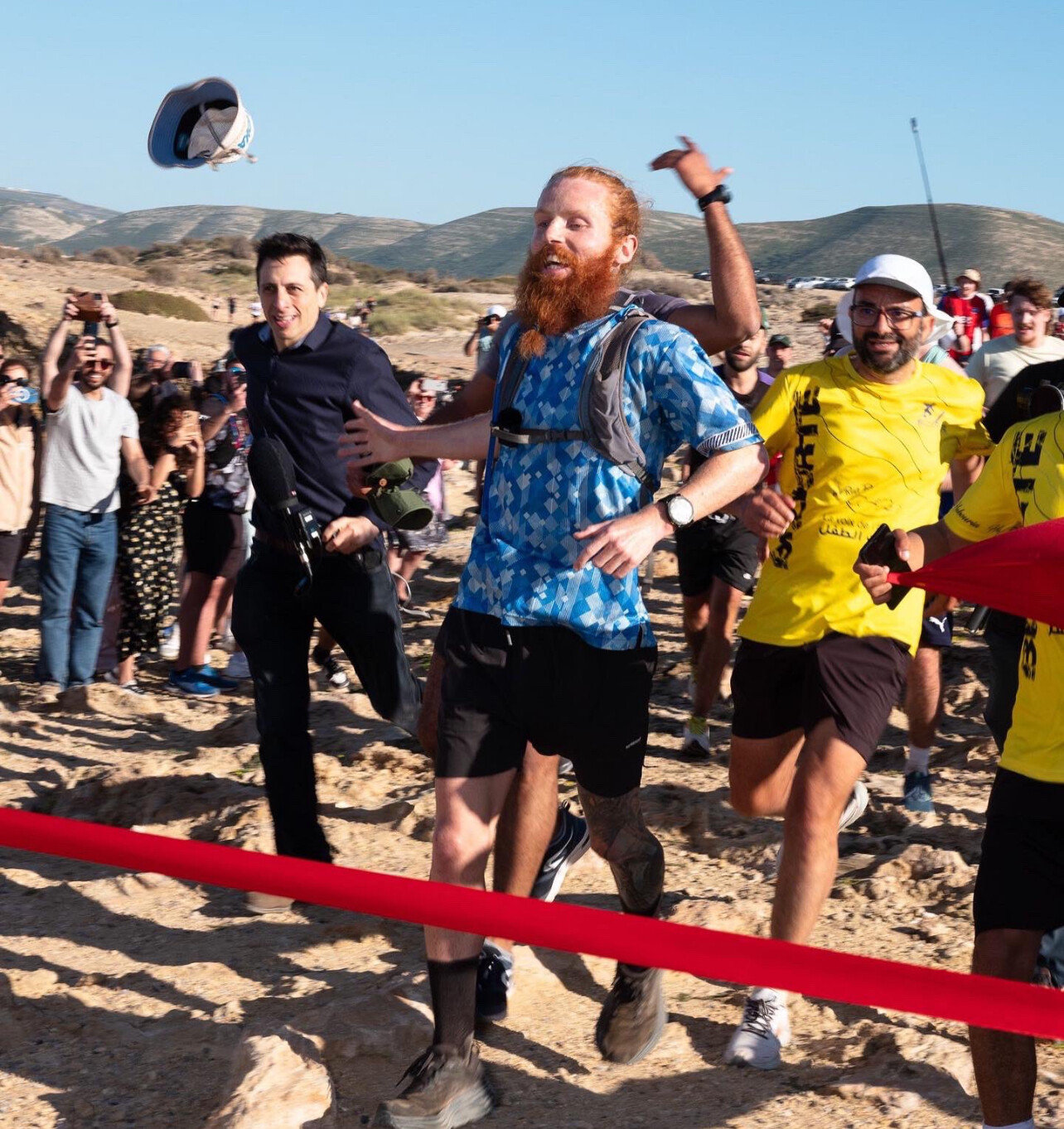
However, as with many stumbling blocks he would face throughout the challenge, the ultrarunner vowed to soldier on.
Health scares
Consistently running more than a marathon a day began to take its toll.
After some minor tummy troubles in the early weeks, he was forced to take his first rest day after doctors found blood and protein in his urine on day 45.
But it was recurring back pain that caused the most concern.
On day 200, Mr Cook was forced to reduce his mileage and intensity at the request of a doctor in Nigeria - even missing consecutive days on day 205 and 206.
But in true Hardest Geezer style, he was not to be stopped.
He said: "I took a couple of days to get some scans. No bone damage so figured the only option left was to stop mincing about like a little weasel, get the strongest painkillers available and zombie stomp road again."
Visa issues
After overcoming everything in his path, it was a single piece of paper - an Algerian visa - that cast doubt over the entire challenge on day 278.
Mr Cook was forced to halt while he waited to find out his fate as to whether he could secure permission to cross the border into Algeria from Mauritania.
"If we don't get the visas, then it is game over," he said at the time.
His public appeal video on X, formerly Twitter, was seen by 11 million people - even catching the attention of the site's owner Elon Musk, as well as MPs Tim Loughton and Alexander Stafford and the Home Office.
The increased attention on the challenge eventually paid off as the UK's Algerian embassy announced he would receive a courtesy visa on the spot.
The final stretch
After the setbacks, all that separated Mr Cook and the finish line was the small task of the Sahara Desert.
The tarmac roads ran out, as did the signal and any signs of civilisation. But an end date was set: 7 April, 2024.
Ramping up his mileage to make up for lost time, Mr Cook made the decision to run through the night due to the intense daytime heat and sandstorms.
Party time
Mr Cook finished running the length of Africa on 7 April
Months turned into weeks, and weeks turned into days.
Finally, on Sunday afternoon April 7, 2024, Mr Cook laced his trainers one last time - at least for now - as he set off for Tunisia's most northerly point.
Joined by supporters from across the world for the final marathon, Mr Cook completed the challenge.
The celebrations will go long into the night - helped by a finishing party performance by British punk band Soft Play, formerly Slaves, at a hotel in Bizerte.
And the Hardest Geezer will finally get his hands on the one thing he has been craving since day one - a strawberry daiquiri.
(04/07/2024) Views: 193 ⚡AMPby Christian Fuller BBC News, South East
Another Kenyan clean sweep at Absa Gqeberha 10K
Another race, another Kenyan clean sweep! What’s new as the East Africans continue to show their dominance in road running circles with displays that leave their opponents wondering just what it is they should do to catch up?
Nothing really, except that some South African runners were left lamenting the presence of their adversaries from the east despite their having earlier welcomed it as good for competition.
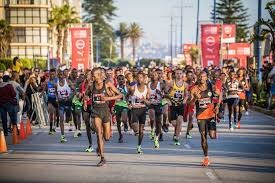
Vincent Largat and Diana Chepkorir reigned supreme in the men and women’s races respectively to be crowned champions of the Absa Run Your City Gqeberha 10K in windy conditions on Sunday morning.
It was a result similar to the one from the inaugural race in the Friendly City last year in which the Kenyan duo of Daniel Ebenyo and Fridah Nedina reigned victorious.
While Chepkorir started the race as favourite given her stellar PB of 29:56 ran in Castellon, Spain in February, Largat came out of left field to stun a confident group of South African runners who were out to run fast times.
Chepkorir ran home in a fairly good time of 31:15 ahead of Nancy Sang (31:39) and Ethiopian Selam Gebre (31:42) – with the three runners swelling their bank accounts by R30 000, R25 000 and R20 000 respectively.
The first South African woman home was Glenrose Xaba who finished way back in sixth place in a time of 33:04.Ahead of her in fifth place was Maxed elite Running Club’s Blandina Makatisi who broke Lesotho’s national record by a mere second in running a 32:05.
Such had been the low profile kept by Largat that he was not part of the elite men’s pre-race conference on Friday – so much so that the locals lamented the absence of the east Africans.
They did not know what hit them though as Largat pulled the proverbial rug from underneath their feat in a race that was tight until about the sixth kilometre when the top four – Largat, Elroy Gelant, Precious Mashele and Thabang Mosiako – broke away from the rest.
Fast finish
Largat proved to have a better kick at the end to breast the finish tape in a time of 28:01. National record holder Mashele appeared set for yet another runners-up berth as he did last year when he set the 27:35 mark only to be pipped at the finish by his Boxer Athletic Club teammate Gelant – the duo finishing just two seconds apart in 28:17 and 28:19.
Local boy Mosiako, who had been billed as the favourite, was fourth in 28:30 and surprisingly lamented the windy conditions as not being conducive to a good run. And to think there had been talk of him being at an advantage given he knows the route and is used to the conditions of his homeground.
The ‘slow’ race ensured that none of the local runners got to bank any of the incentives put aside for them for either breaking the national record or dipping under particular fast times.
All is not lost though, with the series still having four more races to go. Next up is the Run Your City Cape Town 10K on Sunday, May 12.
(04/07/2024) Views: 164 ⚡AMPGqeberha 10K
The Absa RUN YOUR CITY GQEBERHA 10K will treat all runners, elite and social, to a fantastic on route experience from start to finish! Boasting an exciting route that incorporates iconic landmarks and lively on route entertainment compliments of local entertainers and performance groups, runners (and walkers) can expect to see world class performances in the city that is well...
more...

